Trips
An urban tour of Vancouver and the surrounds. Particularly looking at the cycling infrastructure and the level of bicycle use. A test ride with the Ritchey Breakaway Coupling system. The intention was to be able to pack the bike in a small enough space to measure no more than 62” (W+L+H). This is the limit of luggage size to be not considered oversize. Frame coupling systems on the market promote themselves as being able to do this. But I discover it is definitely not true if the bike has 450mm chainstays, 700x35c tyres, full length mudguards, rear touring rack, and a tall steering tube. This test frame is an XXL but even if it was only an M it would have been most unlikely. So I become quite sceptical about marketing of coupling systems.
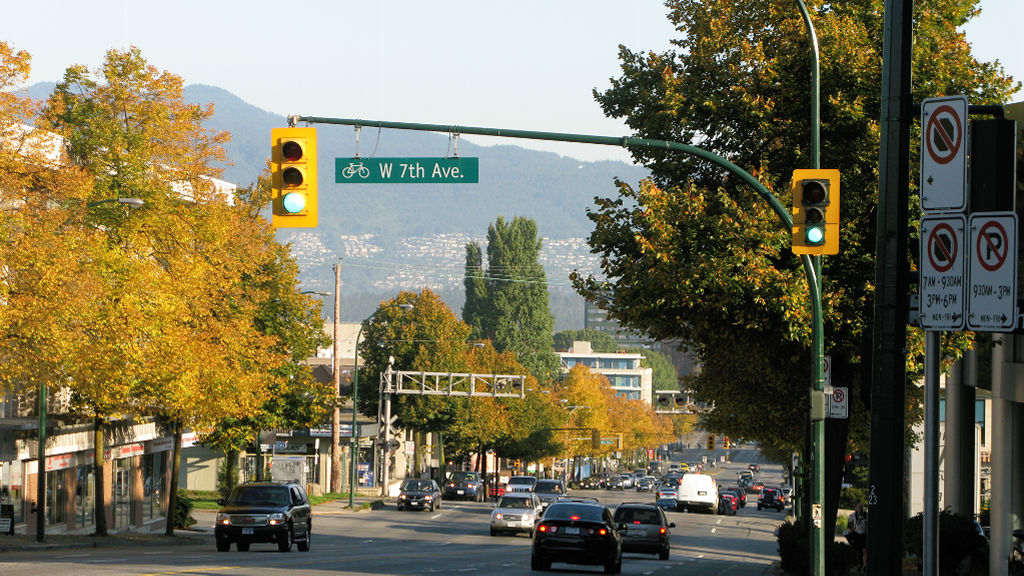
See the bike symbol in the overhead sign? Riding in from the airport it is great to encounter road signs that indicate major through streets are bikeways.
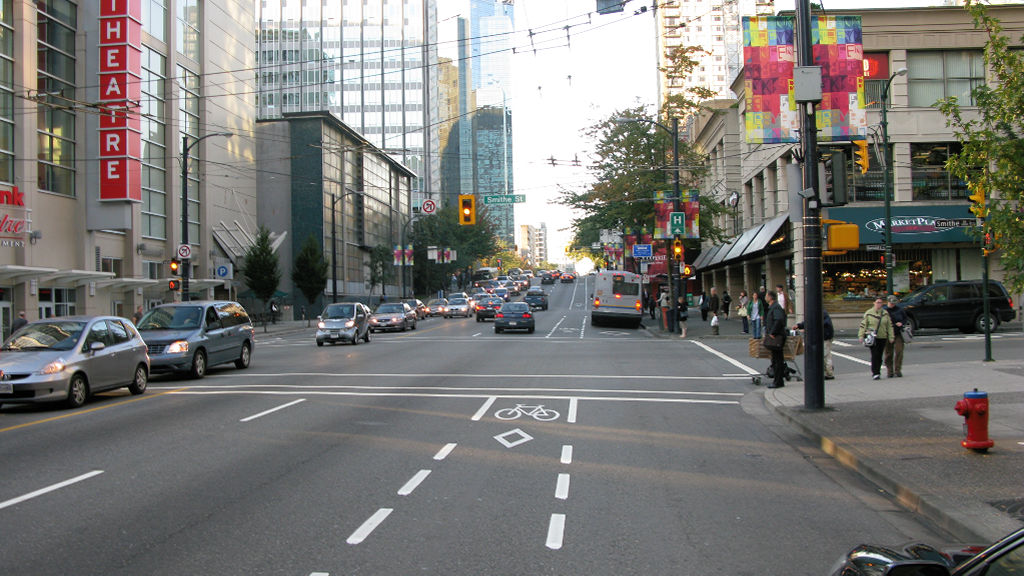
Vancouver has not gone for separated paths on the city streets but for line-marked paths like this. They can seem risky to new cyclists. But they legitimise cycling and grant generous road sharing to the cycling mode. At intersections, you can go through and be at less risk from turning traffic.
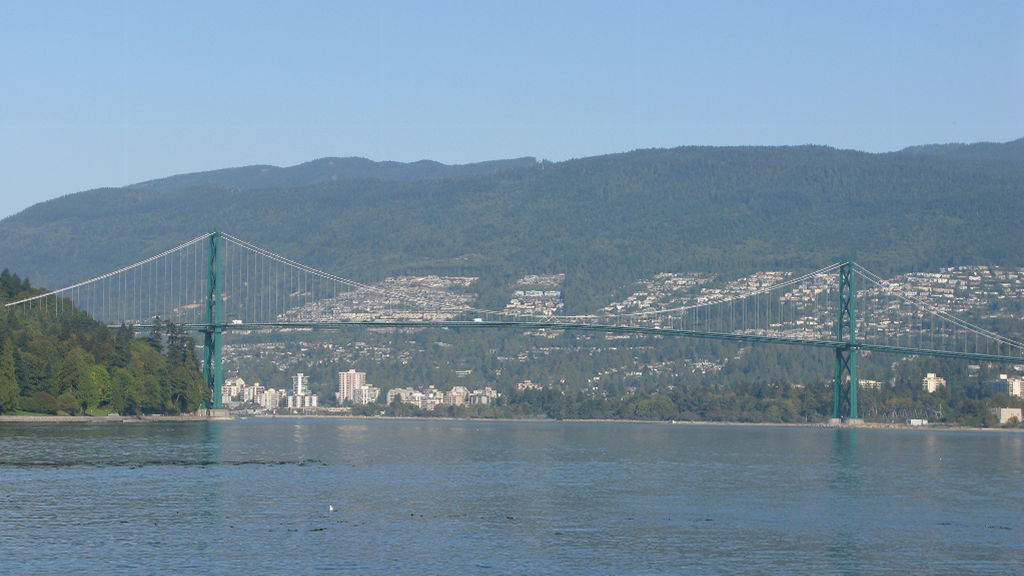
Vancouver is built around a harbour. Most of the city is on the south. Lions Gate Bridge is the cycling link to North Vancouver. The whole main (south) side is one administrative local government area. Perhaps having one large administrative area is a reason they have achieved so much.
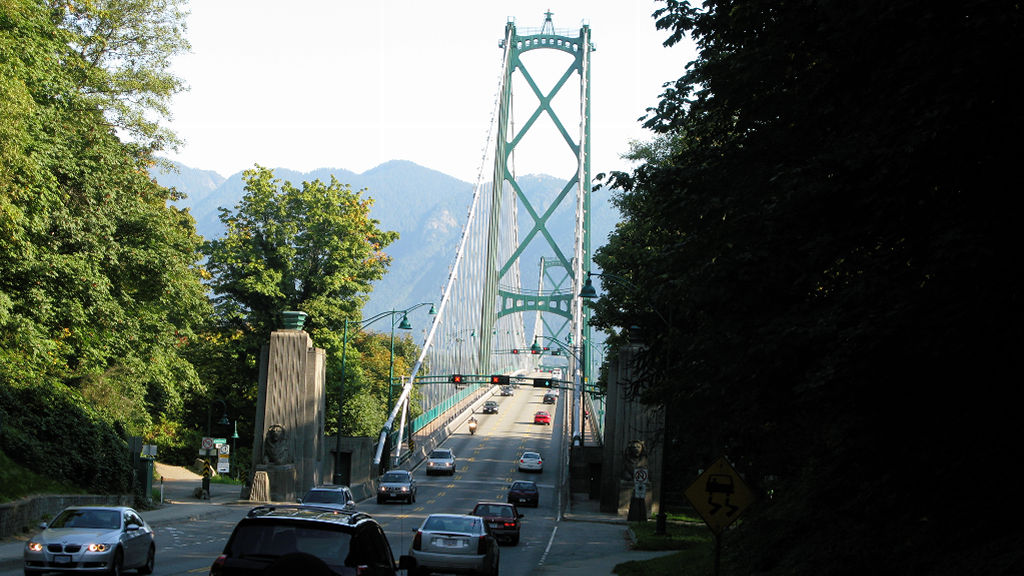
From Stanley Park on the south end of the bridge there is a comfortable cycling approach.
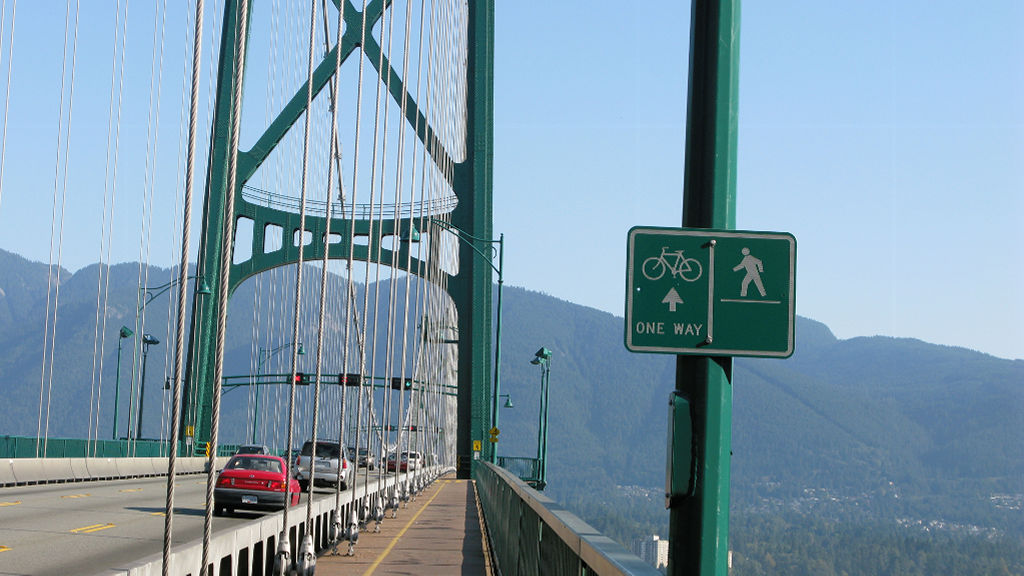
Lions Gate Bridge is one-way on each side due to its narrowness. Compared to Sydney Harbour Bridge, Jacques Cartier Bridge in Montreal or the big NYC bridges, the cycle-way is strikingly open (not enclosed).
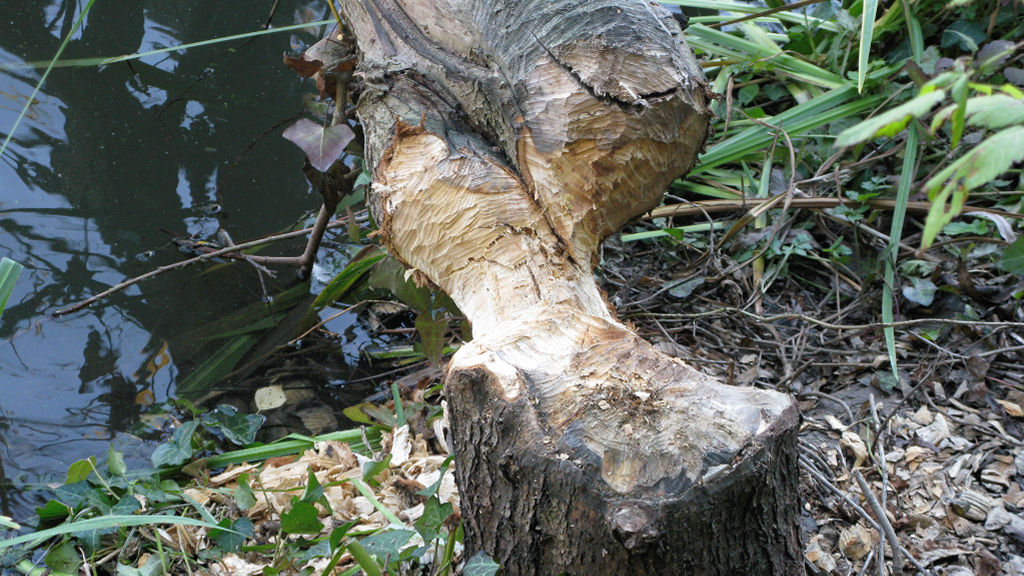
Out of the city today I discover the work of beavers, chopping down trees to make a dam.

Stanley Park is one of the places where recreational cyclists can ride away from traffic. There is a road in the park for cars too. Signs on the cycle-way say, if you want to exceed 15kph then please use the road. Meanwhile, on the road the limit is 30kph and signs say yield to cycles.
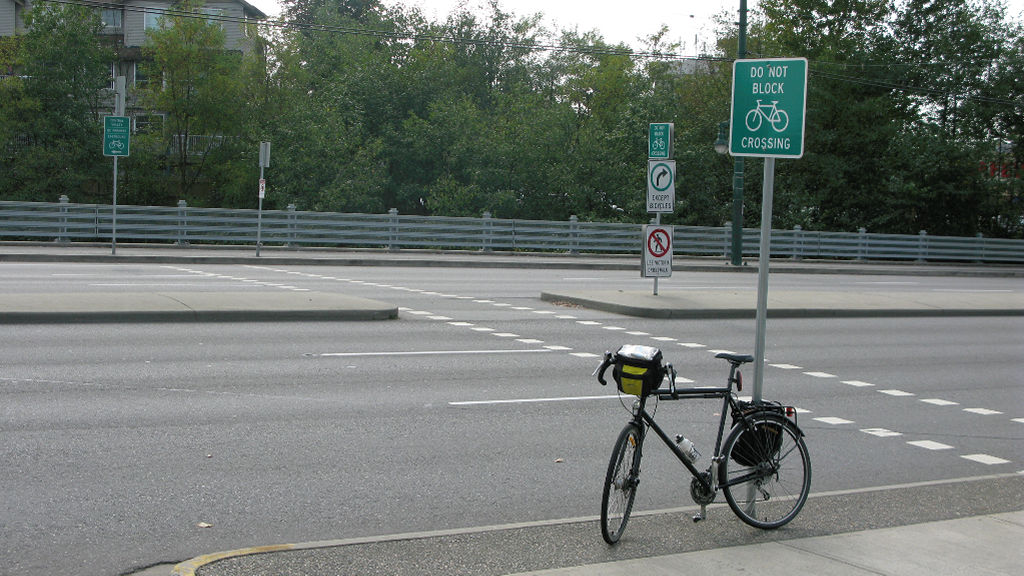
Signs like this legitimise bike riding. They are thoughtful and part of a clear agenda to encourage cycling.
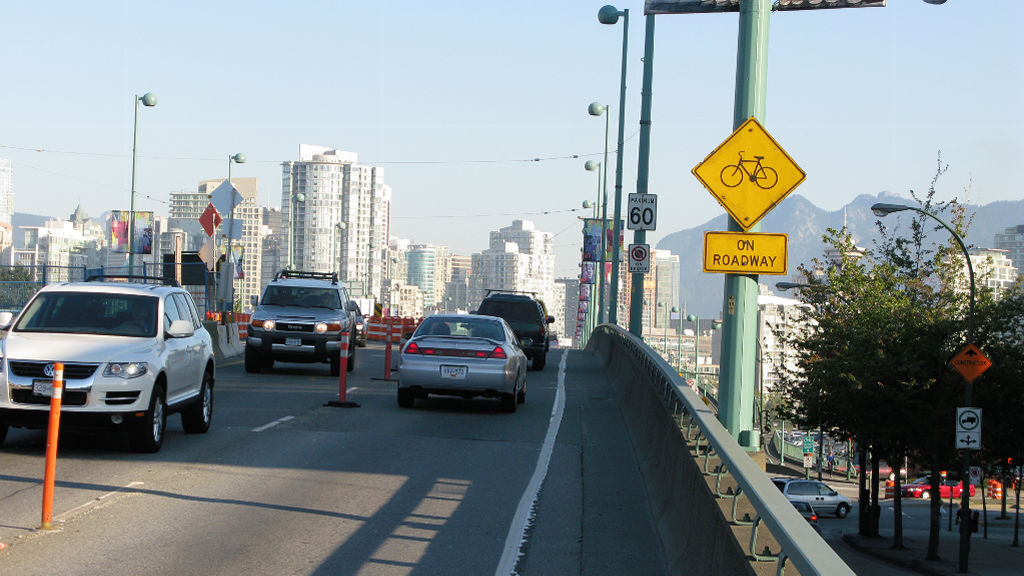
Where a bridge is too narrow for a separate bike lane it is made clear that we may take the lane. And it is not a small sign.
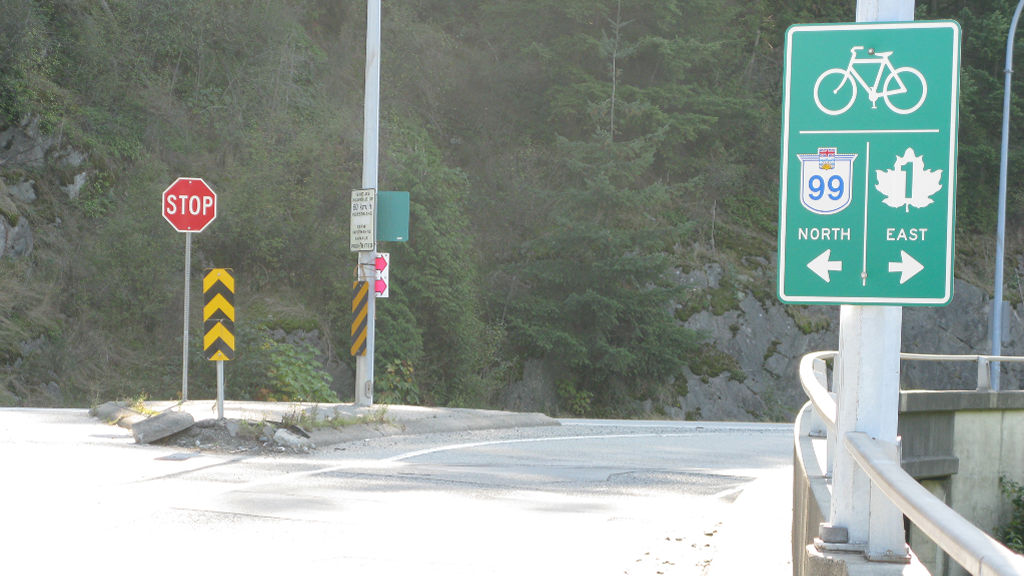
Up on the NW corner of the city fringes, more signage saying we are allowed to cross over Hwy 99. Not surprisingly, motorists have “got it” and I am not being harassed at all.
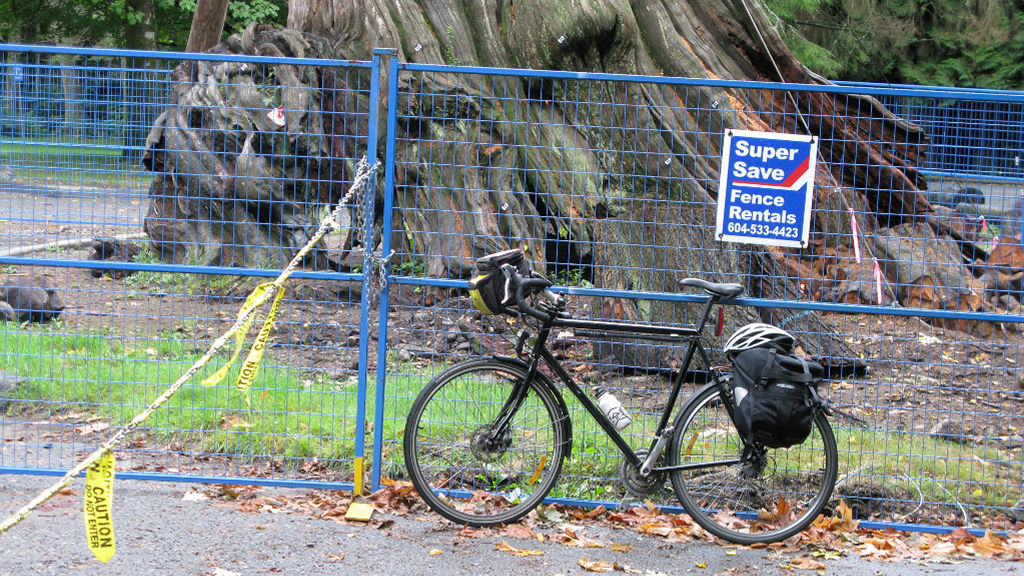
The 2008 test bike using Ritchey couplings, Tiagra shifters, front cable disc and rear cantilever. The outboard BB has started to develop a bit of movement and has me thinking of getting a square taper cartridge BB.
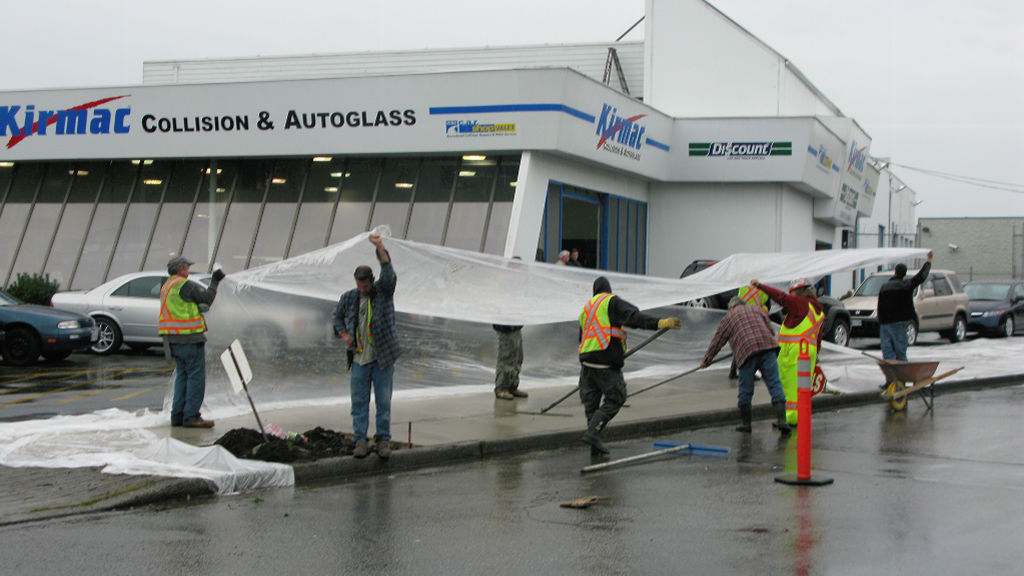
Not about bicycles. It is a rainy day and these guys have done a concrete pour. While the finishers work on the concrete, other workers hold a big sheet of plastic above them to stop it getting wet.

My last day and more rain. This sign underlines the difference between Sydney and Vancouver. In both cases we are allowed to ride in bus lanes. But in Sydney it is not signed that we can. Riding on Parramatta Rd for example in peak hour can be intimidating. In Vancouver it is right up there on the sign that we are permitted to ride there. And, significantly, motorcycles are not.
Just a 100km ride on a day. It is barely valid to make it into a blog. But my only other bike ride in China had been on a Moulton which does not make it in a VWR blog. Plus, this was in sub zero temperature. The water in my water bottle began to freeze.
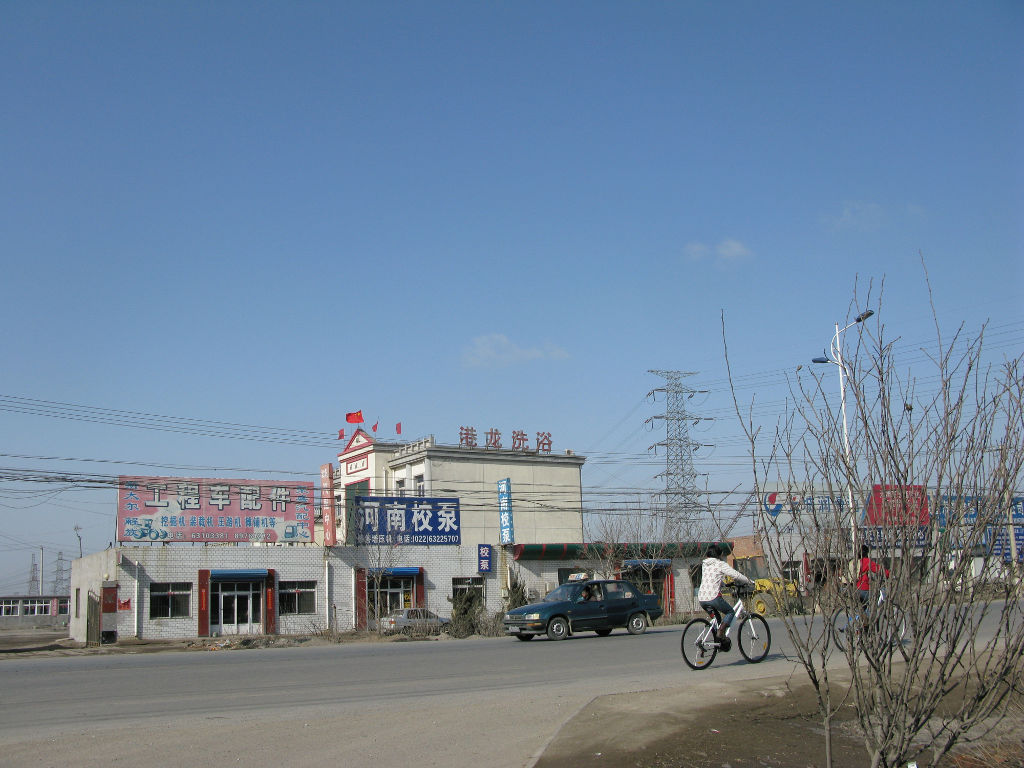
Crispy cold outside Tianjin in the far north of China.
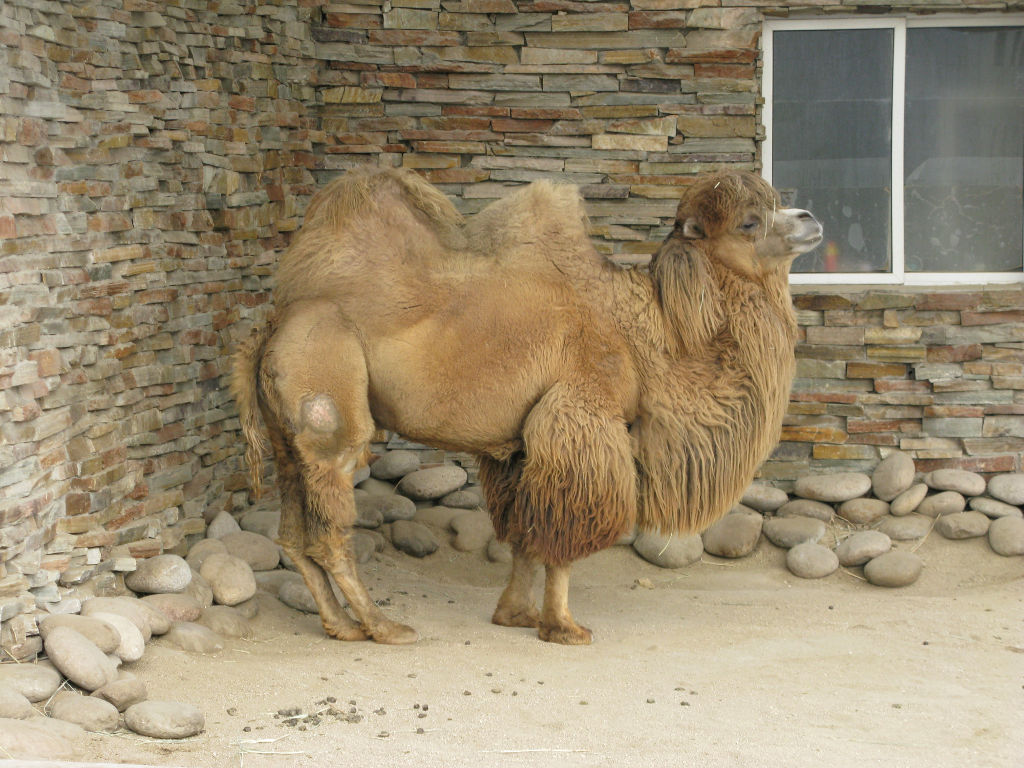
Impressive camel along the way.
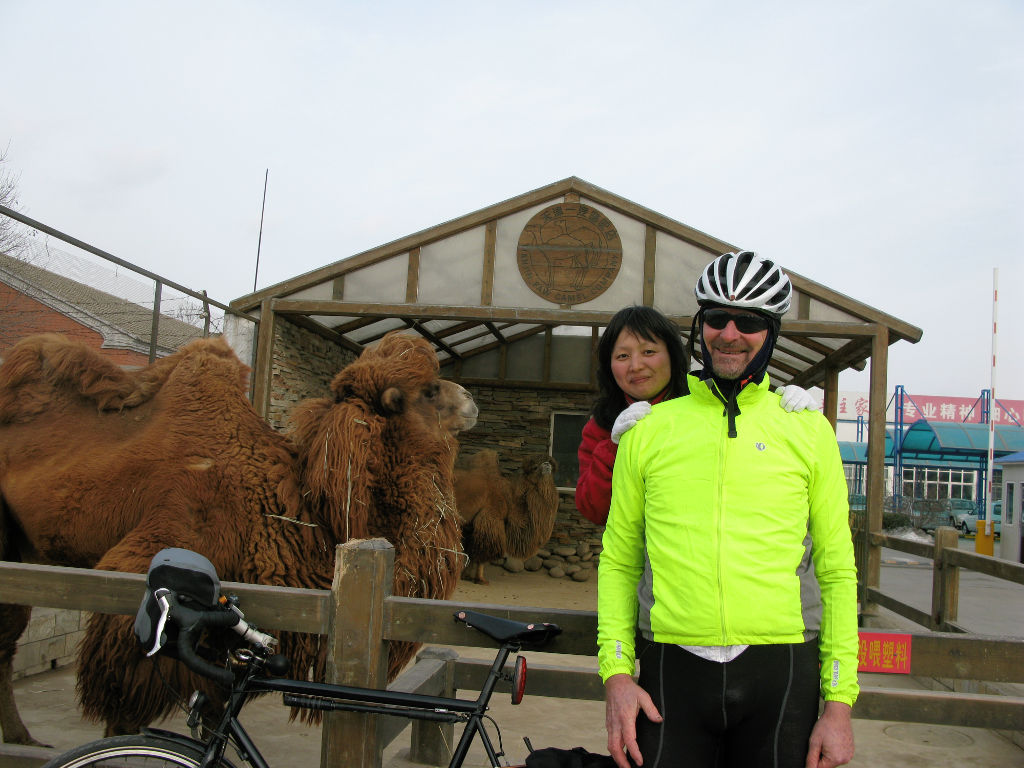
Two girls from the factory were told to accompany me. They seemed to take 100km on a basic bike in sub-zero weather in their stride. I am test riding the Ritchey Breakaway frame.
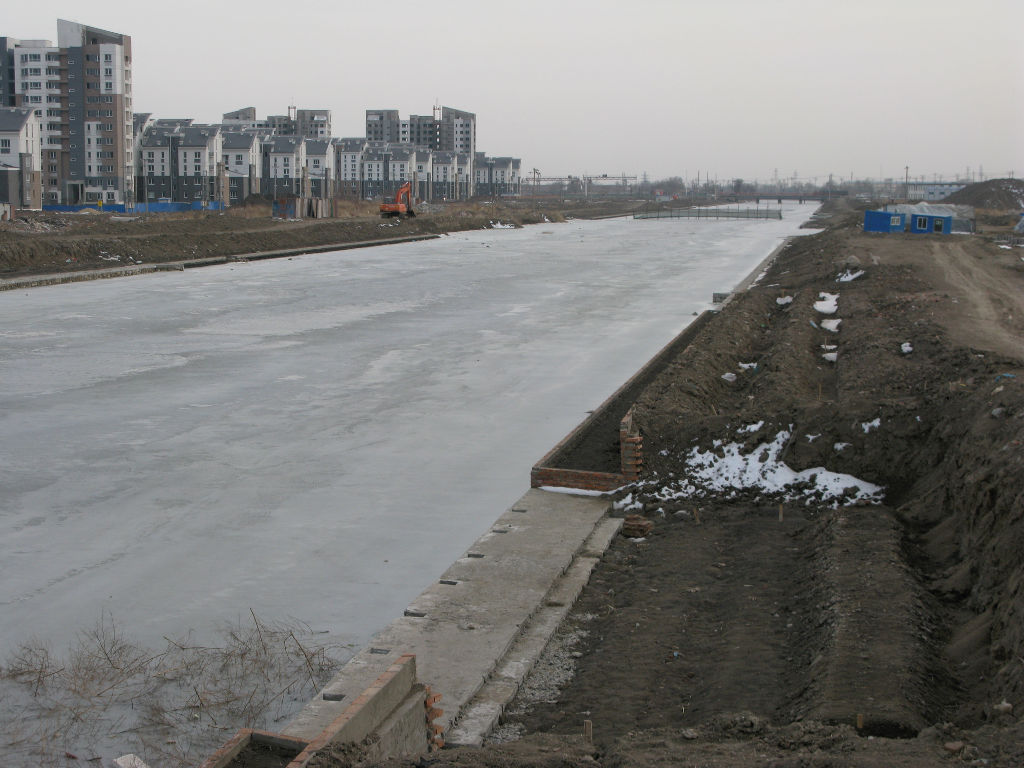
Frozen canal.
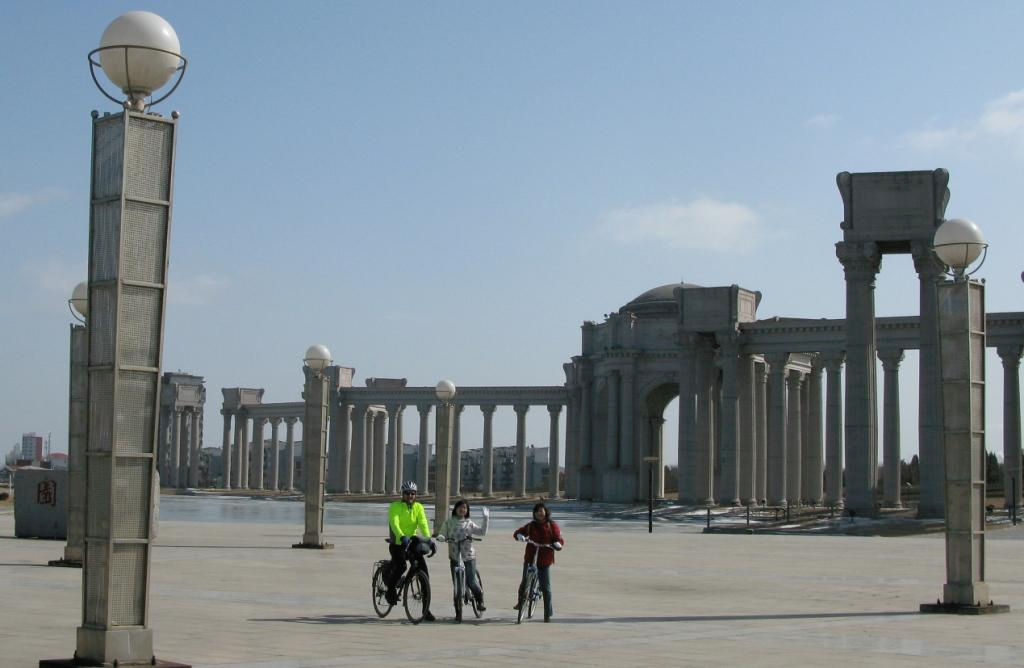
The bitterly cold landscape is without people. We have it to ourselves. Afterwards I get back to my hotel and lie in a warm bath for an hour to thaw out.
Three of us fly into Trabzon which is the most easterly airport on the Turkish Black Sea coast. We head West to Istanbul. To get some variety, after Sinop we go up to Kastamonu on the Anatolian plateau and then West to Safronbolu. Then down to Eregli, then to the Marmara and Istanbul.
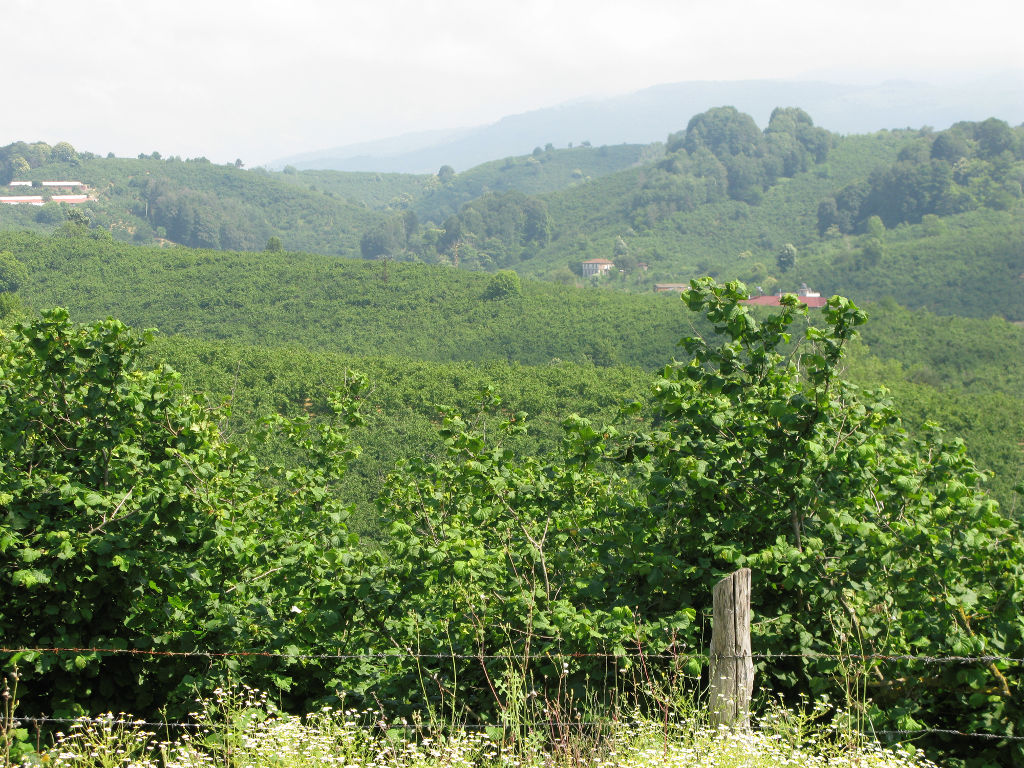
There is very little margin between the vast 1,800m plateau and the Black Sea. So much so that there are lots of tunnels along the road. The steep slopes are the main hazelnut producing region of the world. Locally known as findik pronounced “foonduk”. We are helping to eat them.
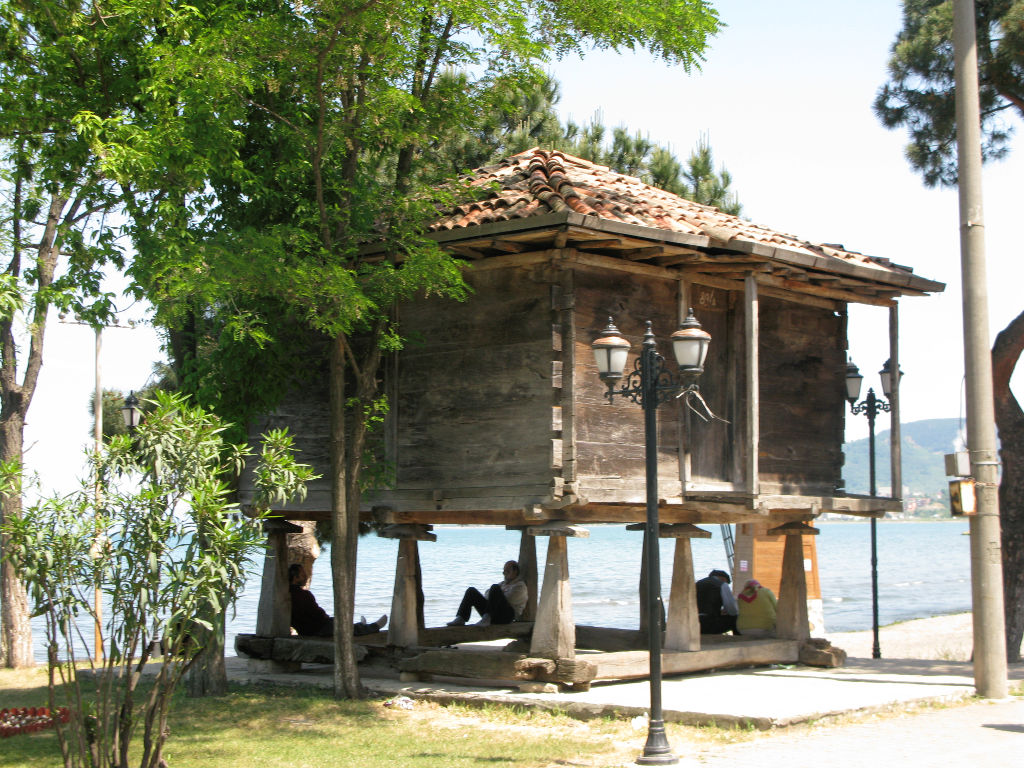
These interesting stone-post structures are typical along the coast. We speculate about why they would be made like this. Perhaps to keep termites away from the wood?
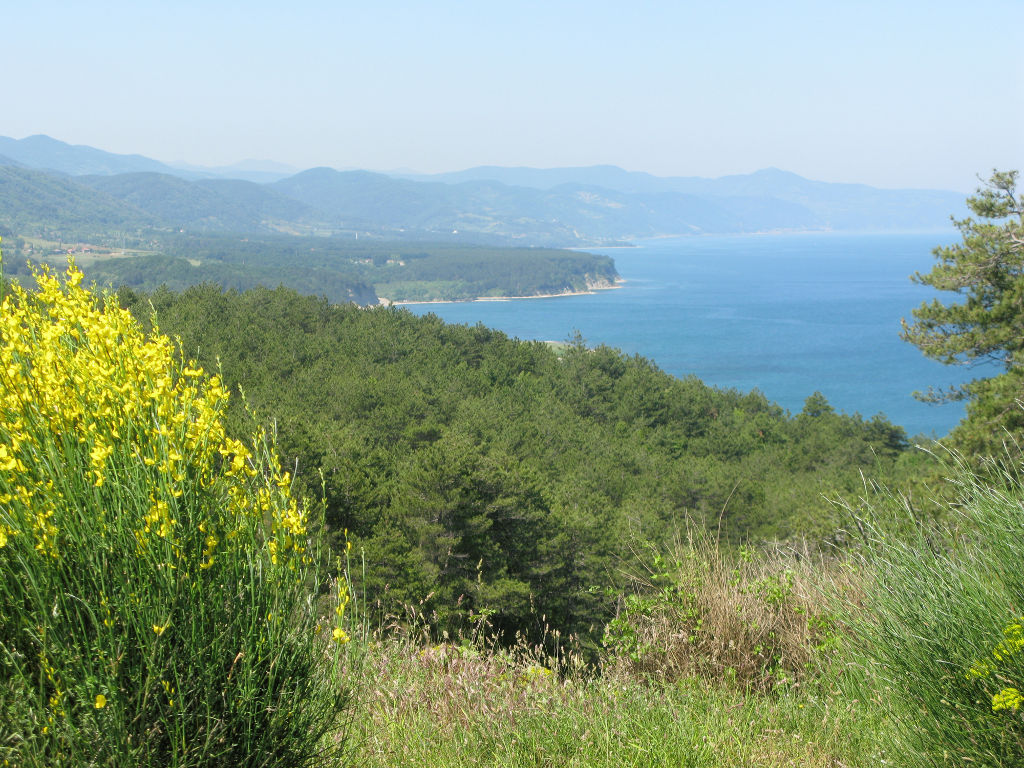
It is a beautiful coastline and involves an average daily climb of over 1,000m. We are keeping our lights on all the time because of the tunnels. Up to 10 a day. Not dangerous if you have lights.
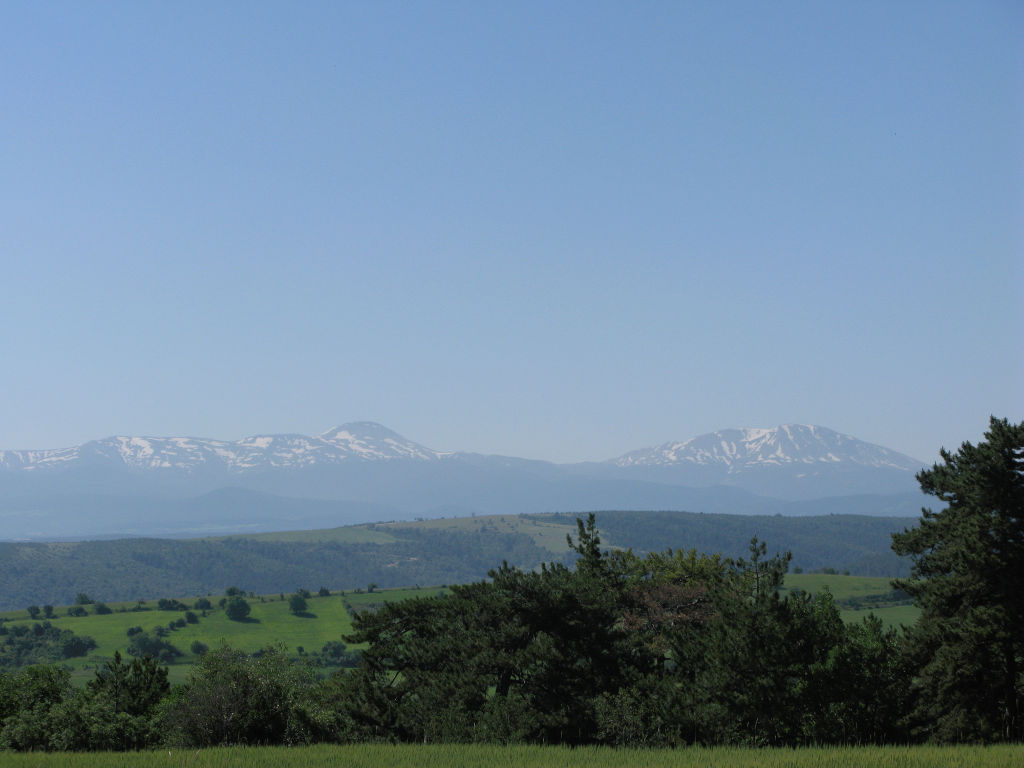
Up on the plateau there is more majestic scenery. Due to the elevation, it is much milder. The winters must be severe. This is west of Kastamonu (which is a great city to cycle through).
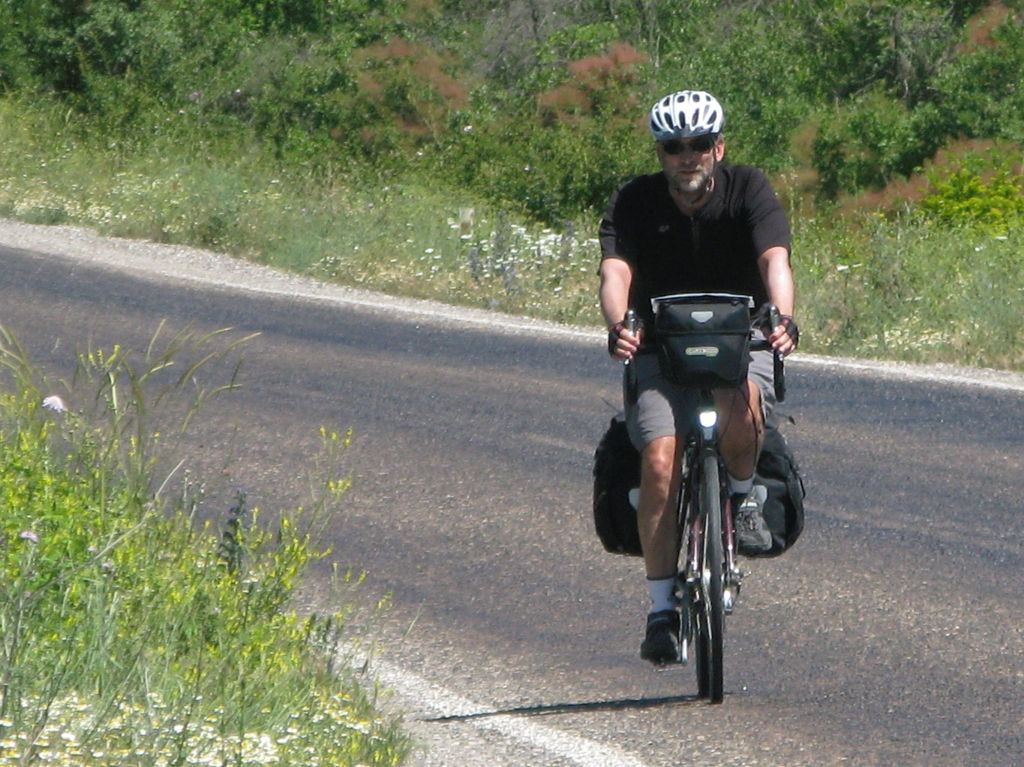
Allan on his 2008 Vivente World Randonneur, approaching Safronbolu.
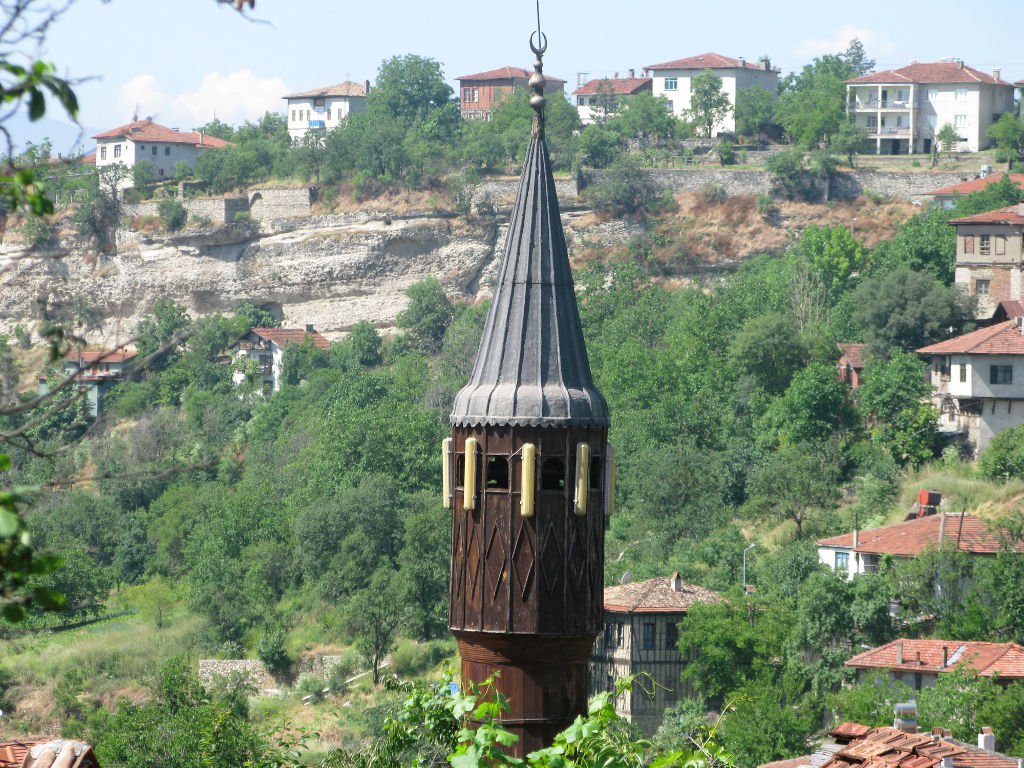
An impressive mosque in Safronbolu. Except for the roof, it is all wooden. This is a beautiful town.
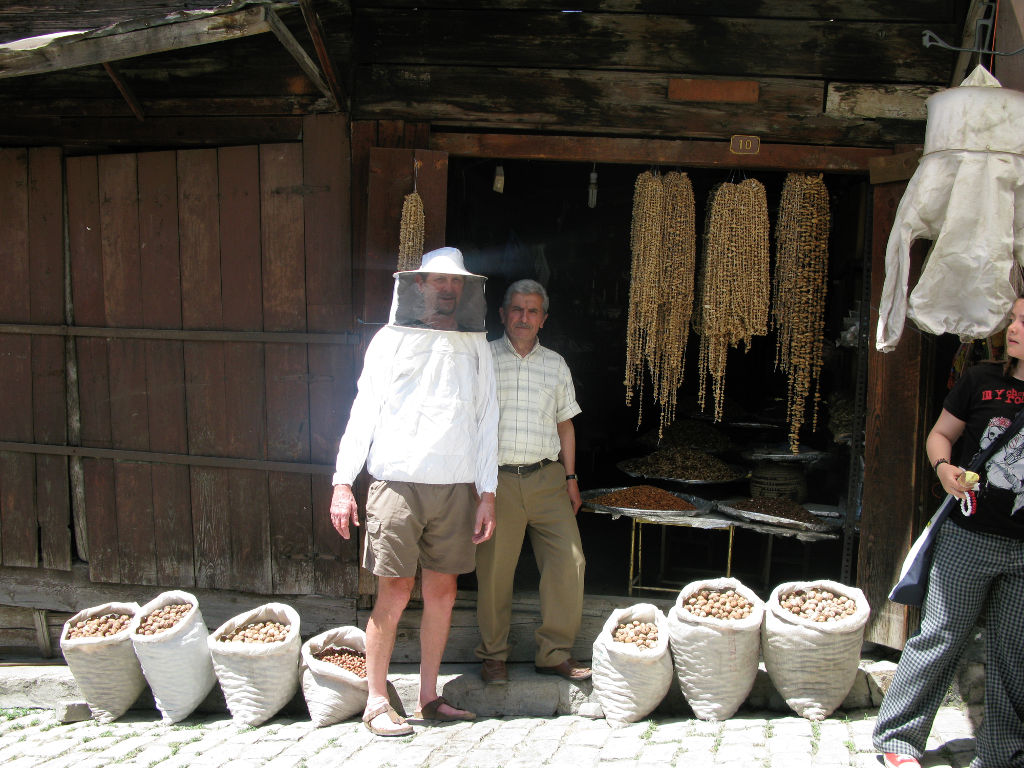
We had a rest day today. There are lots of walnuts, hazelnuts and bee hives around here. I could not resist the bee suit and bought it for only 20 lira.
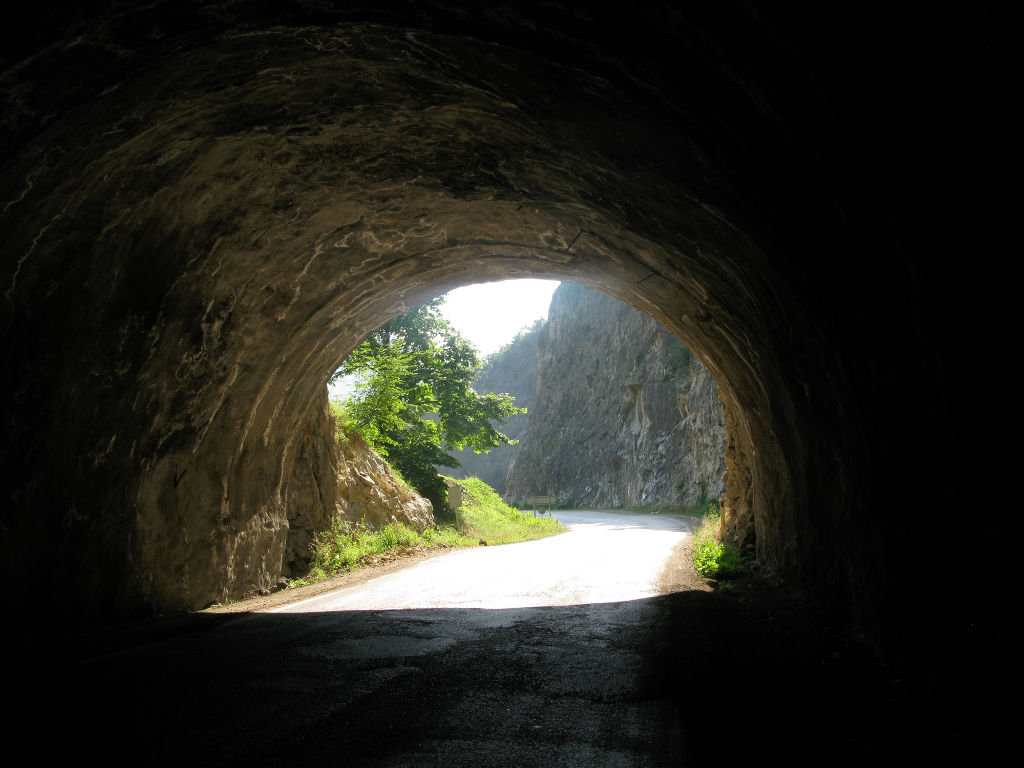
The dogs in Turkey are very threatening to tourers but only to the rider in front. There was one waiting just outside this tunnel today. I deployed my latest defence – a water pistol loaded with a mix of chilli powder and water. This enraged the dog but getting it in the eyes worked perfectly.
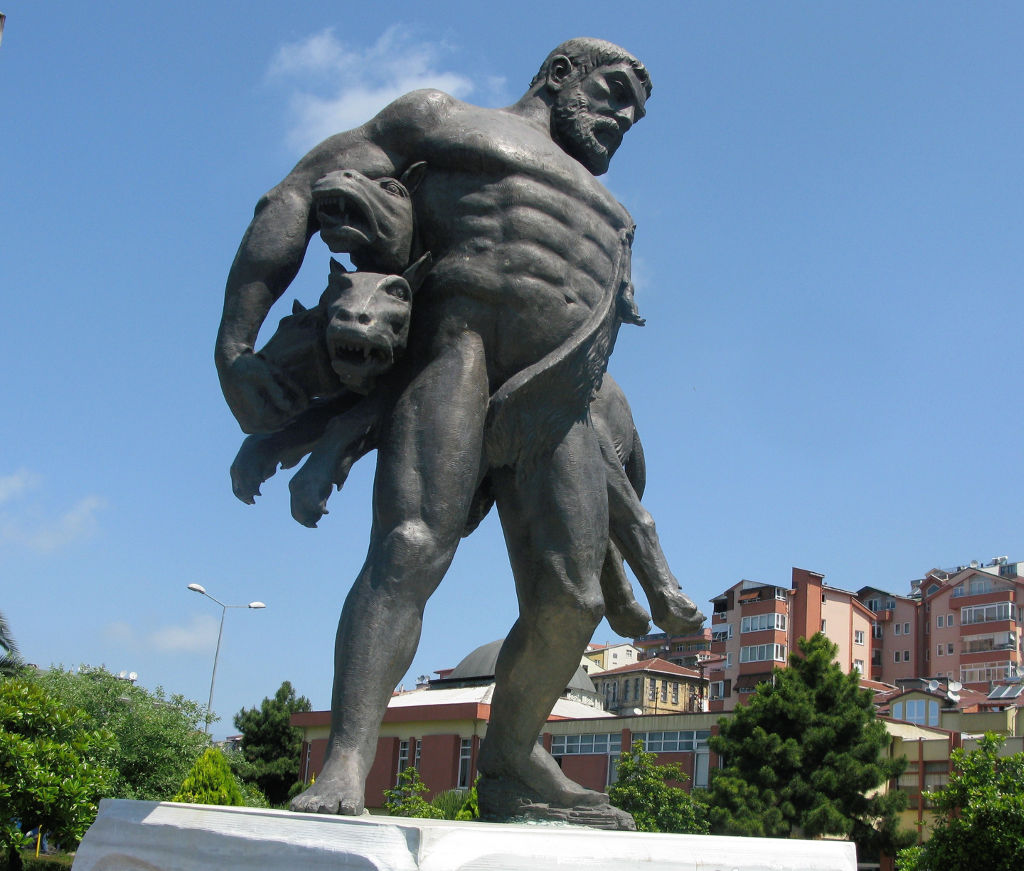
Near to Ergali today we pass a cave outside of which Zeus slayed a three-headed dog. We feel a special affinity with Zeus.
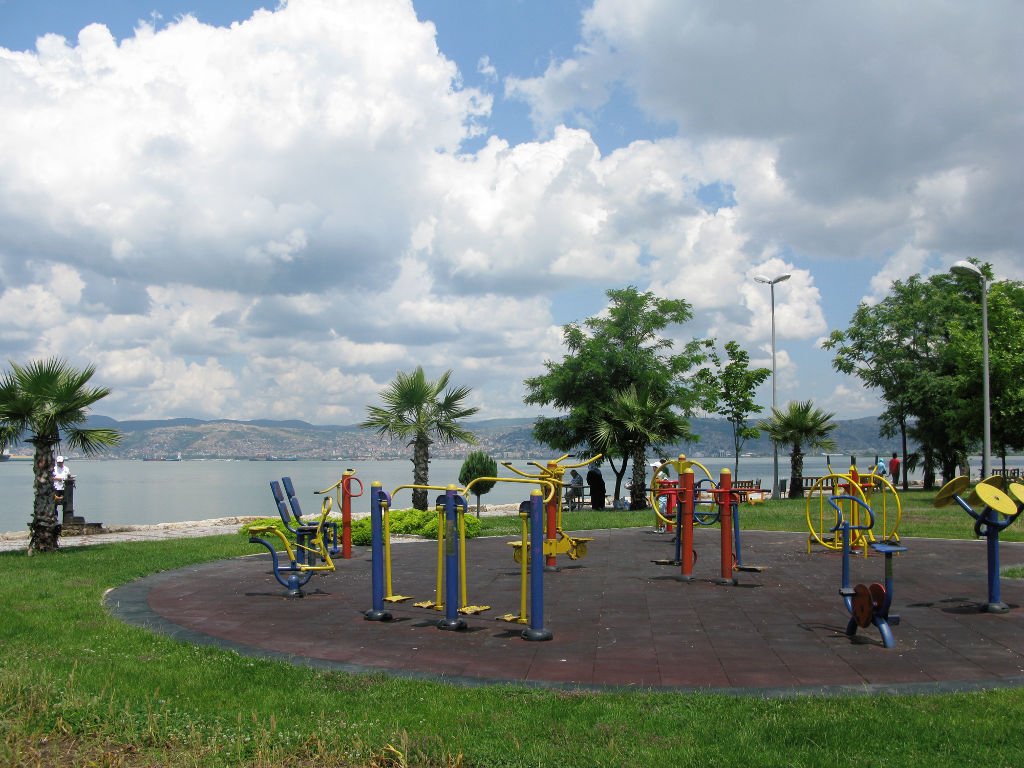
On the Marmara Sea coast now. Public exercise equipment is commonplace and typically used by all age groups, both male and female. It is not just for extreme exercise types of people. Turkey is quite ahead on this.
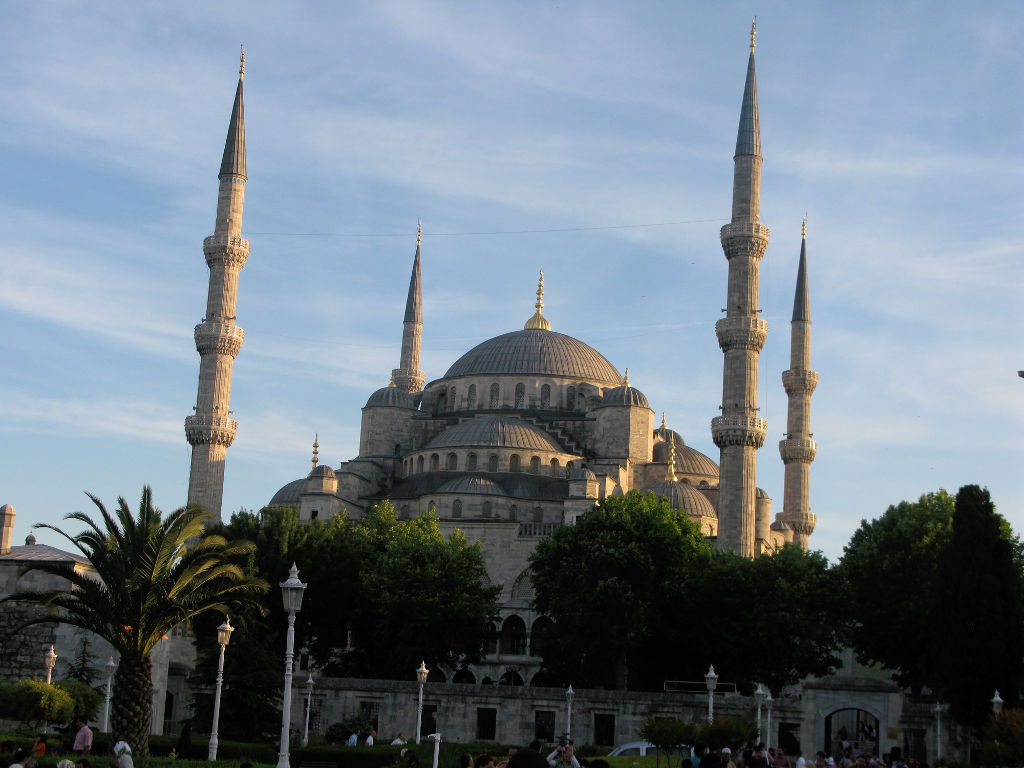
The Blue Mosque in Istanbul. For us it is 1,400km since we started in Trabzon. Tomorrow we will ride to the airport and search for cardboard and manufacture our own bike cartons.
We flew to Tehran and got the bus to Tabriz where the tour started. We rode through Ardabil reaching the Caspian Sea at Astara. We then mostly followed the coast as far as Sari then got the bus to Tehran and spent a few days touring in Tehran before flying out.
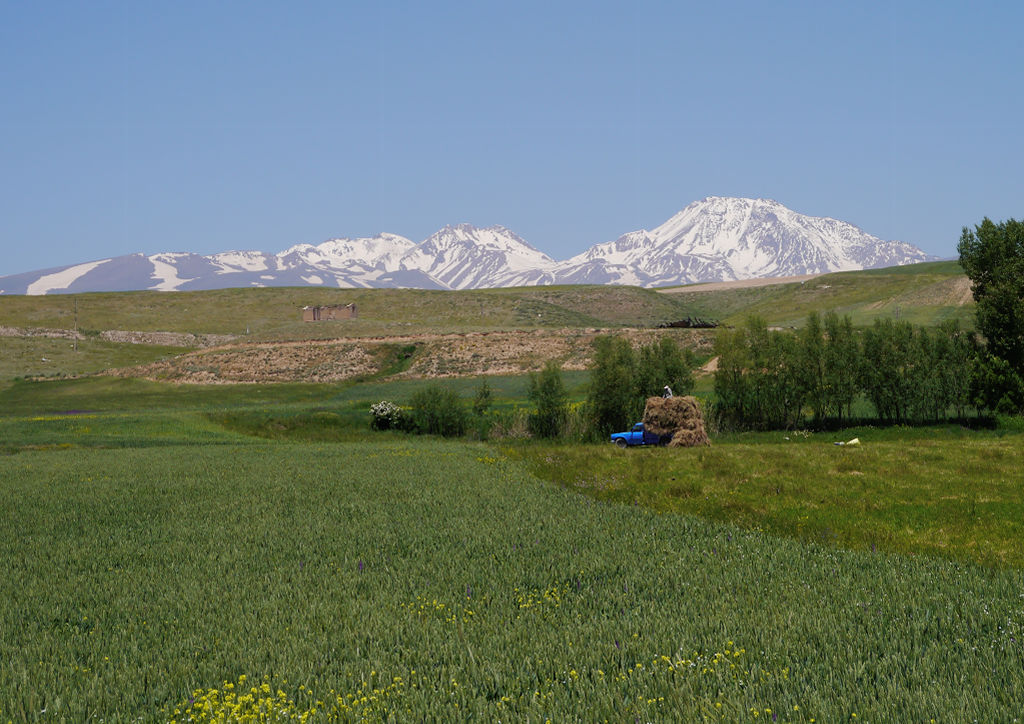
Climbing east from Tabriz, even in mid-summer the snow doesn’t melt. This is big country with big mountains. Notice the blue ute being loaded with hay. Iran is the world capital of blue utes.
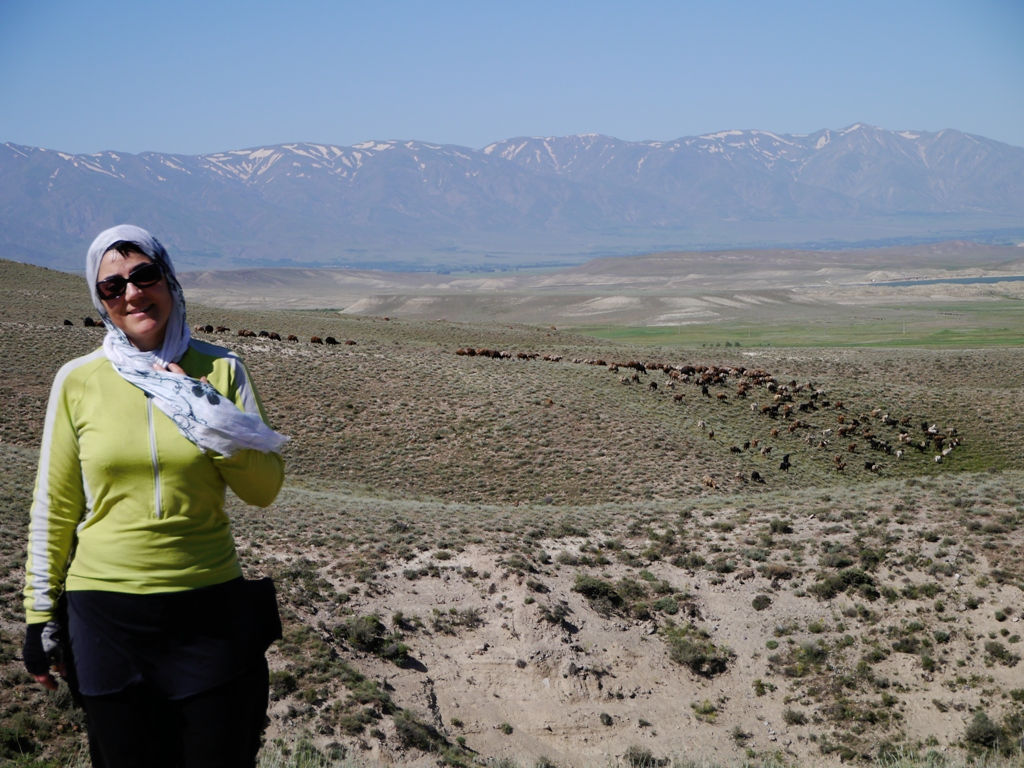
Big country and the best way to see it and to actually be there is on a bike. Women need to cover up but it is not too difficult.
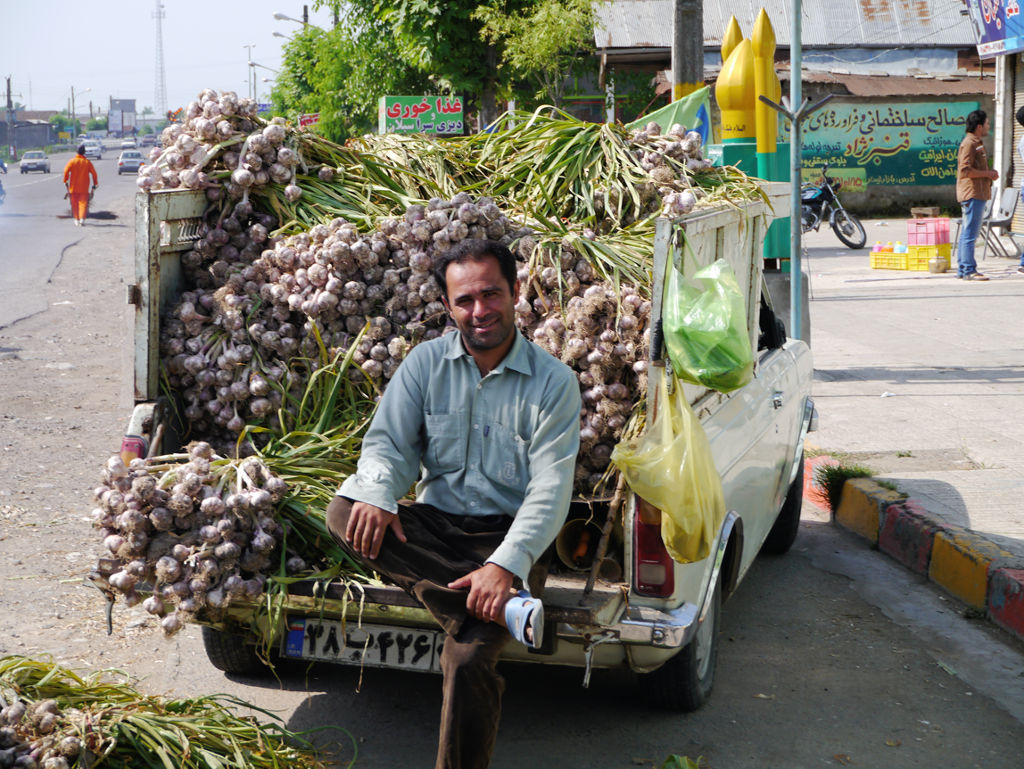
Trying to prove me wrong this garlic seller has a white ute. There isn’t a friendlier country than Iran in the whole world.
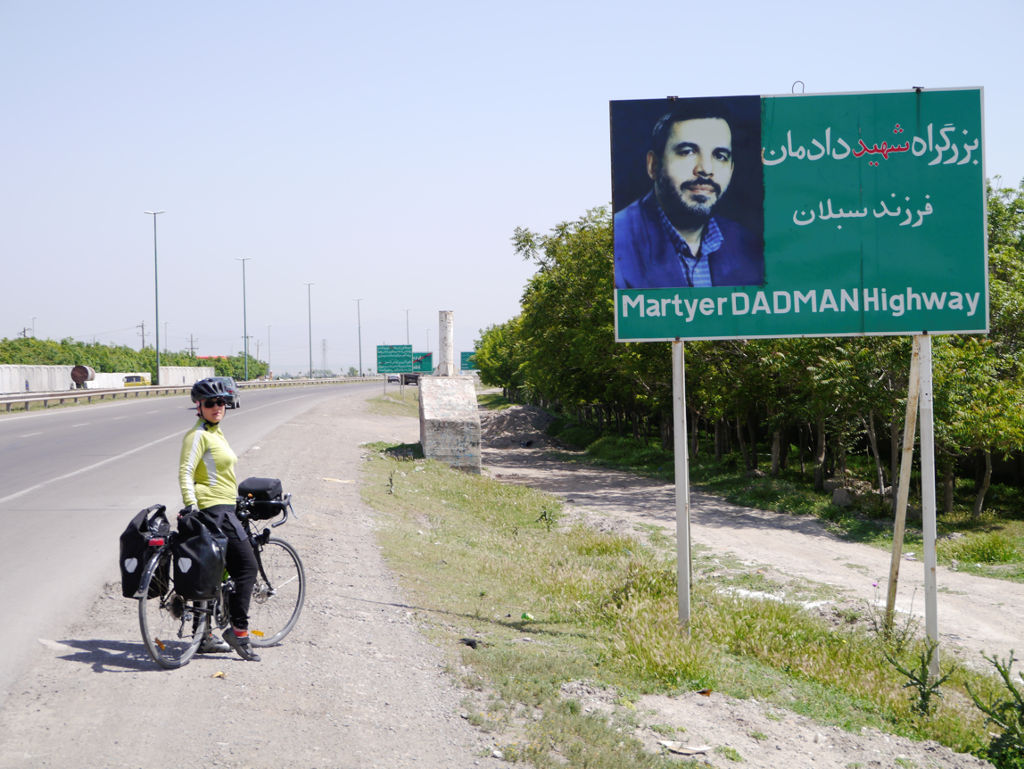
The roads are very good. For example, far better than the USA or Australia. Smooth and wide shoulders. Quite often they commemorate martyrs. Signage is good.
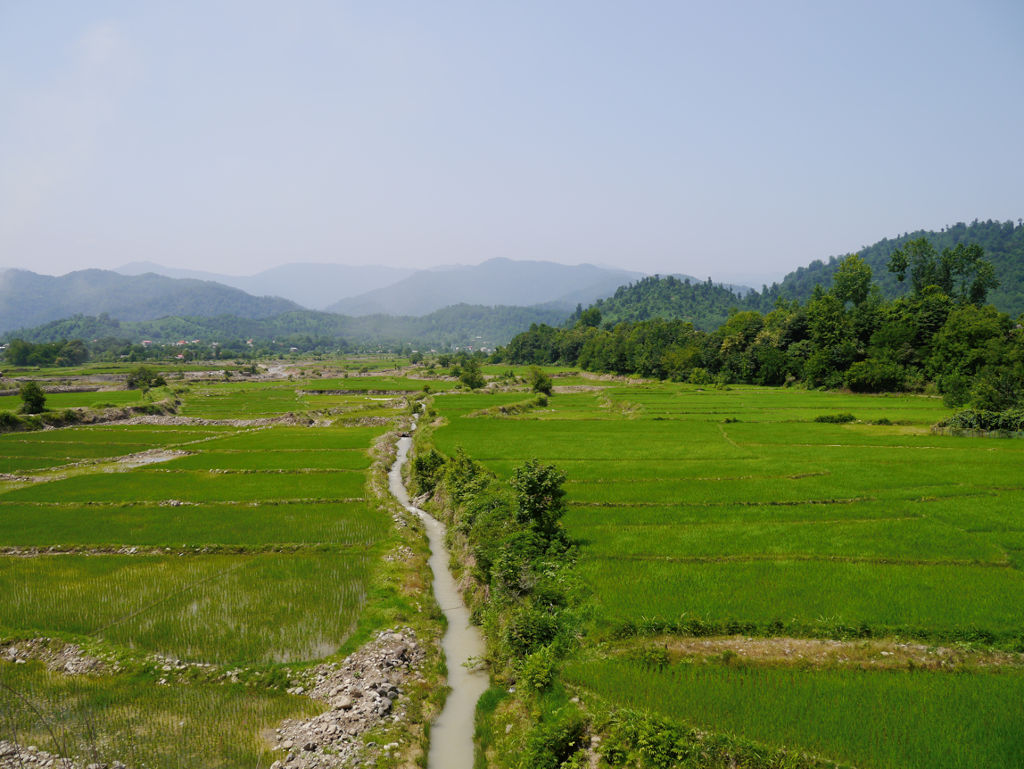
The southern end of the Caspian Sea is a very rich agricultural zone. Rice is one of the main crops. Also, tea, kiwi fruit and nut crops. Although the rainfall is low the snow melt provides ample water.
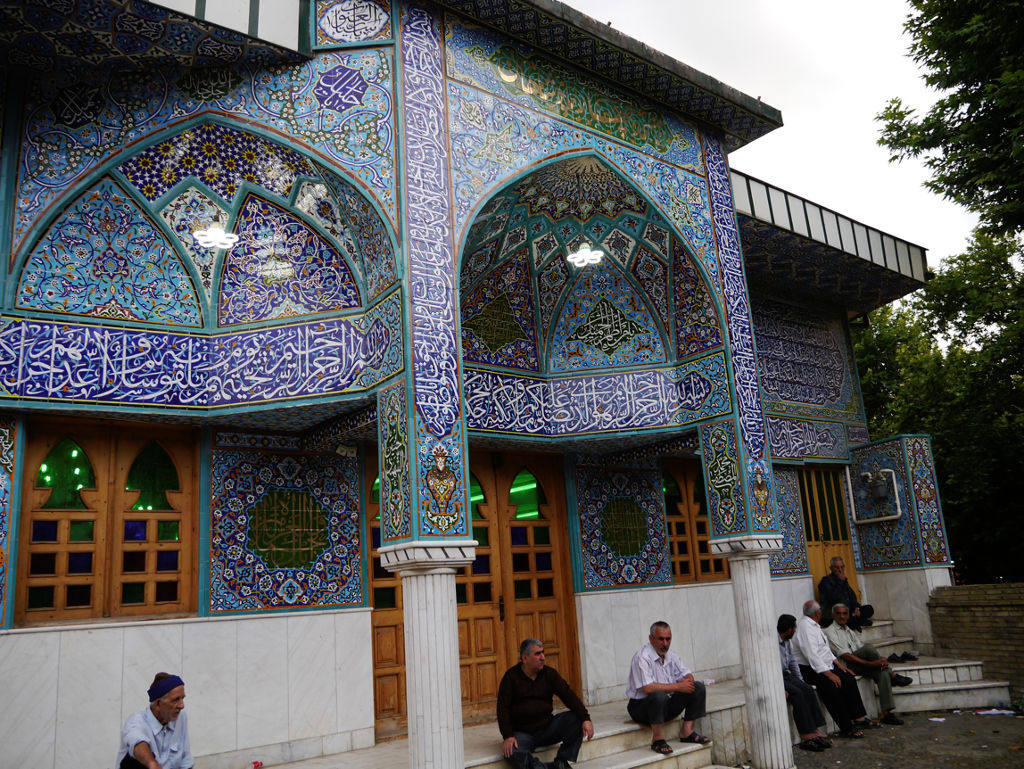
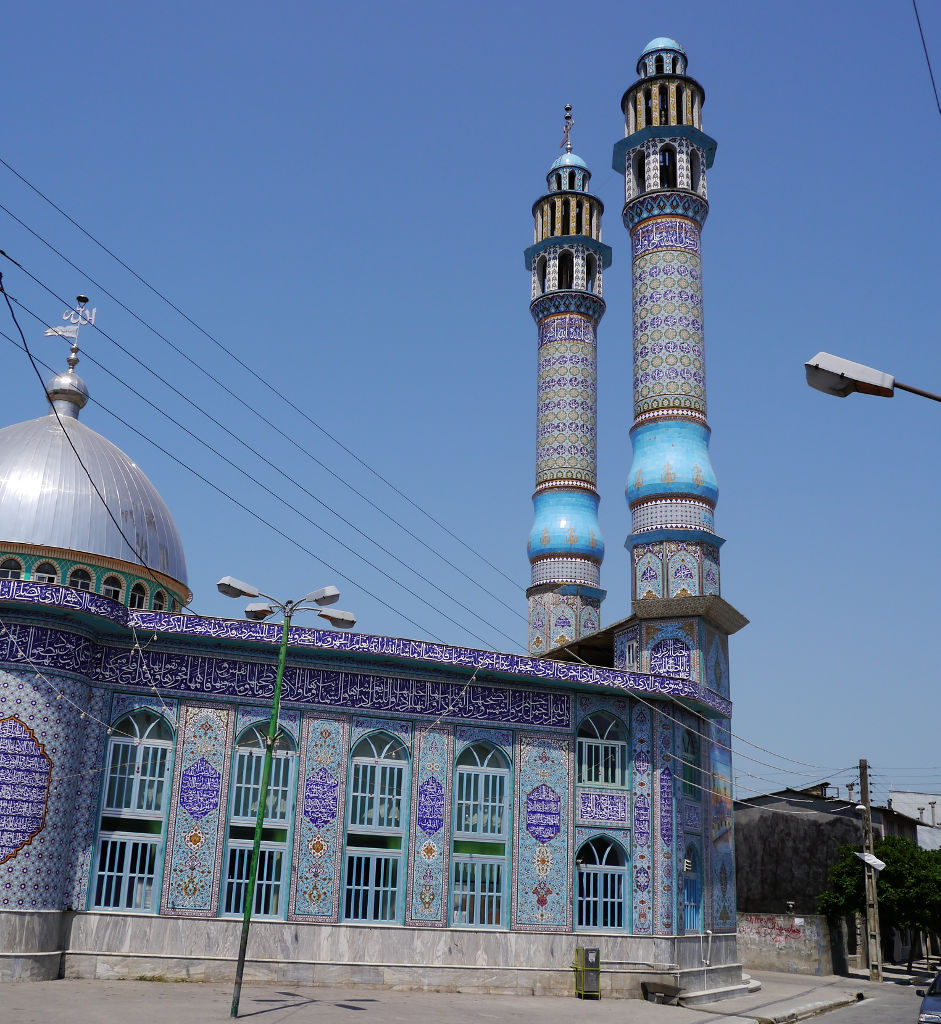
Exquisite ceramic work abounds. Not just on mosques. Many public buildings, even water fountains, feature beautiful ceramics.

We played the tourist role and took the cable car up to see the view of the coastal are at the south end of the Caspian. This sea is below “sea level” and extremely salty.
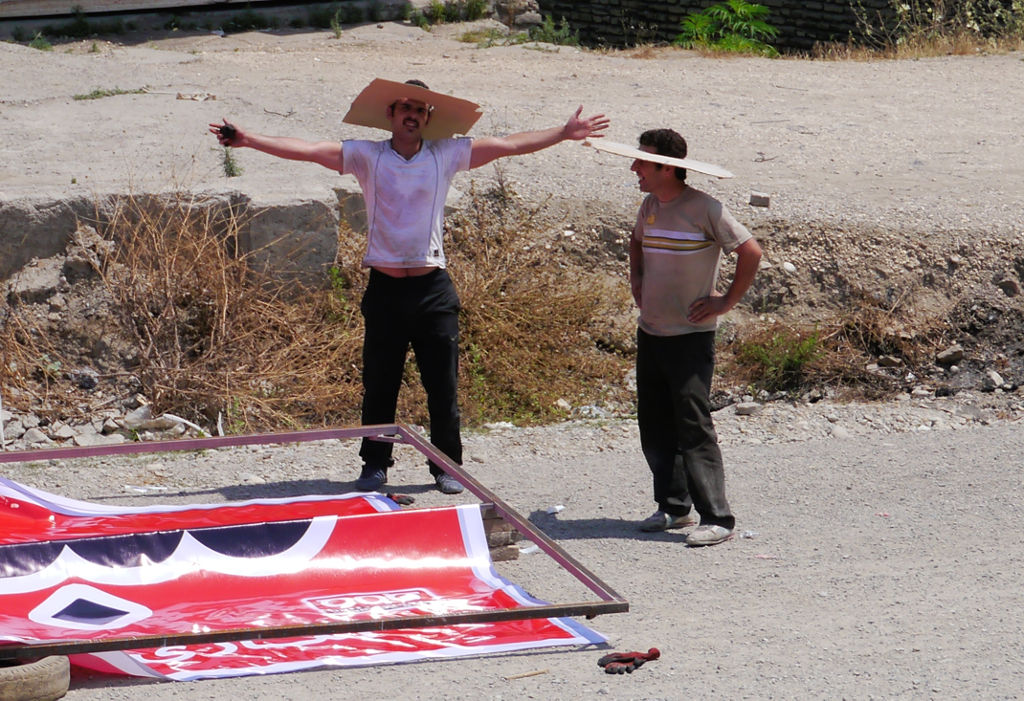
These guys have made sunhats out of pieces of cardboard.
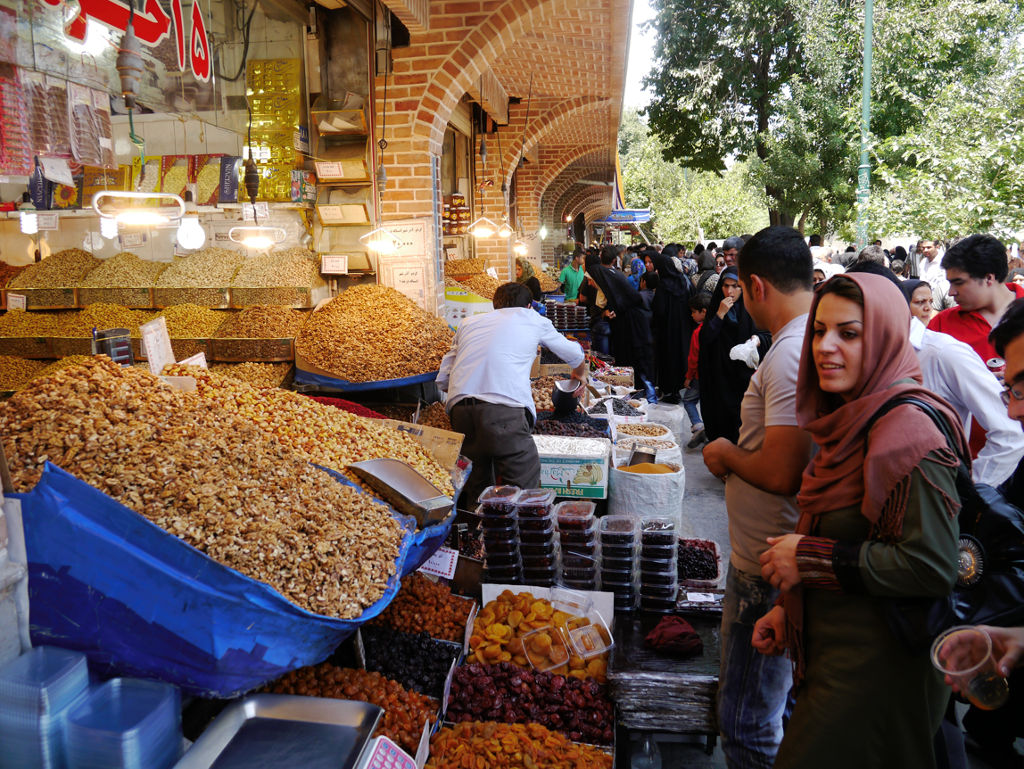
The food in the bazars is amazing. So many nuts and dried fruits. You can get lost in them and need to take care. Not that they are dangerous. It is normal to see businessmen counting out thousands of dollars in public. That means it is safe.
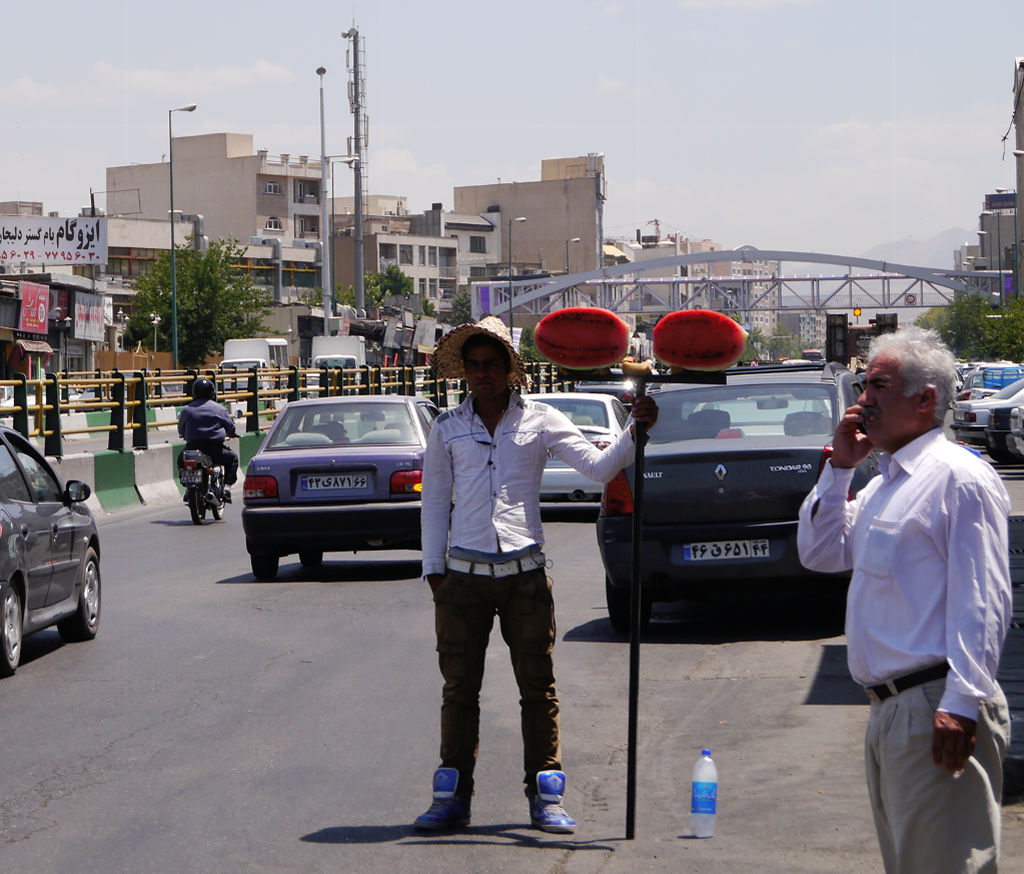
Tehran itself is easy and safe to cycle around. This guy is selling watermelon right out in the traffic. These days with a gps on your phone and a downloaded map you won’t get too lost. Note though that google is blocked in Iran.
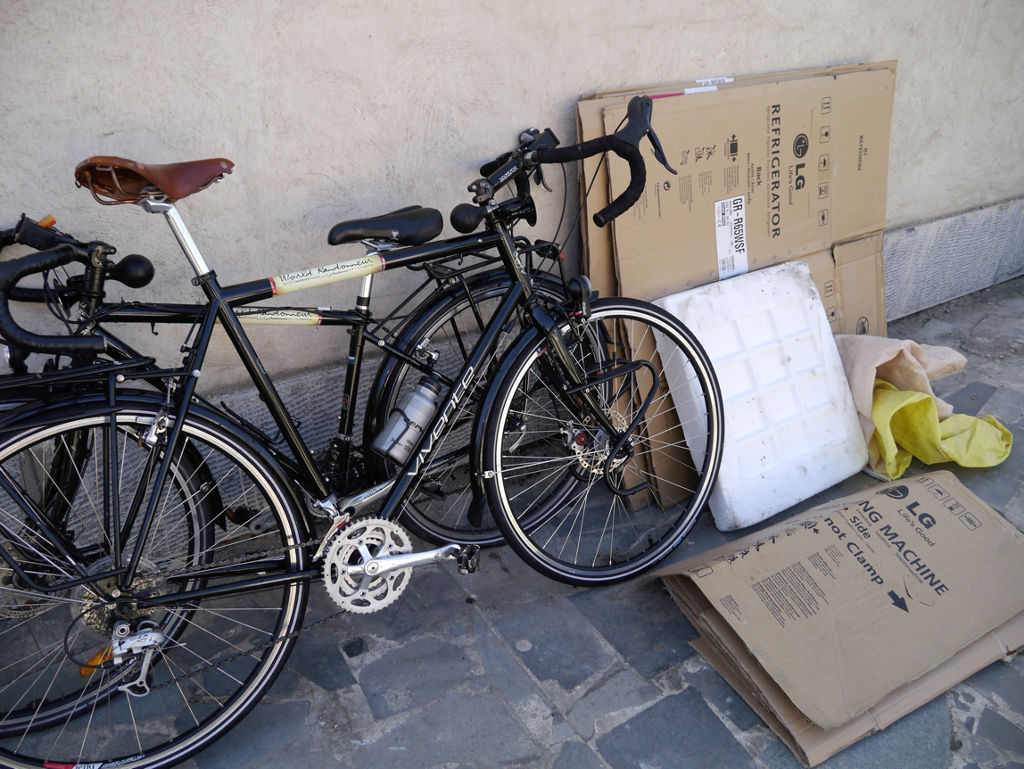
Time to go so the cardboard search is undertaken. Some refrigerator cartons are soon found. Note the leather saddle being test-ridden. It was a fail. A Taiwan copy of a Brooks Team Professional.
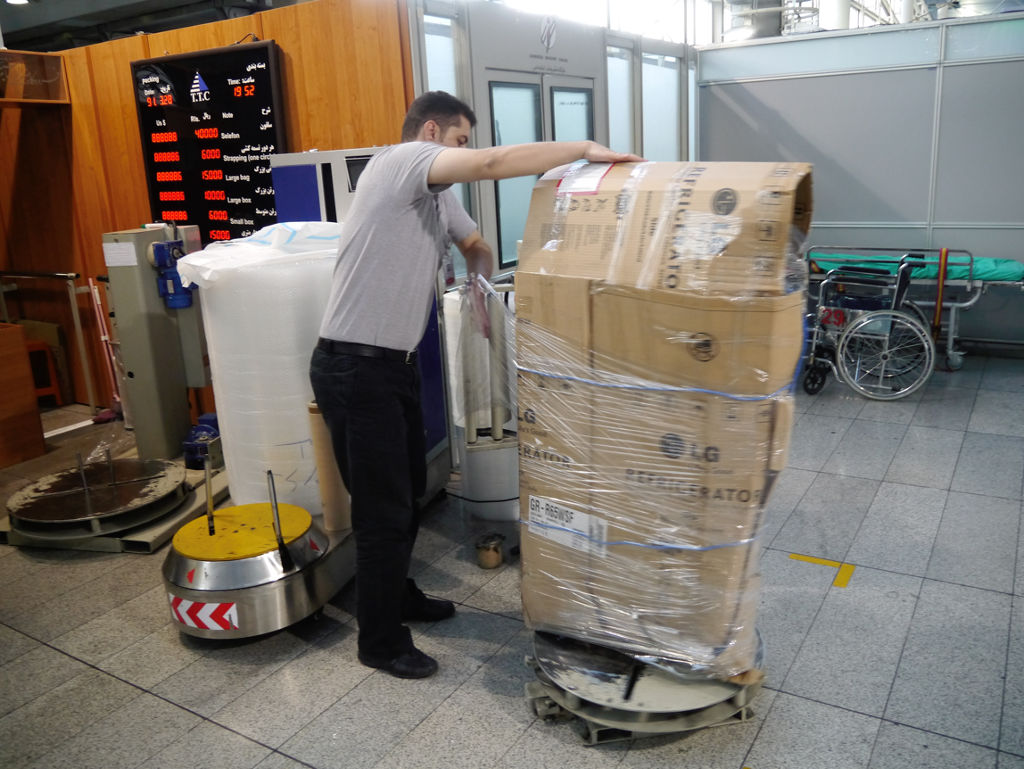
At the airport (which is a blue-ute ride out of the city) the plastic wrapping machine finishes the job. It is a good idea to look at airport websites to see if they have these machines as they save a lot of worry.
After decades of wanting to ride in Africa, Vivente World Randonneur has made a start in Rwanda, home of the Congo-Nile Trail. The trail is mostly on the Congo side. If you just ride the trail you don’t cross the mountain that is the actual watershed. But over a few weeks, we ride all over the country, mostly therefore on the (surprisingly) good roads that Rwanda has. One bike has 700 x 1.75” tyres (Smart Sams). The other 700 x 35C (Marathons). No punctures.
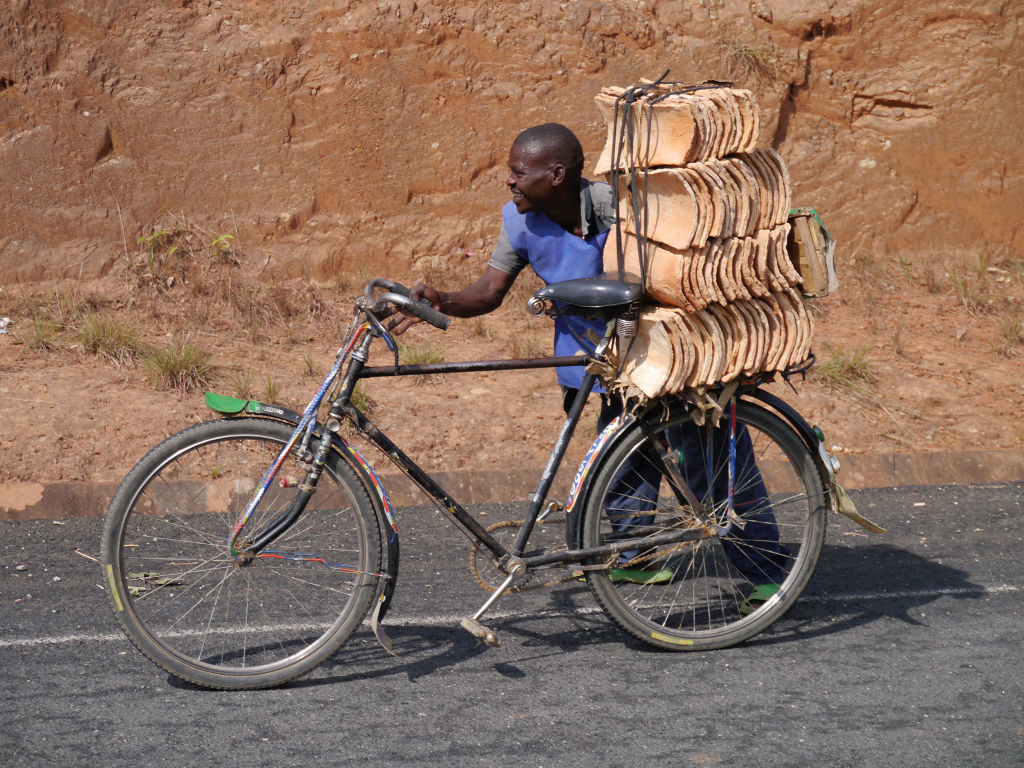
Not long out of Kigali we see that daily life in this very hilly country involves pushing loads up hill. The local bikes are all single speeds. They are really into their bikes.
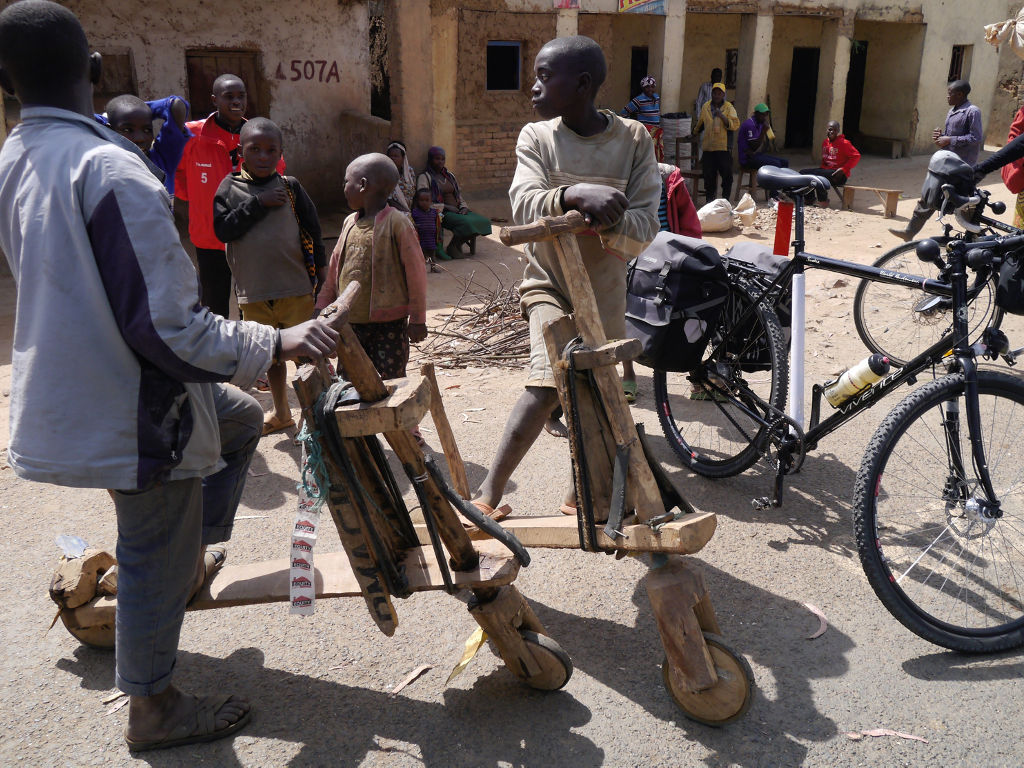
In the mountains the boys have wooden scooters. Some are big and able to carry another boy. They also have other toy-like things they have made basically from whatever they can find. They play endlessly with their scooters and balls and stick-runners.
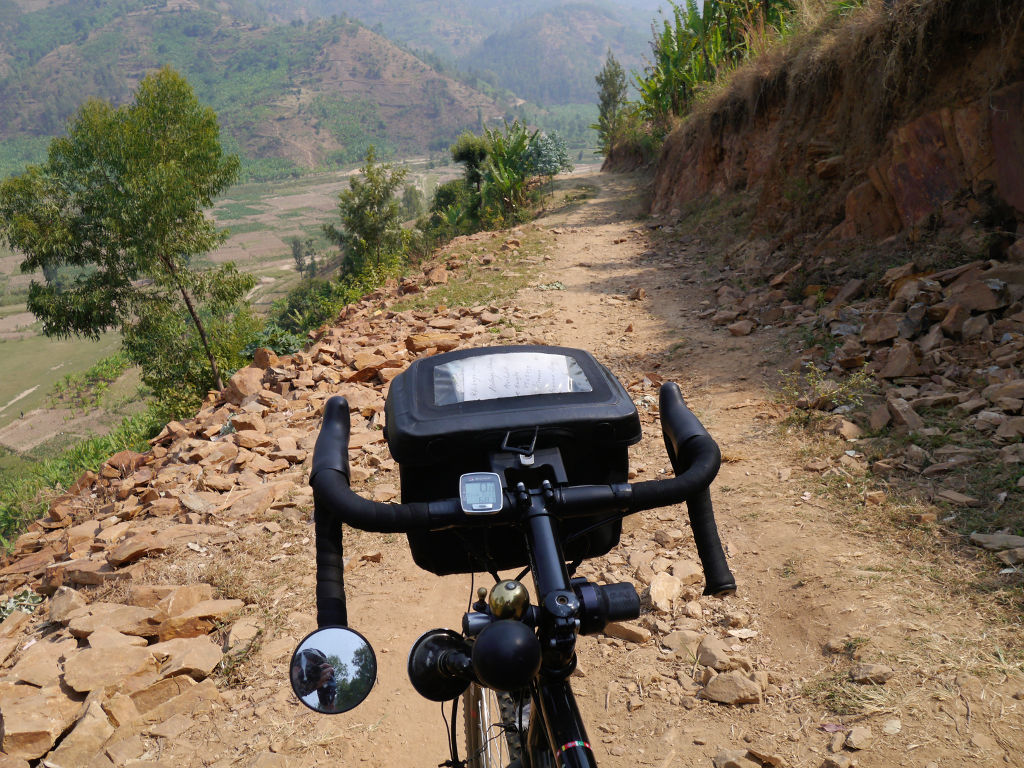
The Congo-Nile Trail follows ridges that come down to Lake Kivu. This is a large north-south rift valley lake. The trail is an idea managed by the RDB (Rwanda Development Board). Lodging can be found along the way. A few bits are tough but most are not.
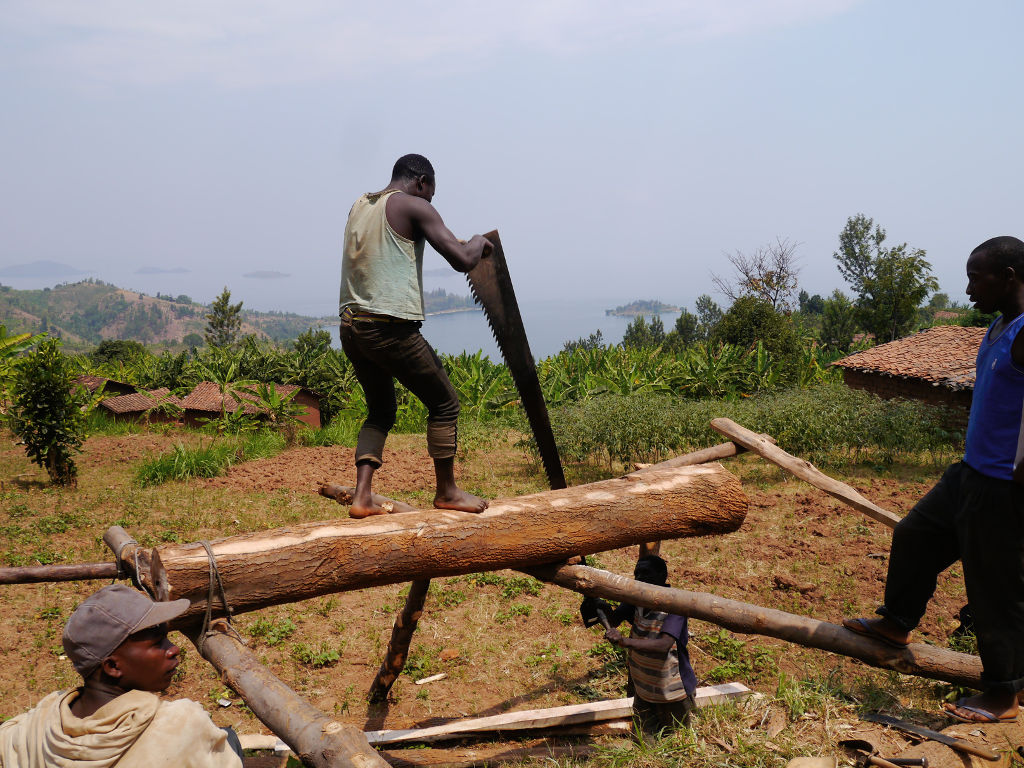
It is great being in a country where things are done by hand. The guy underneath follows a line on the wood, made with a string-line.
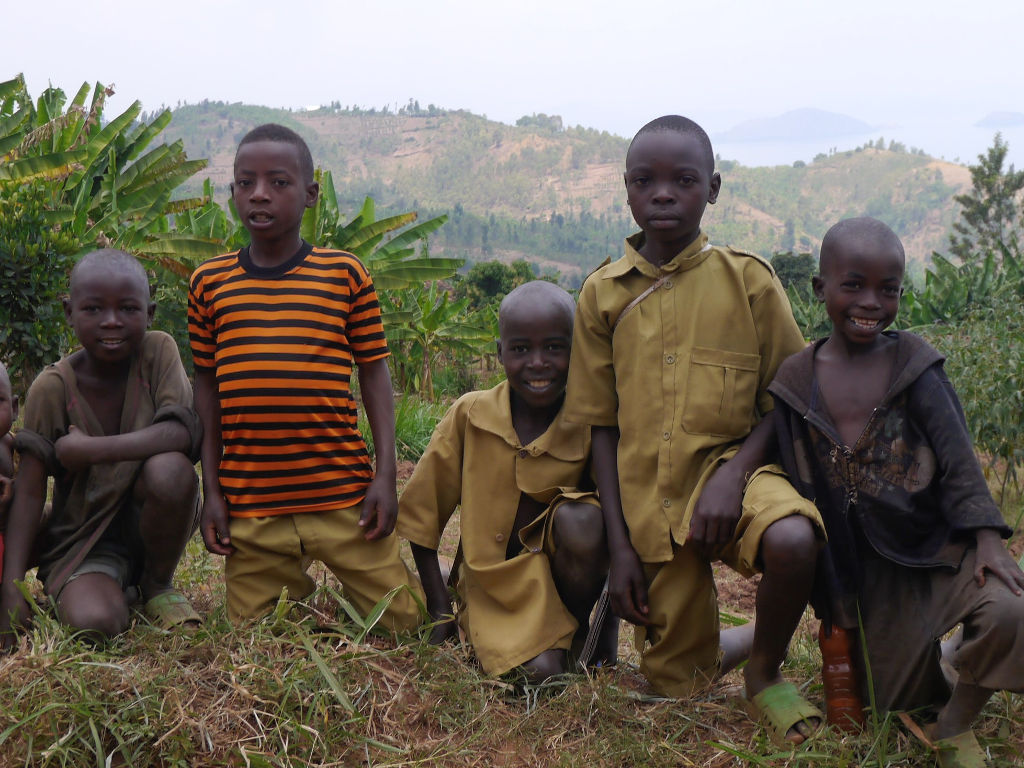
The kids. Along the trail, some of them ask for money. Not in the rest of the country though. The predominant feeling is of deep appreciation. If you are pushing your bike up a rough track, a kid will come and help you push.
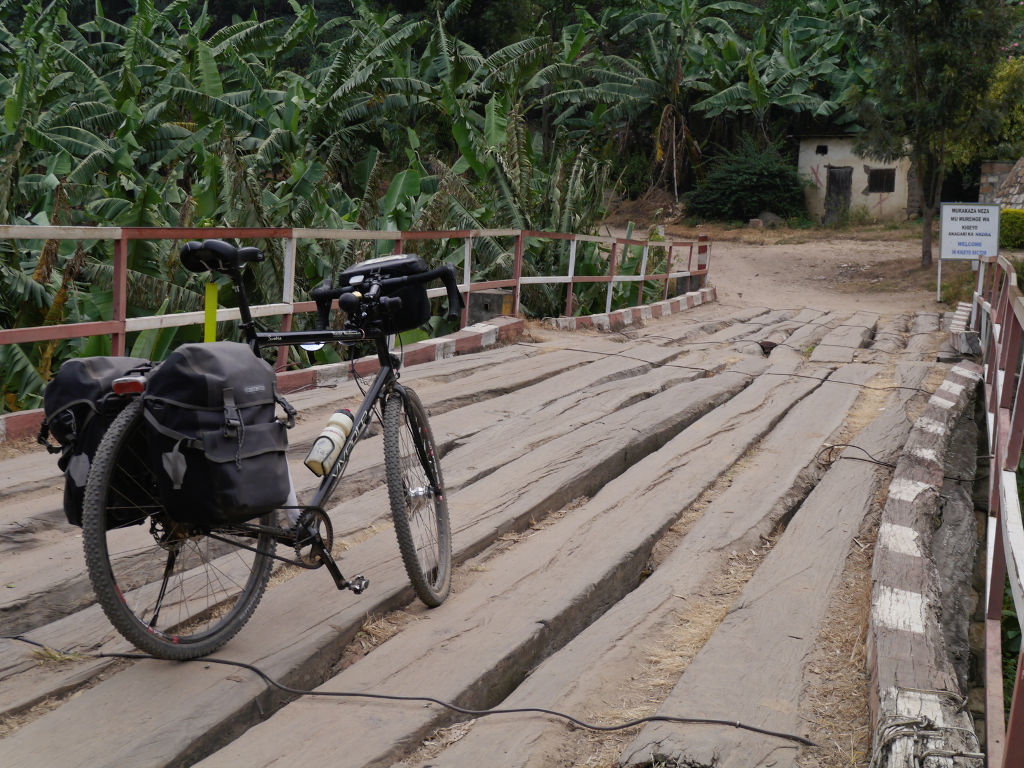
We walked but the locals ride over all the bridges. Even the ones with big cracks in them.
Three shots of the dozens we took of people riding bikes downhill with loads. It’s the way things are moved around. There are very few lorries or minivans. On the middle shot they have live pigs on the back.
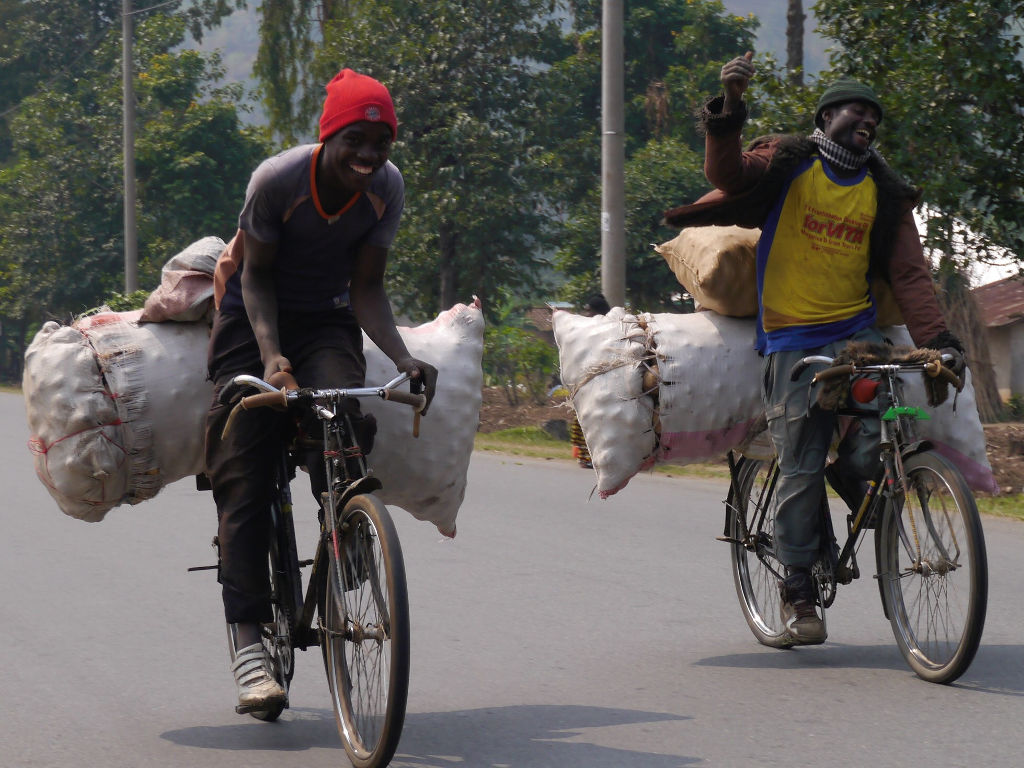
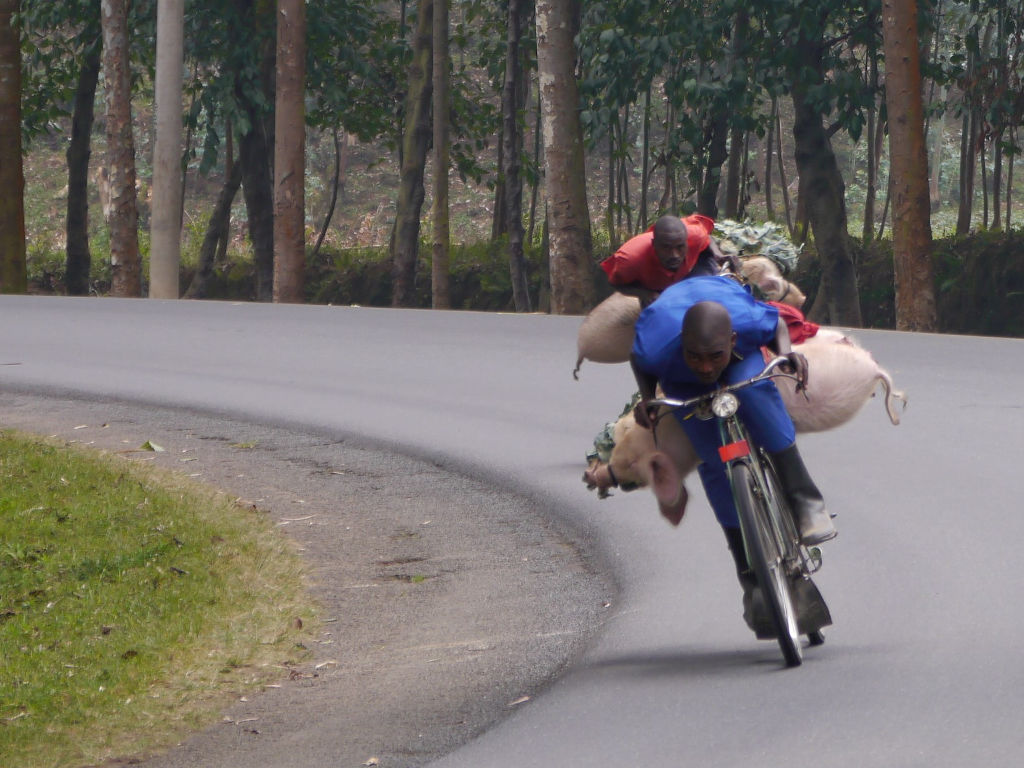
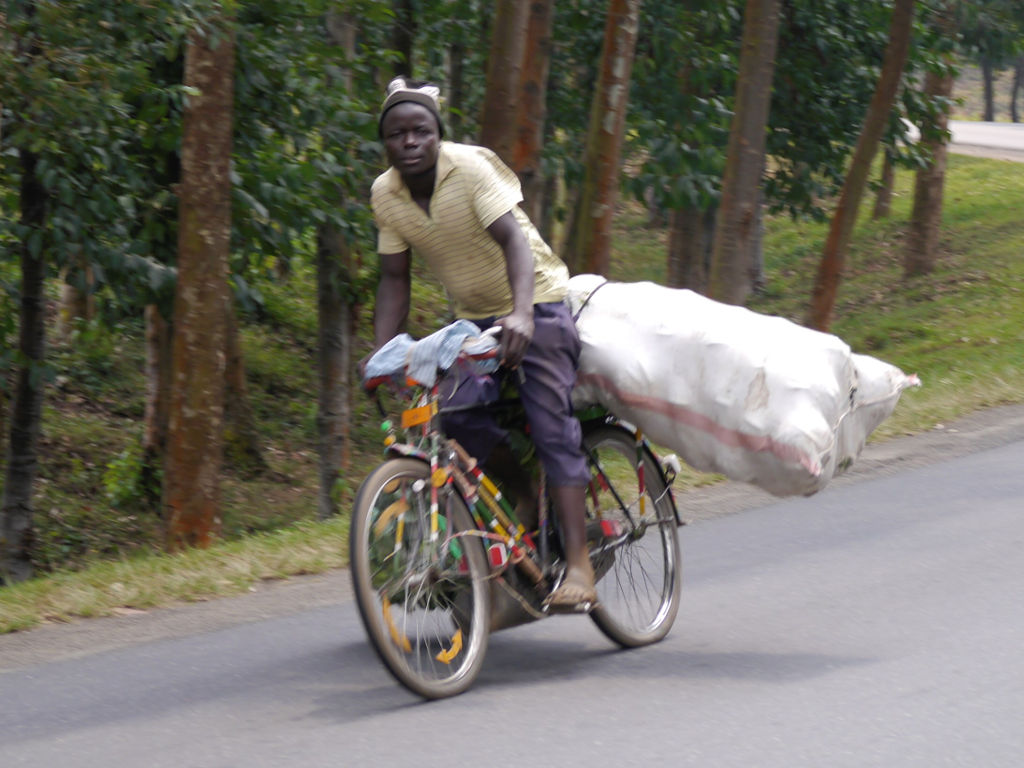
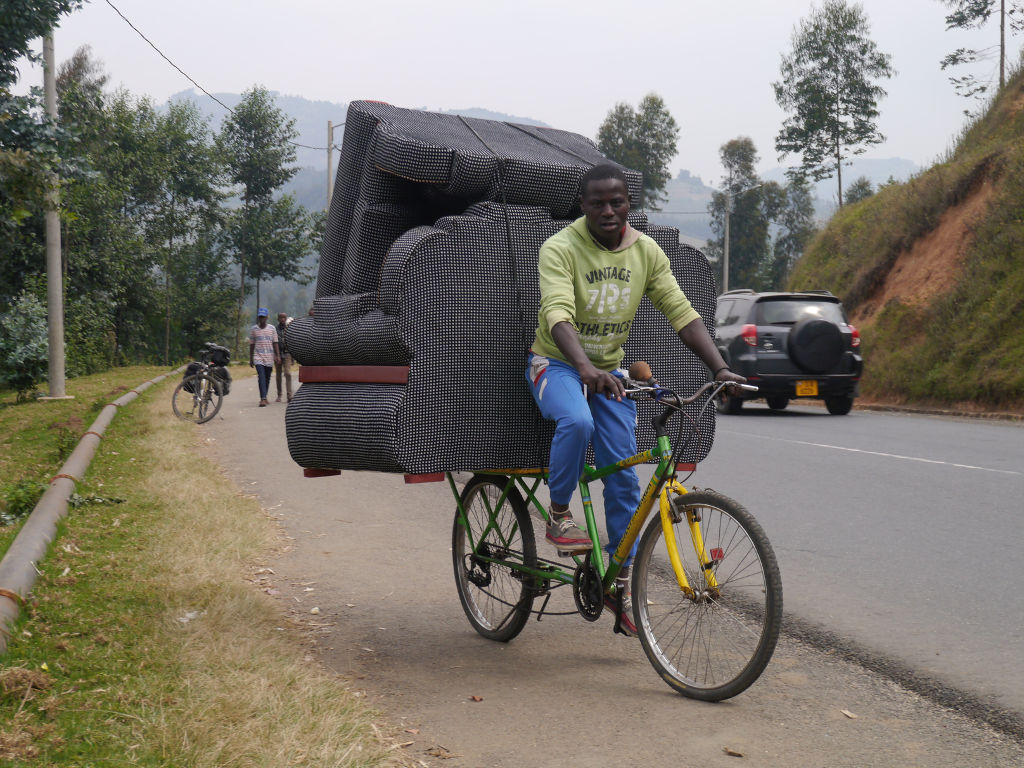
This poor guy SO wanted the shot sent to his friend who supposedly had a smartphone but alas it did not work. How impressive is he!
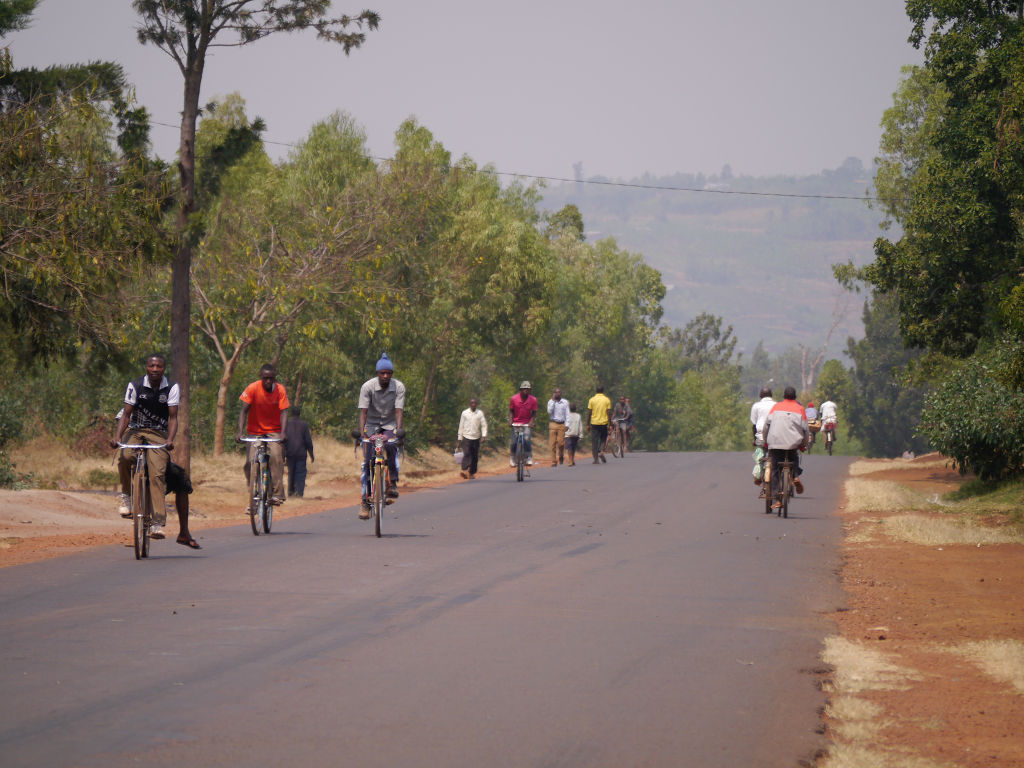
Country roads have lots of bikes.
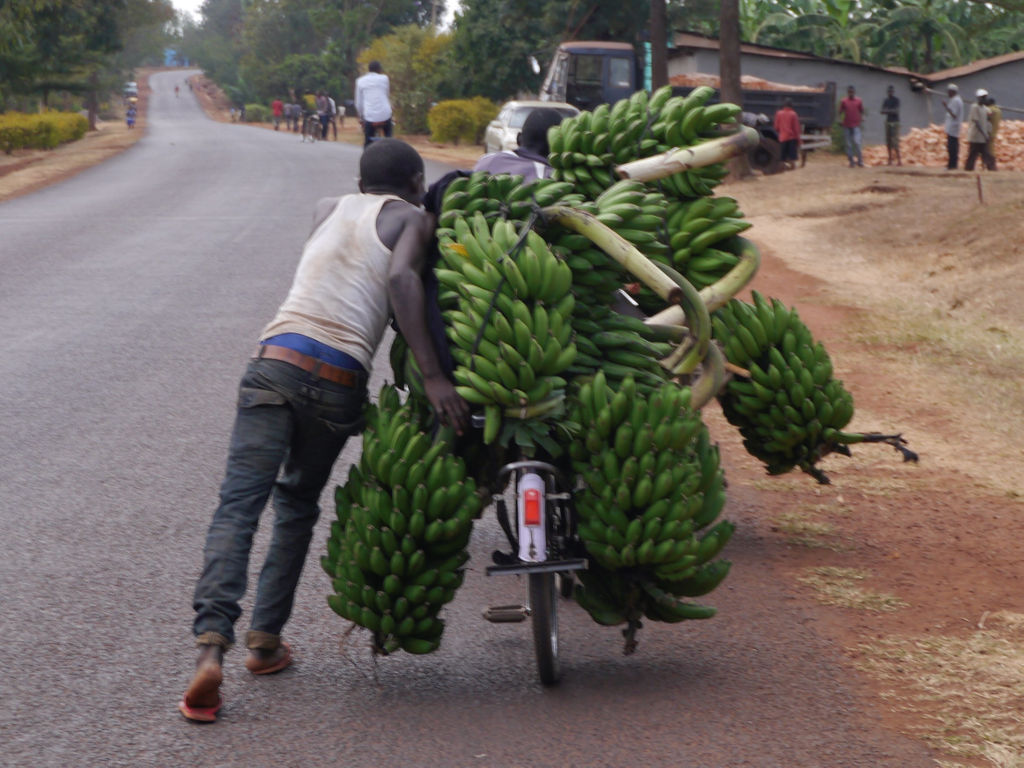
Pushing bananas up hill. I think bananas are worth a bit more at the top of a hill.
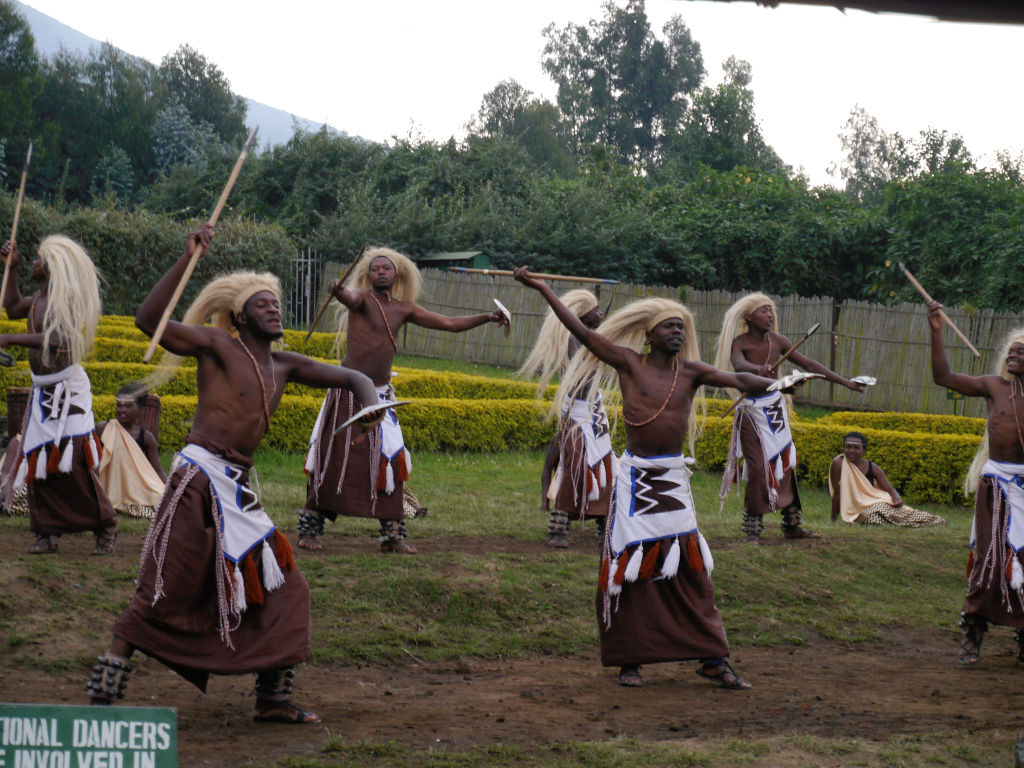
The route. Definitely intending to come back!After arriving back in the capital Kigali we undertake a trip to the northern volcano region to trek to see the mountain gorillas.
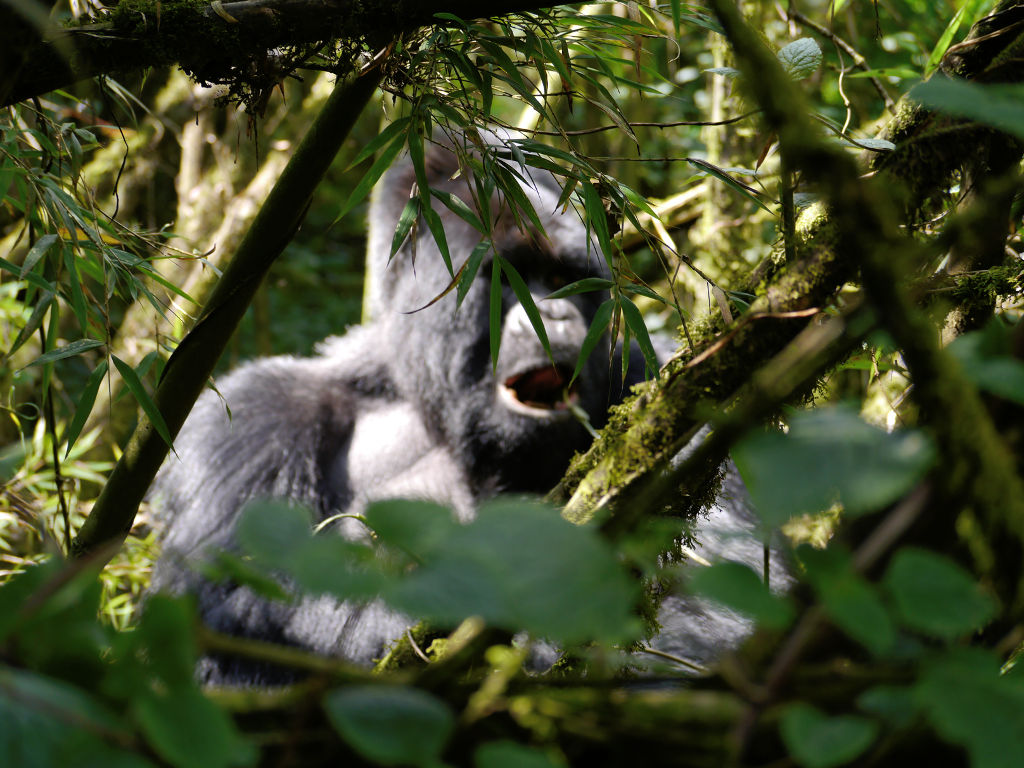
Words can’t describe the feeling of being near to these animals. Rwanda has developed this very well and it is an experience of a lifetime.
A tour of Hokkaido, the big island at the north of Japan. We land at Sapporo which is Chitose Airport and do a 1,050km clockwise loop, ending up back at the airport. We’d stashed the bike cartons there but alas they were discovered and so not there upon our return. Perhaps not surprising. This tour was a great discovery of a country that is perfect for cycling.
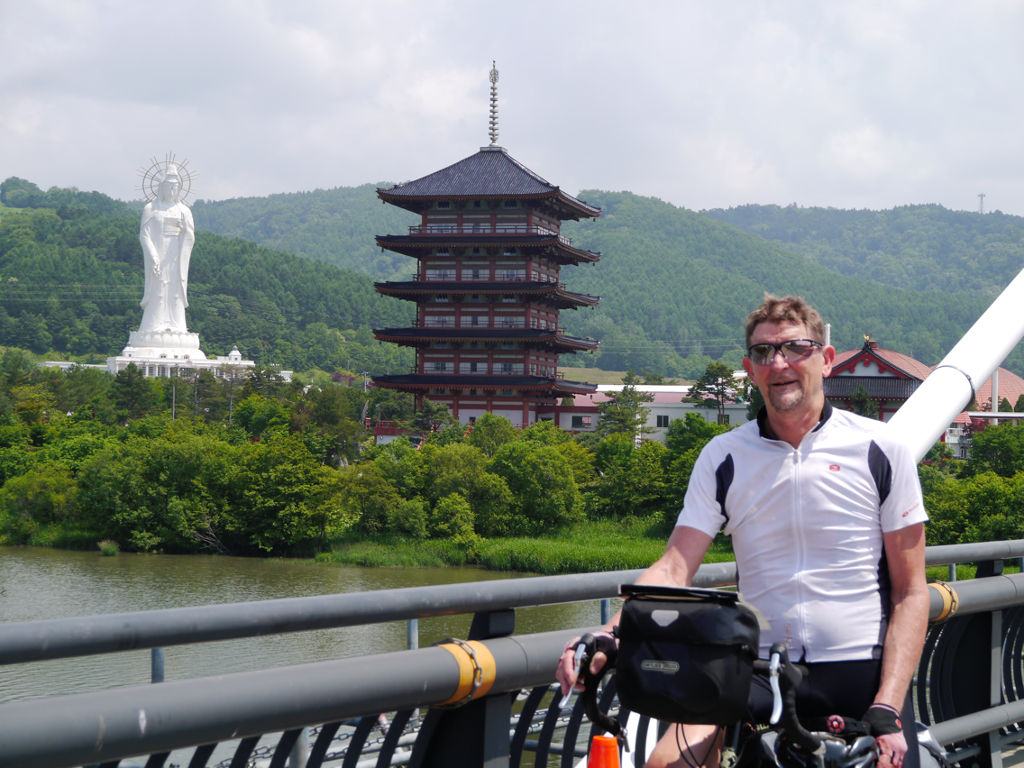
It’s all so clean and neat. I’ve brought my Patagonia and am already loving those bar-end shifters.
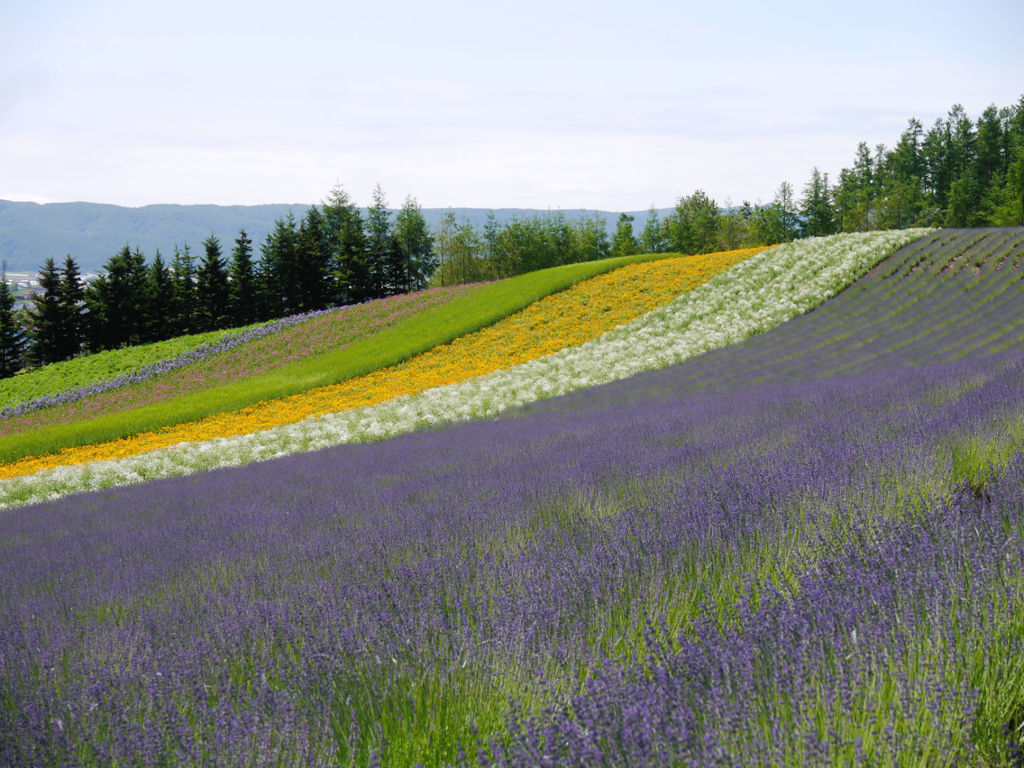
Around Furano. It’s a scenic wonderland.
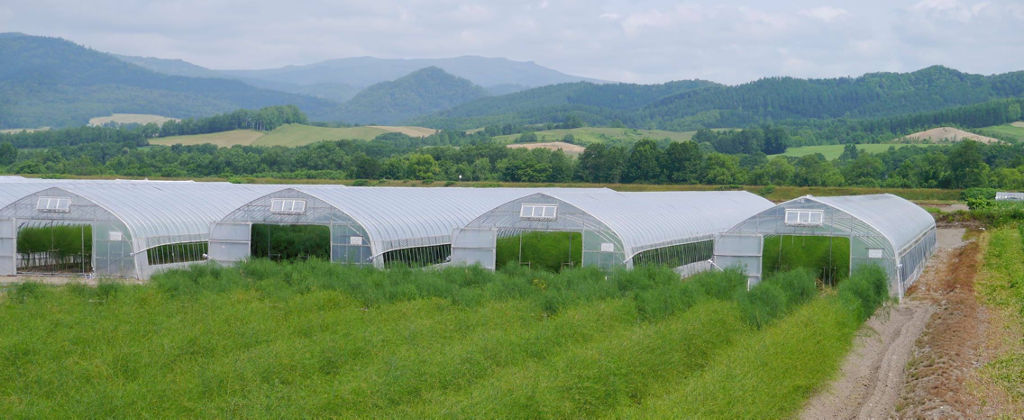
If you are interested in farming or just growing veggies you will love Hokkaido. It is so rich. This is asparagus. As good as you’ll see anywhere in the world.
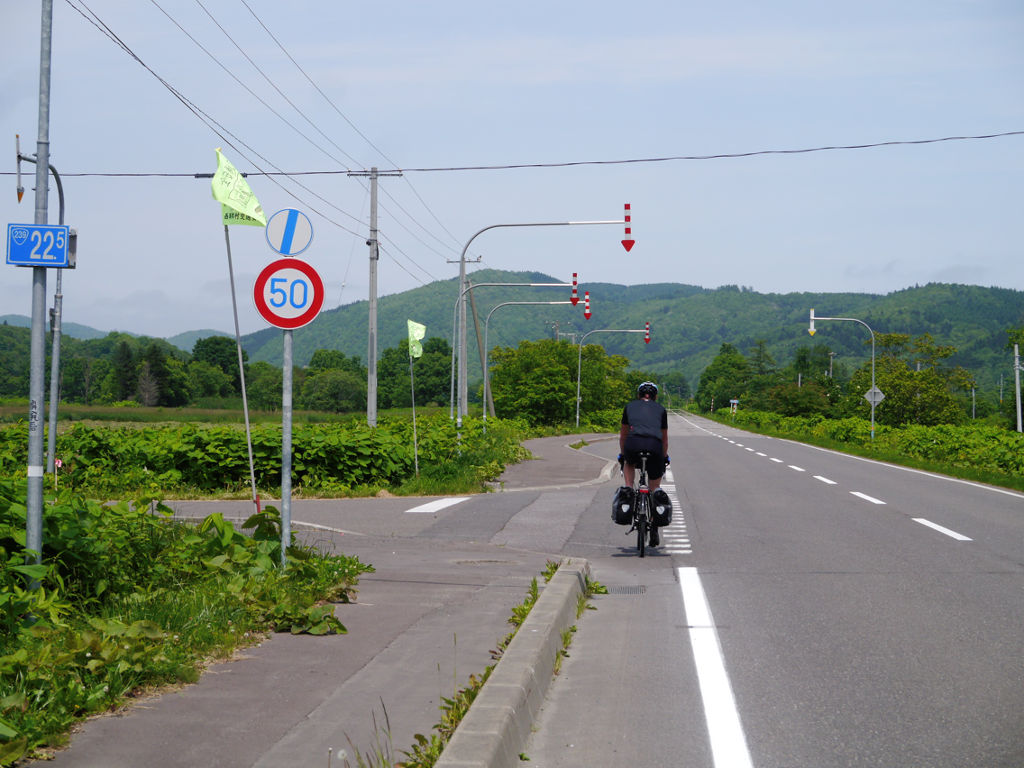
There are three things in this picture to point out. One is the derestriction sign above the 50kph sign. It was 40 but now, just out of town, it is 50. That is the max speed anywhere other than expressways. Second is the generous shoulder, often even wider and as smooth as anything. Third is the arrows above my head. These are for winter to show where the road edge is.
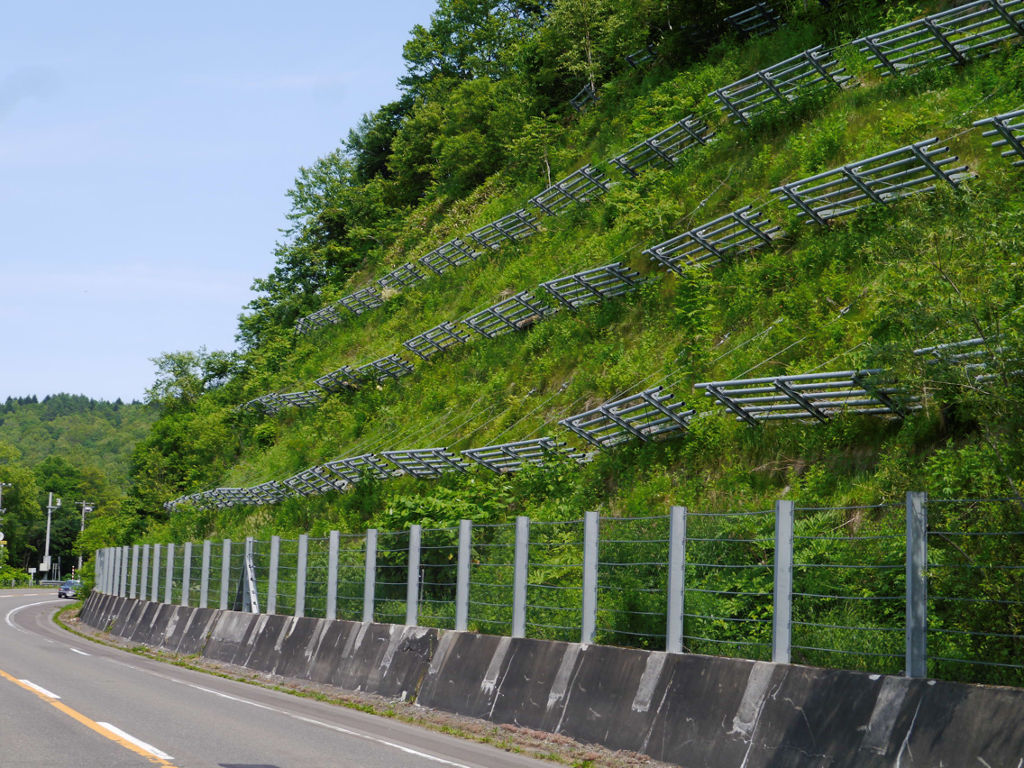
Following the devastation caused by the 2011 Tohoku earthquake, one of the five strongest ever recorded on earth, the east coast of Japan has seen all sorts of Tsunami warning systems and wave protections built.
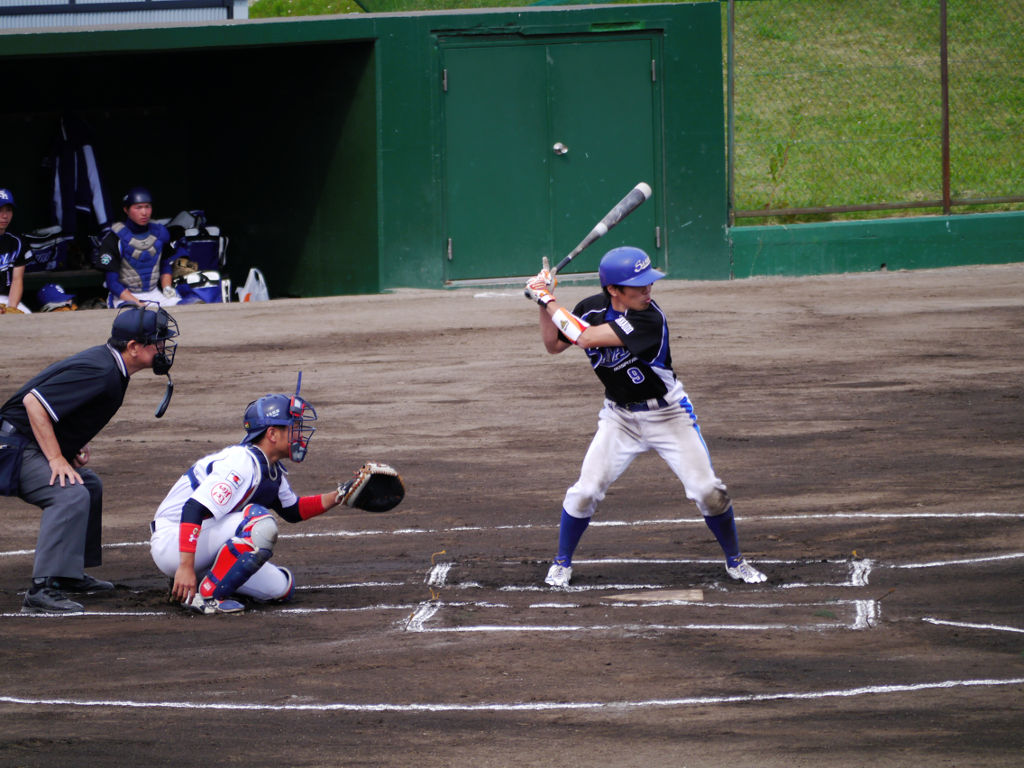
Sunday afternoon and every town has a baseball game going on.
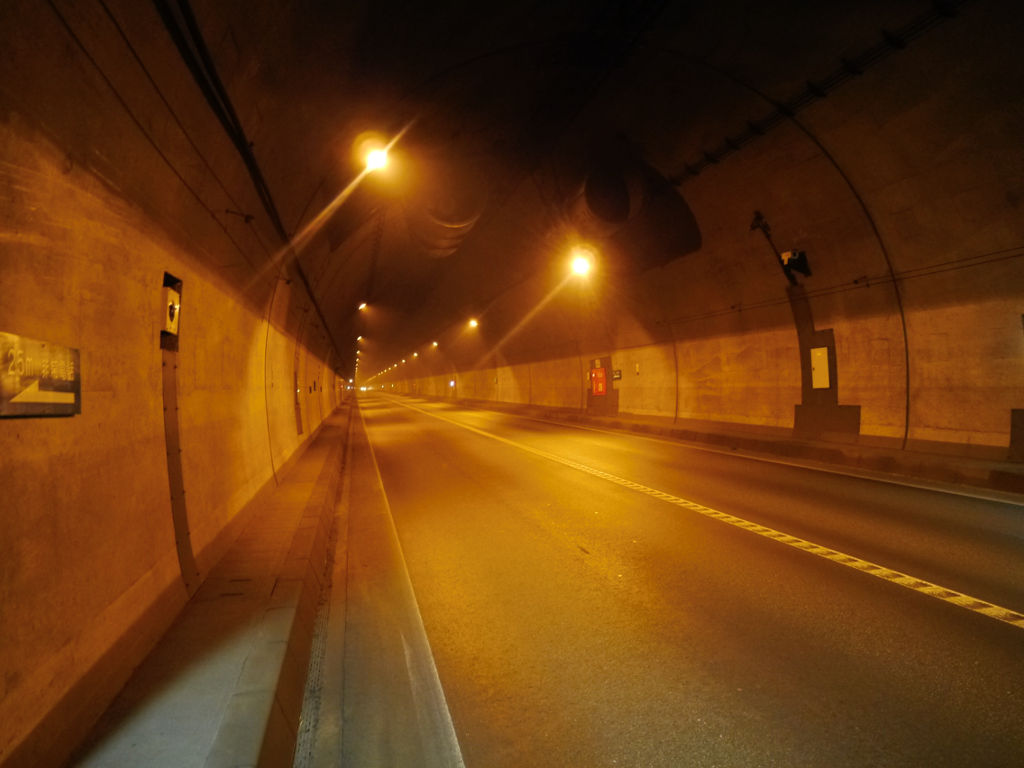
Japan is mountainous, but they tend to use a lot of tunnels rather than winding mountain climbs. This particular one is 4.5km long. But it is well lit and not dangerous. Again, the speed limit is 50. The thing with long tunnels is that the approaching vehicles sound like they are right behind you when they are not.
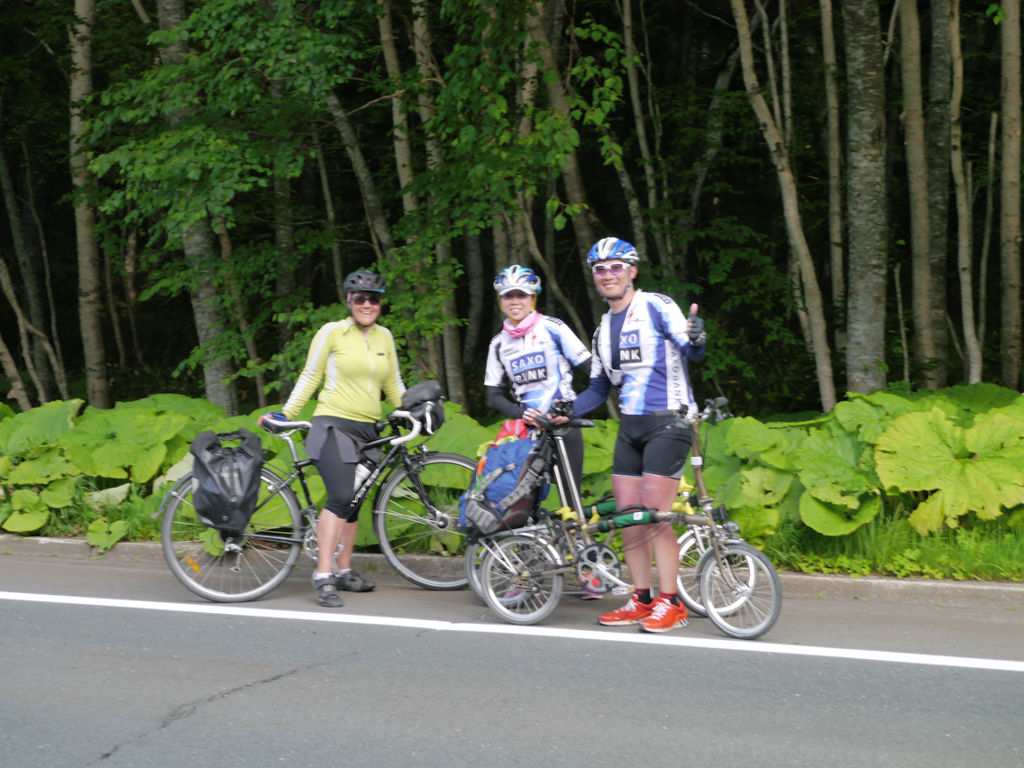
A HKG couple on folding bikes. They do one trip a year and plan it down to the finest detail.
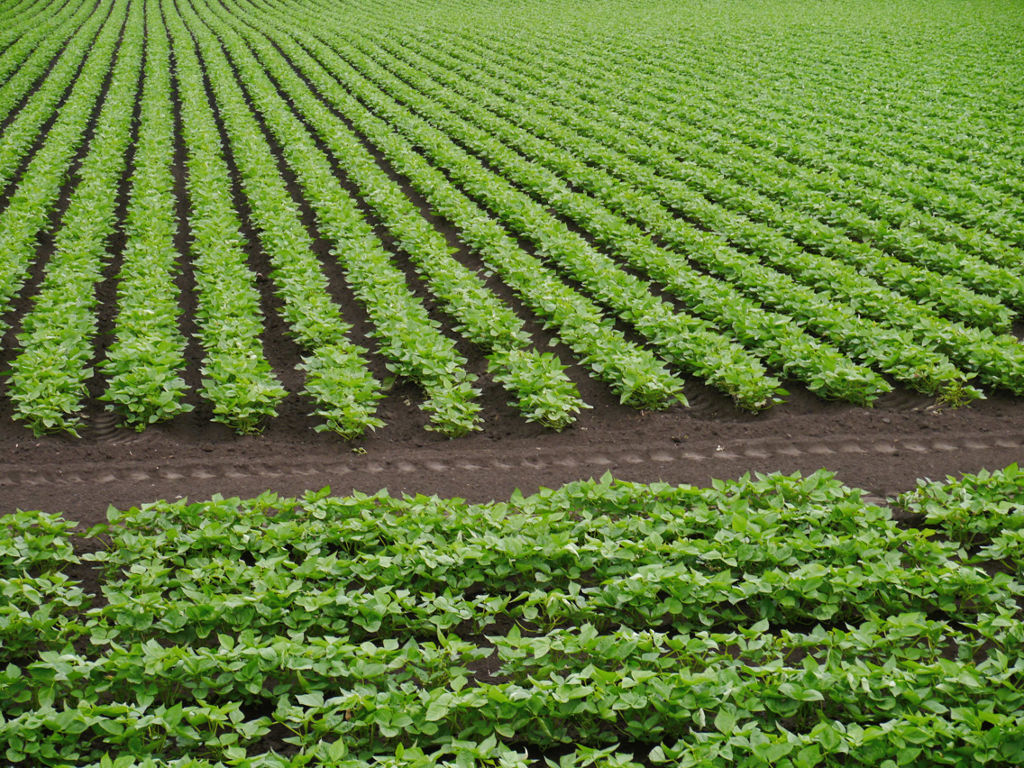
Beans. The farm crops are truly amazing. They stop at nothing for perfection.
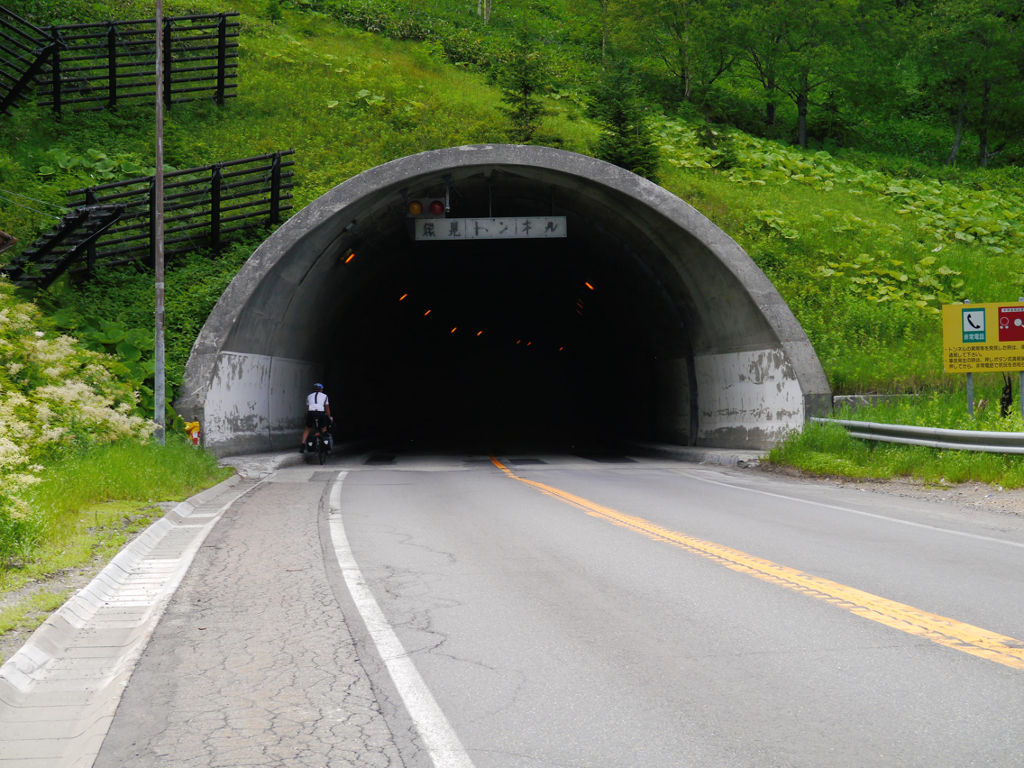
It is common to go through more than 10 tunnels a day. Obviously touring bikes need lights front and rear.
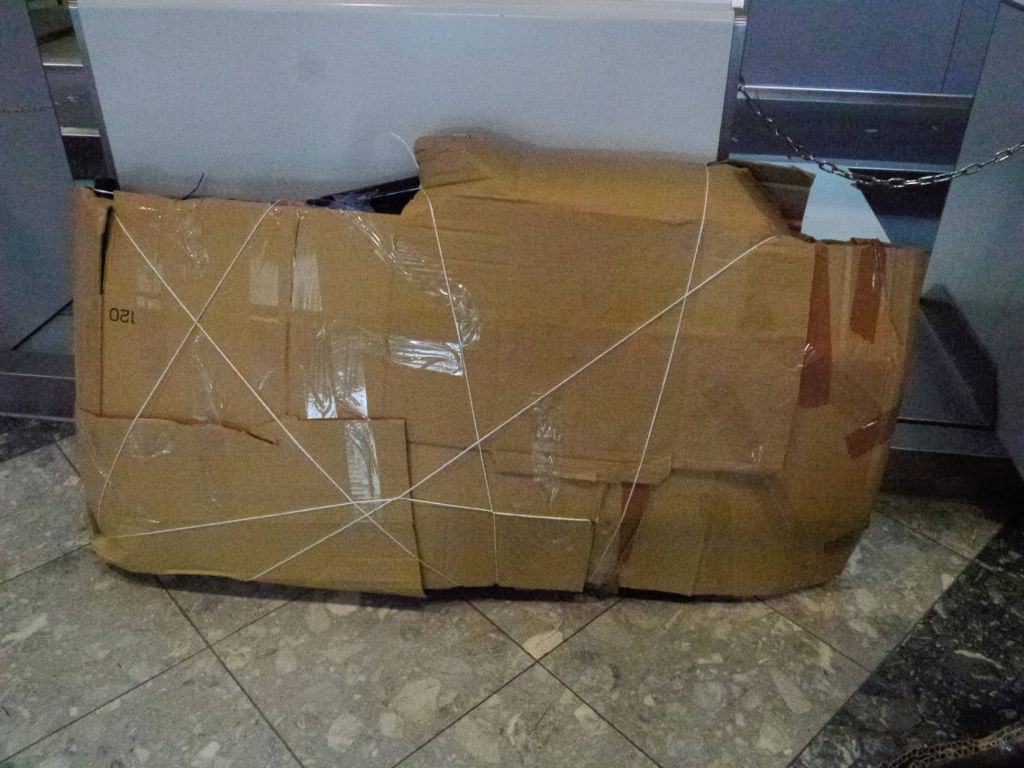
We were not surprised that the cartons were not where we had “hidden” them. With tape, zip-ties and rope on hand we bought some small boxes from a luggage storage/forwarding place and this level of protection worked fine.
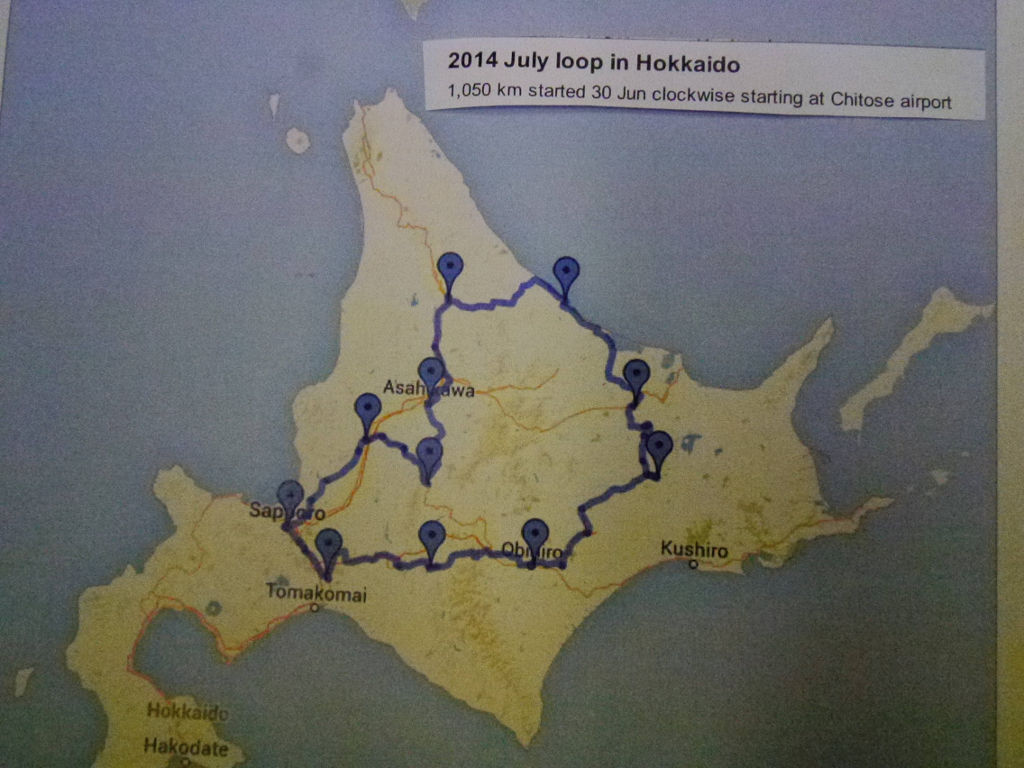
The route. Definitely intending to come back!
A ride from Zurich airport to Romanshorn, the Swiss port on Bodensee where the ferry departs for the German side and Friedrichshafen where Eurobike is held.
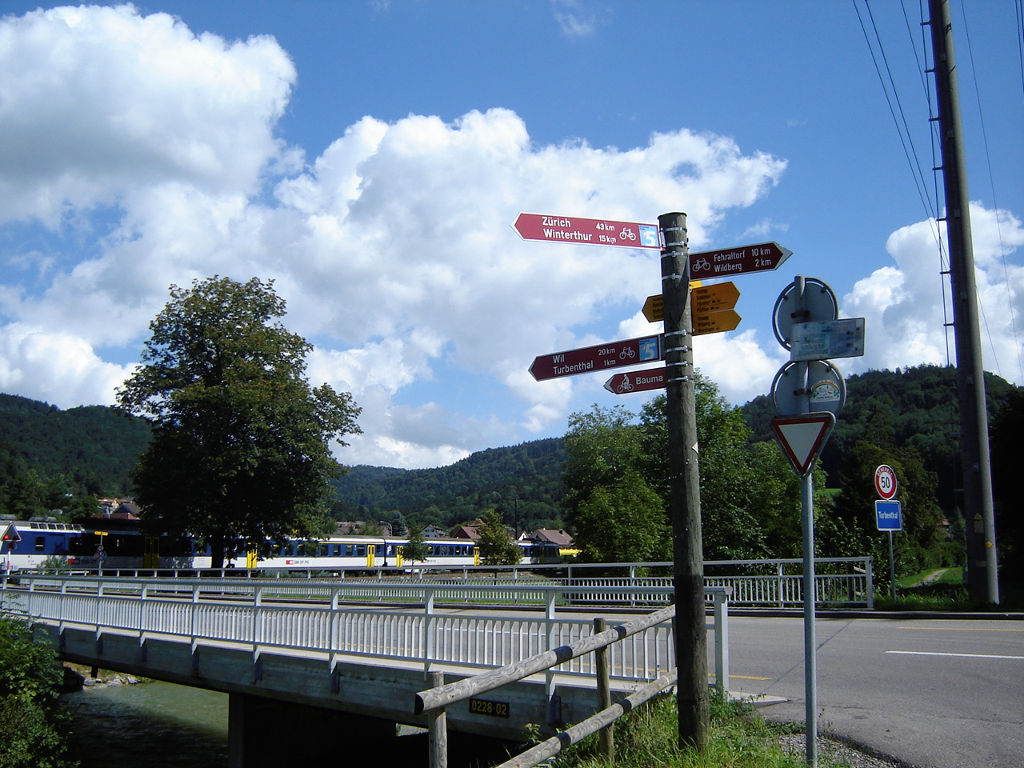
Being from Australia I instinctively use the roads, and the signs on the roads, to work out which way to go. But here there are no cyclists mixing it with the cars and there is a maze of bike routes. Will I go on the car-roads and follow their signs or only follow the bike signs?
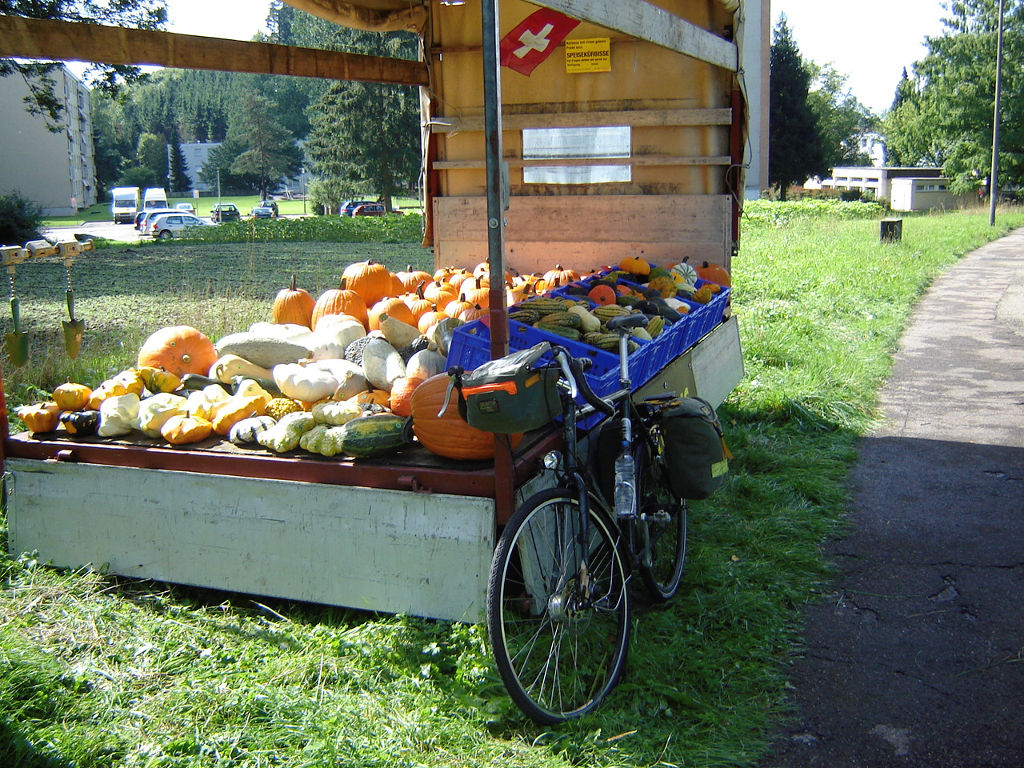
It is all very pretty in Switzerland.
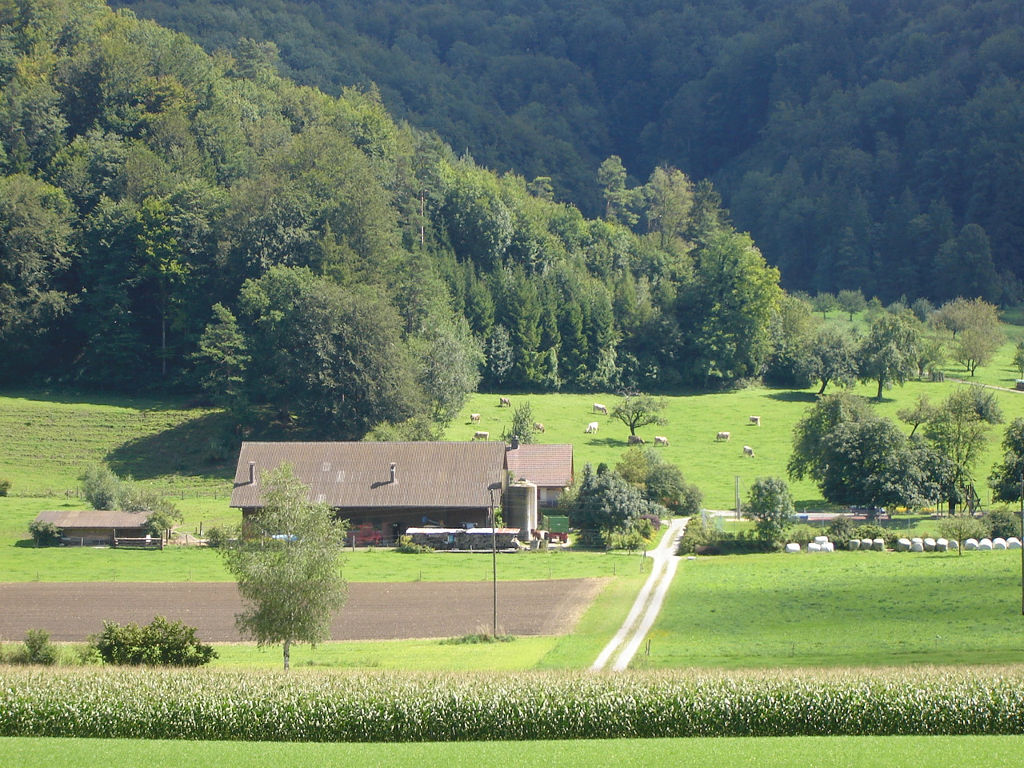
Continuing to be pretty.
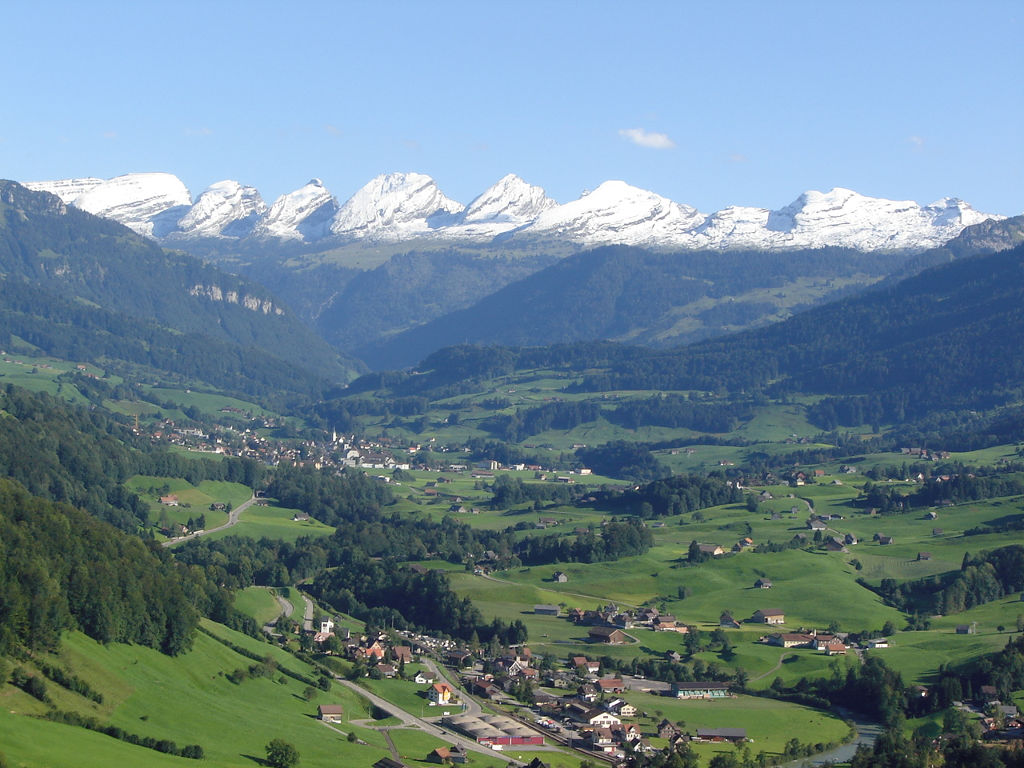
Now it is beyond pretty. Glad I don’t have to climb that!
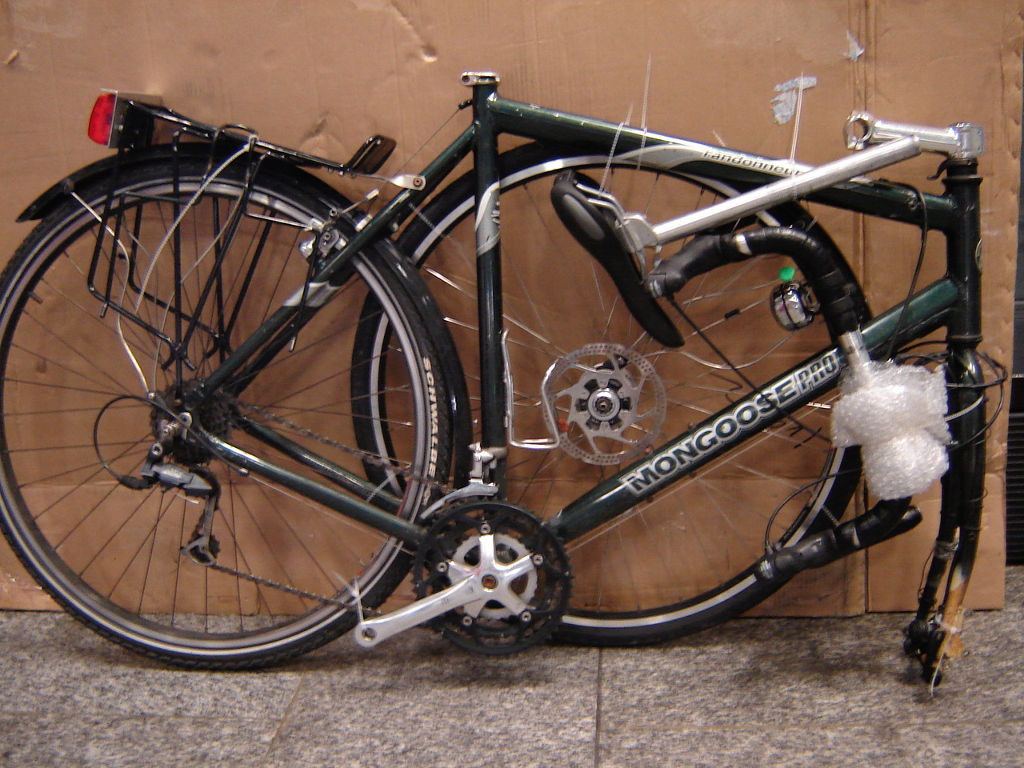
I ride back to Zurich taking a different but also pretty route. It is my last tour on the Mongoose and alloy frame version of the Randonneur that began as a steel Gemini Randonneur in 1981.
A ride around the Swiss and German sections of the Bodensee.
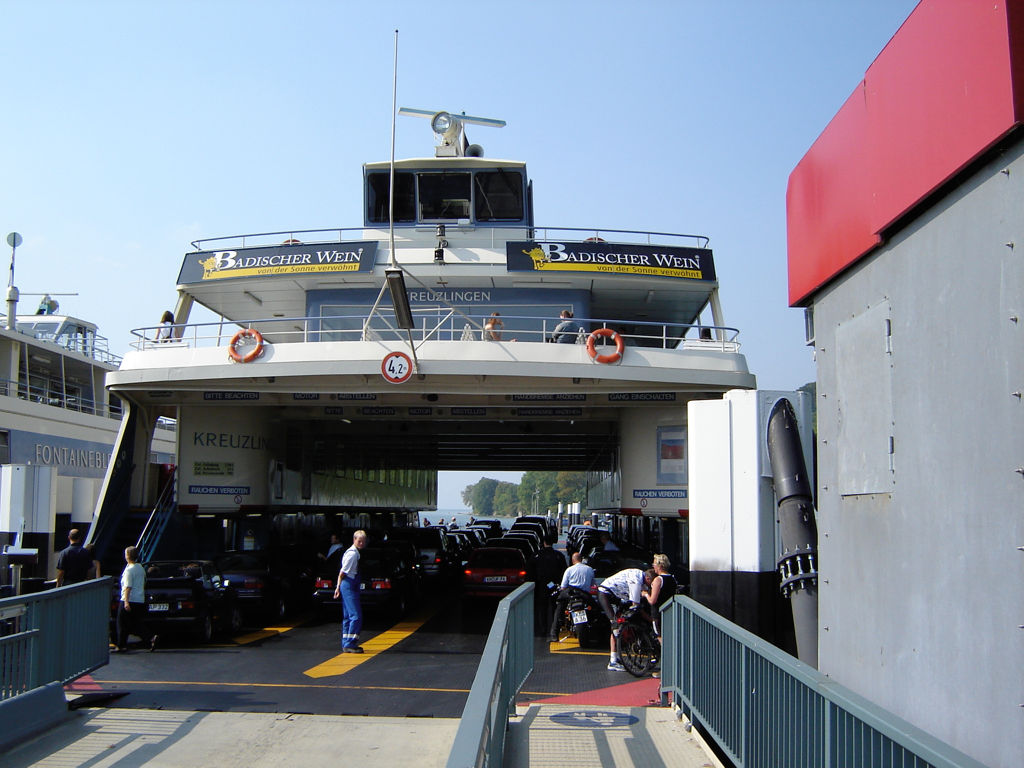
There are ferries crossing the lake in different places allowing us to vary the route.
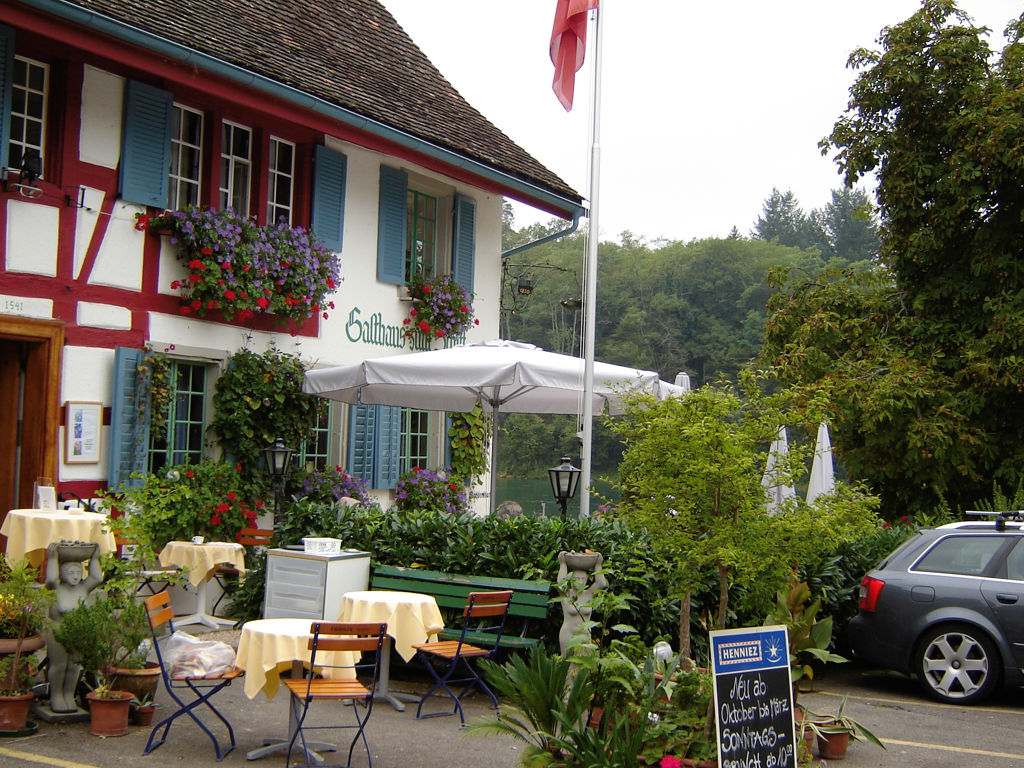
The towns are loaded with postcard scenery.
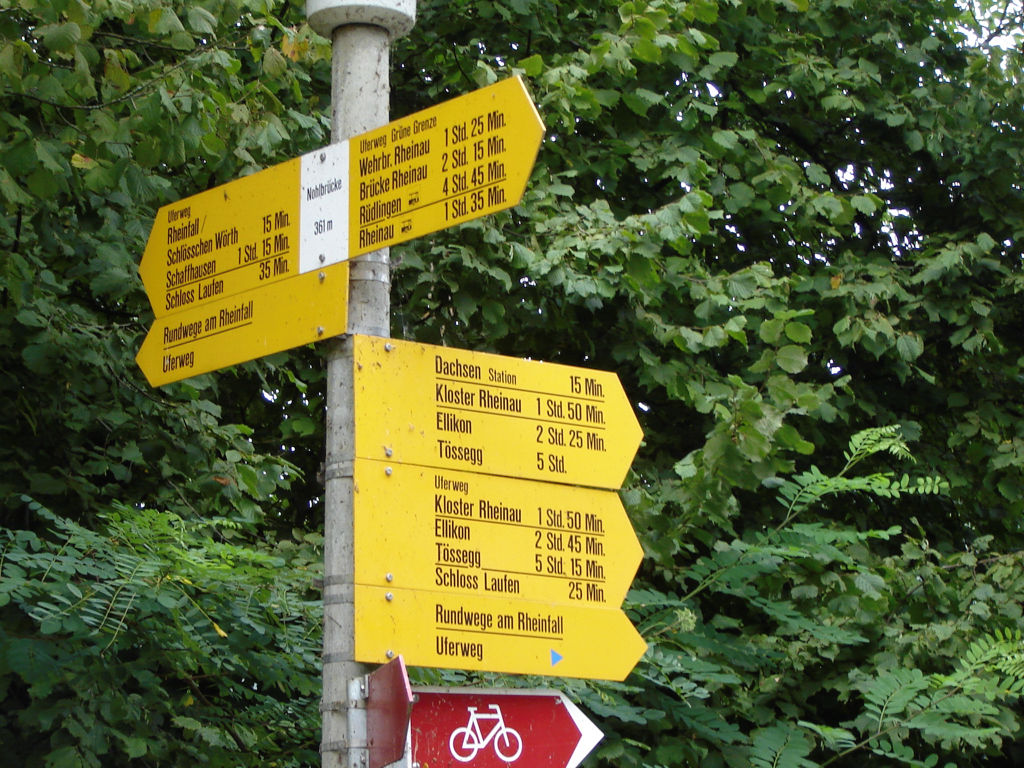
These signs mean nothing unless we have maps detailed enough to show tiny places.
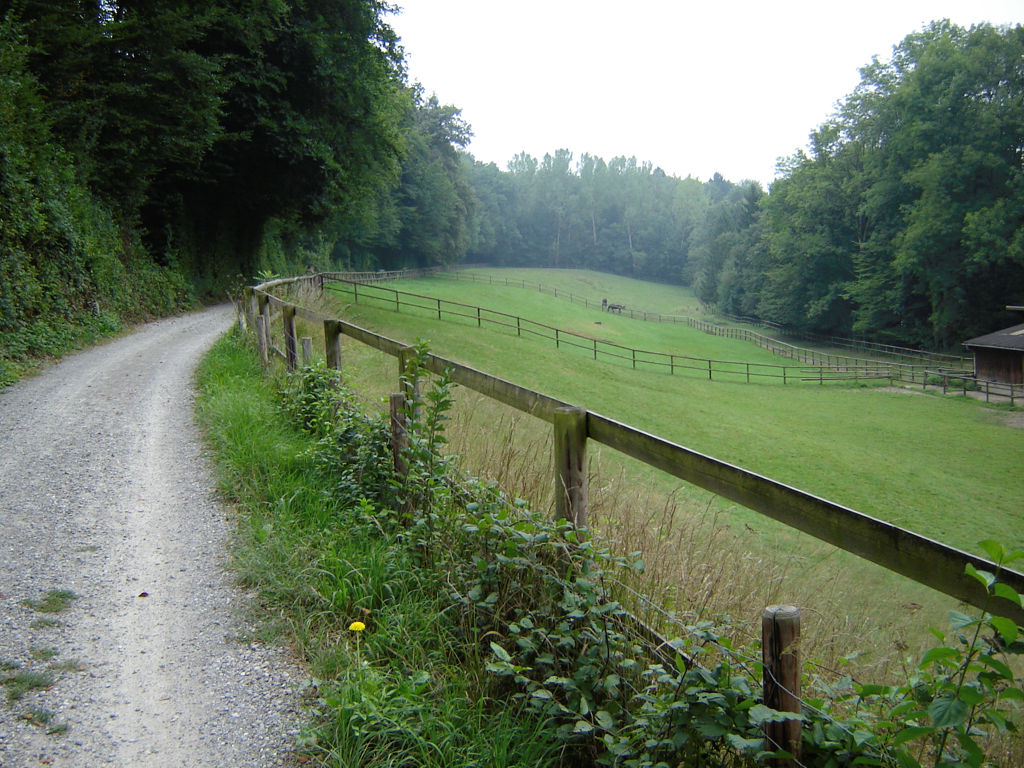
Switzerland is tremendous for bike touring. Lots of unsealed roads but very smooth to ride on. A touring bike is ideal.
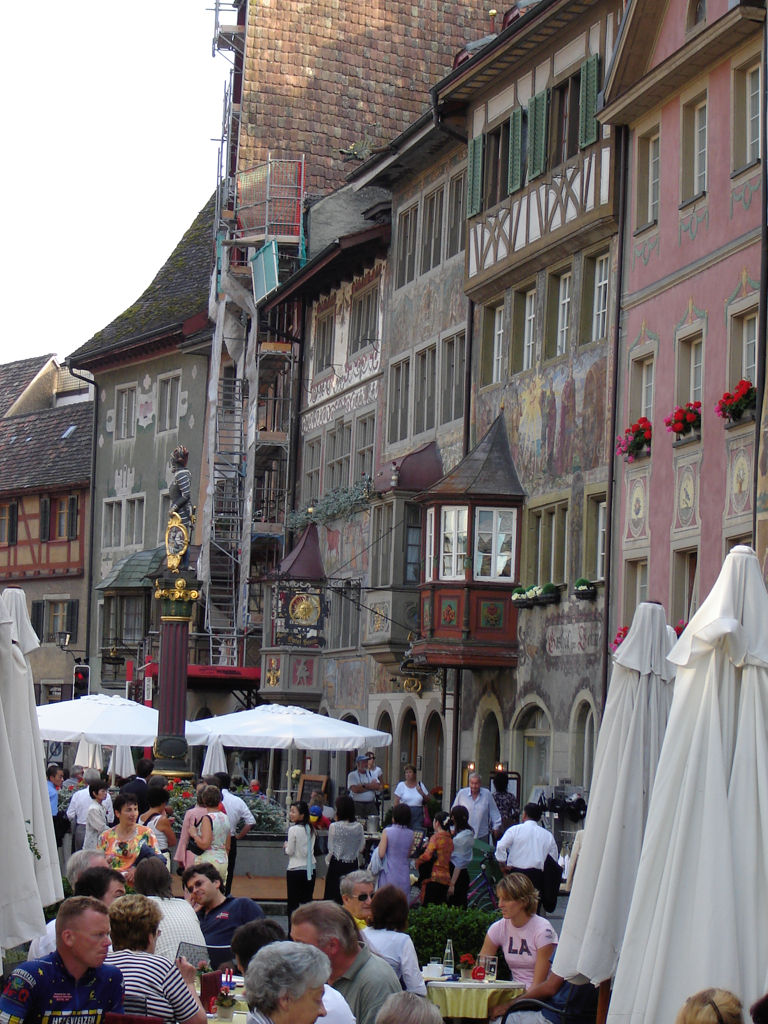
It is not long before another of these great coffee or snack stops appears. Beautiful.
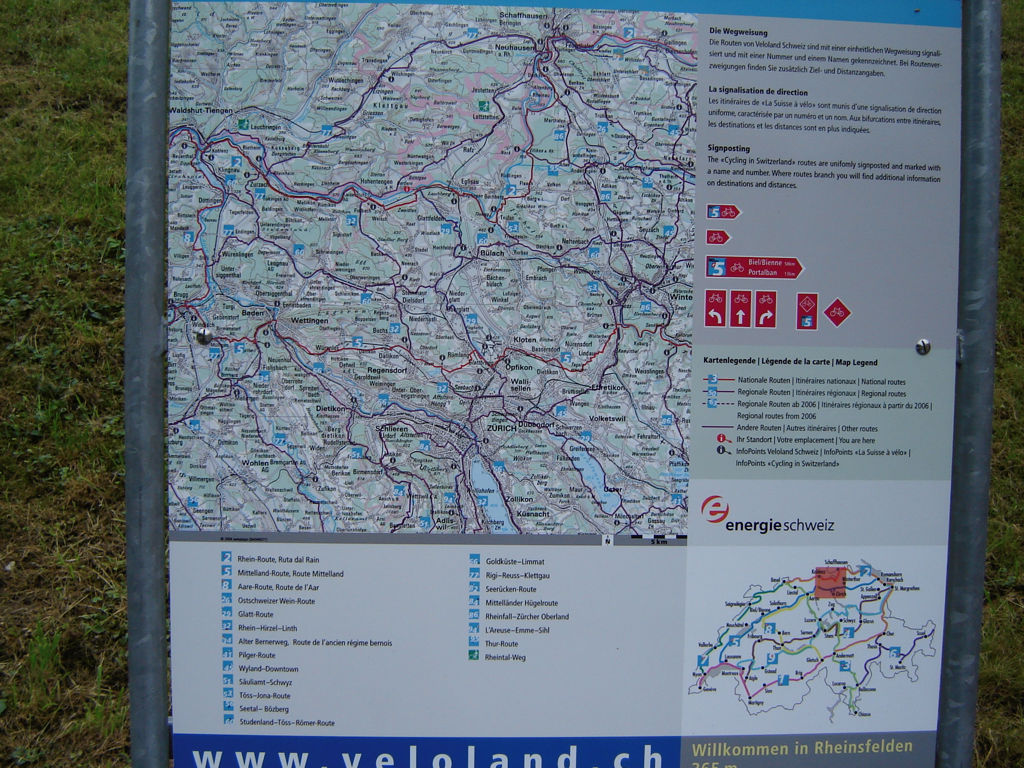
Cycling is normalized here but it is hard for us to follow paths to places we don’t know. So we are often using the compass often to decide left or right.

Visiting Rosemarie Speidel at her parent’s place.
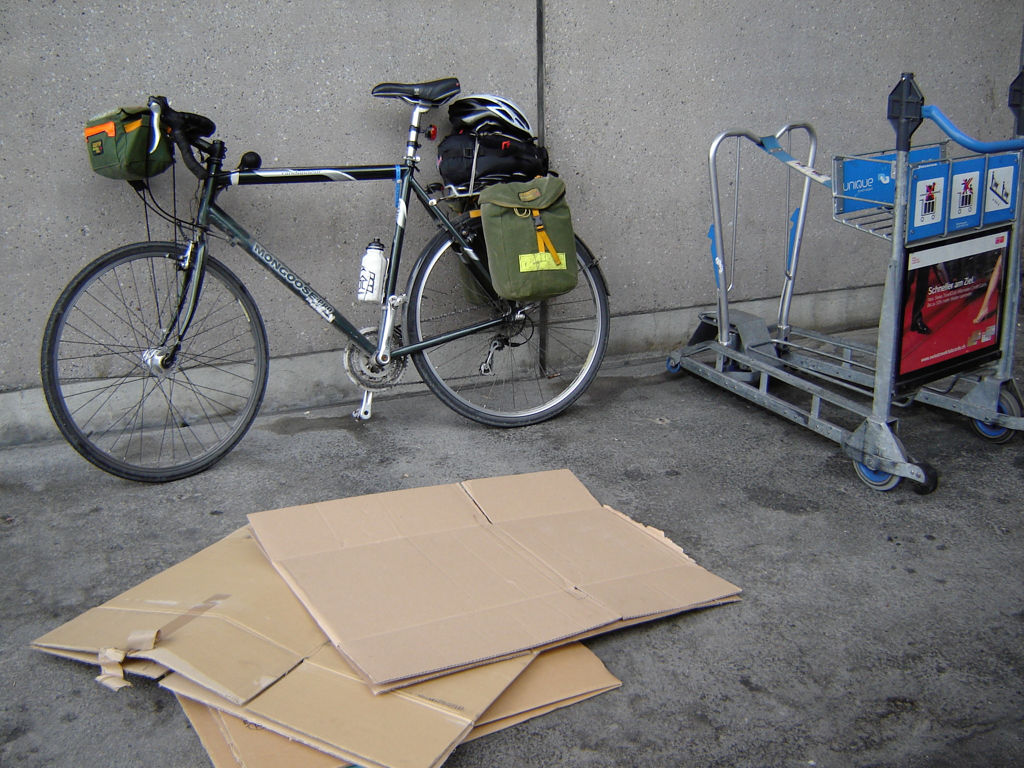
At Kloten airport there was no one selling cartons so I’ve found some empty boxes and will make use of some rope, tape and zip ties that I’m carrying.
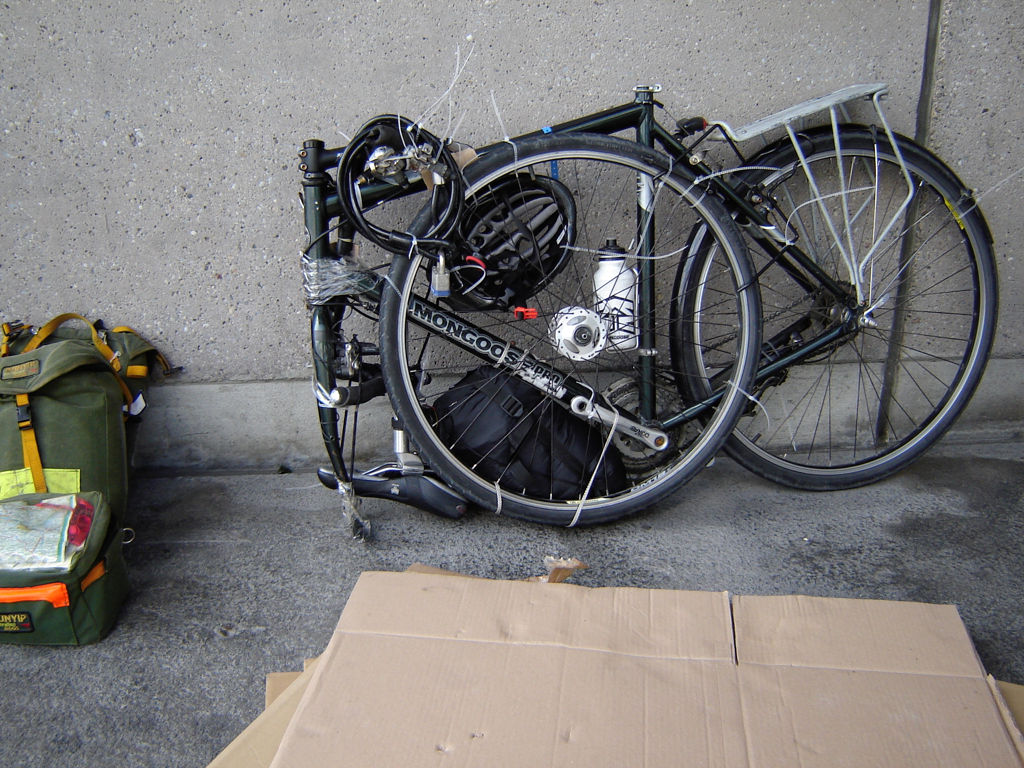
Unlike with a bike carton, here everything needs to be attached to the single object. It’s now ready for final packing.
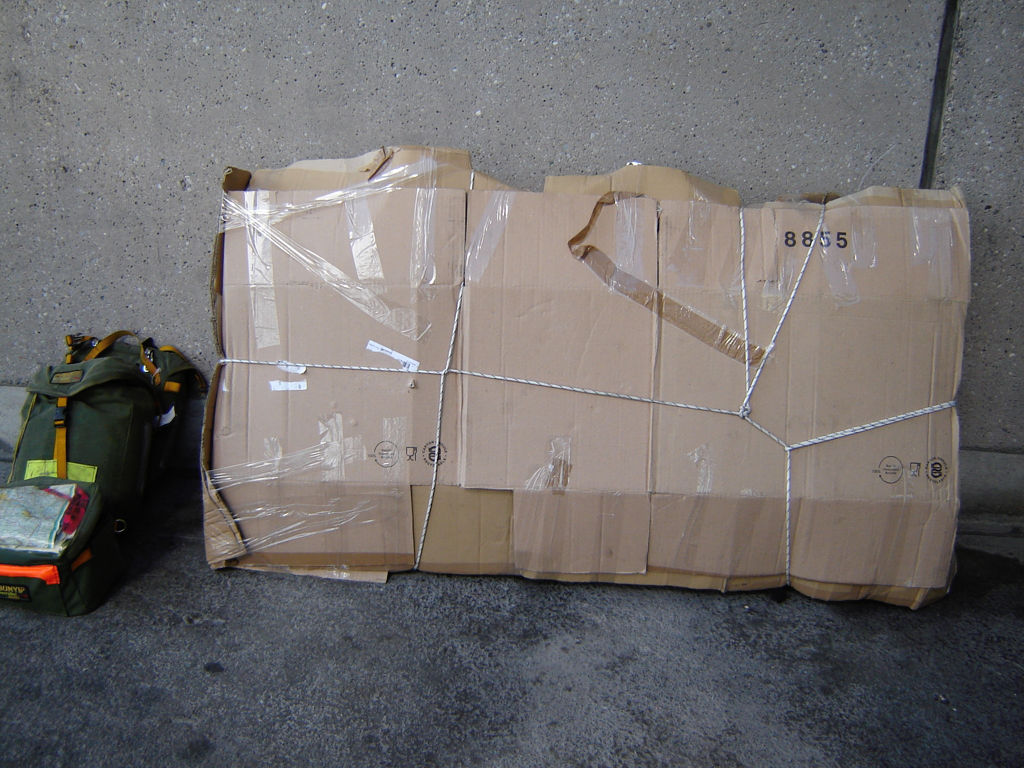
There are two options here. One is to make a carton with the rigid corners. One is to “wrap” the bike in cardboard. That is what I have done.
A loop ride out of Budapest heading SE then into Romania. Circling north around Transylvania and then west back to Budapest.
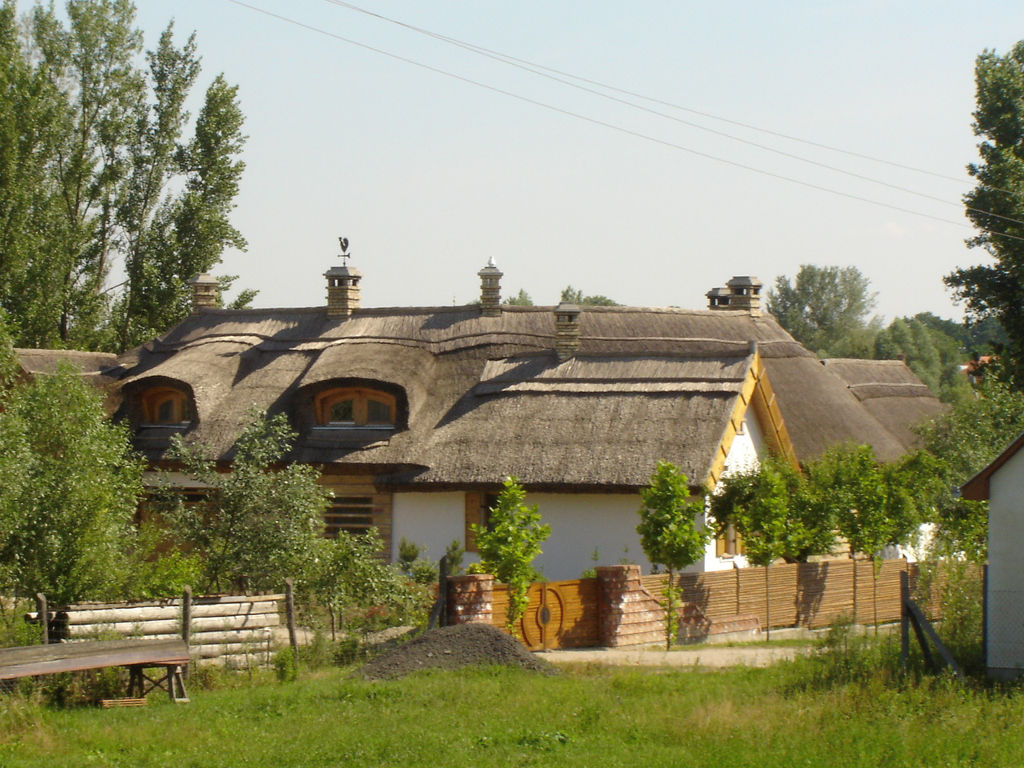
We keep pulling over to admire the roof thatching.
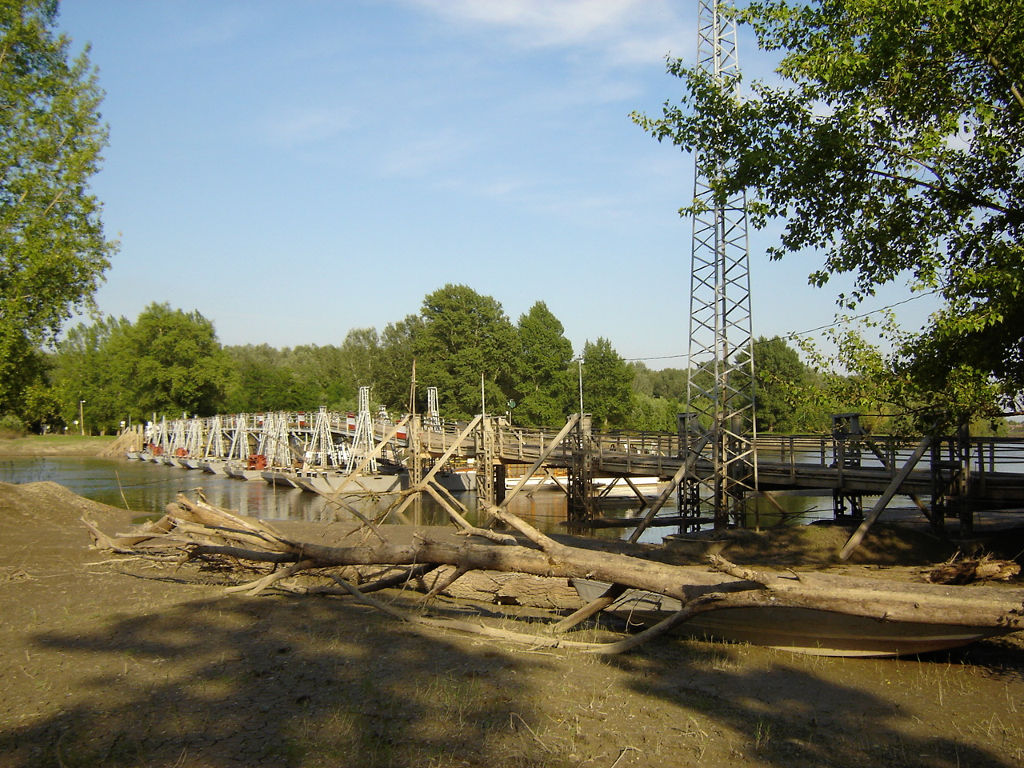
Floating bridges are probably common in history but this is the first one I have seen. Maybe they got sick of rebuilding a conventional bridge after annual floods.
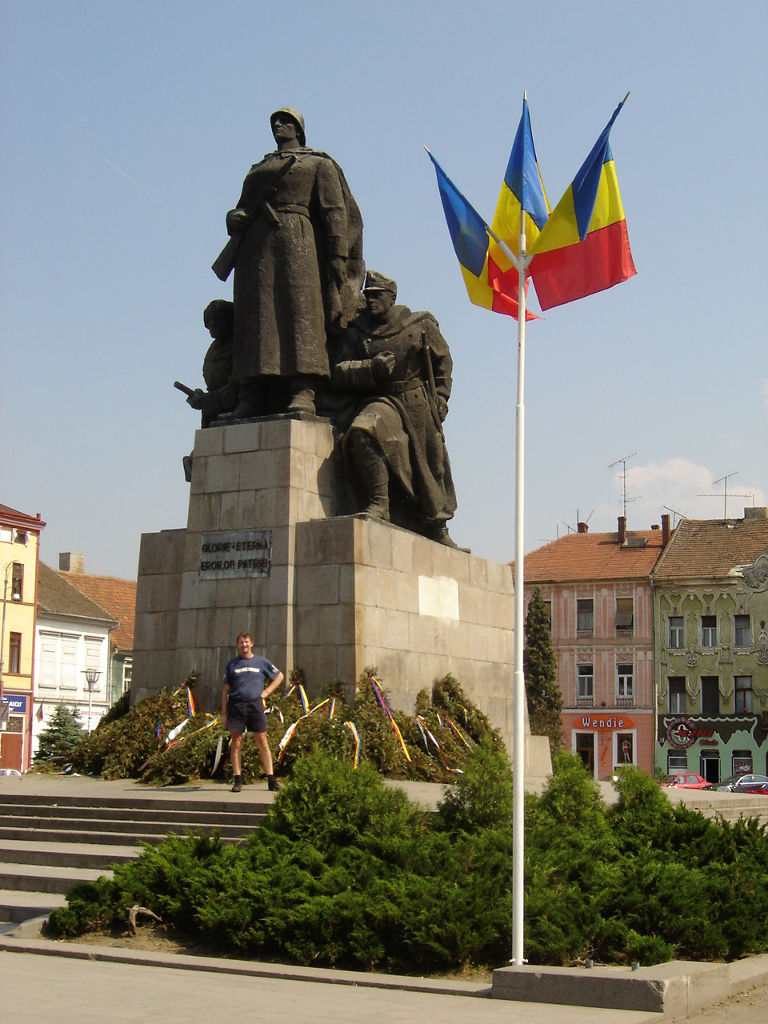
In Arad, Romania. There are signs of former Soviet occupation all over the place.
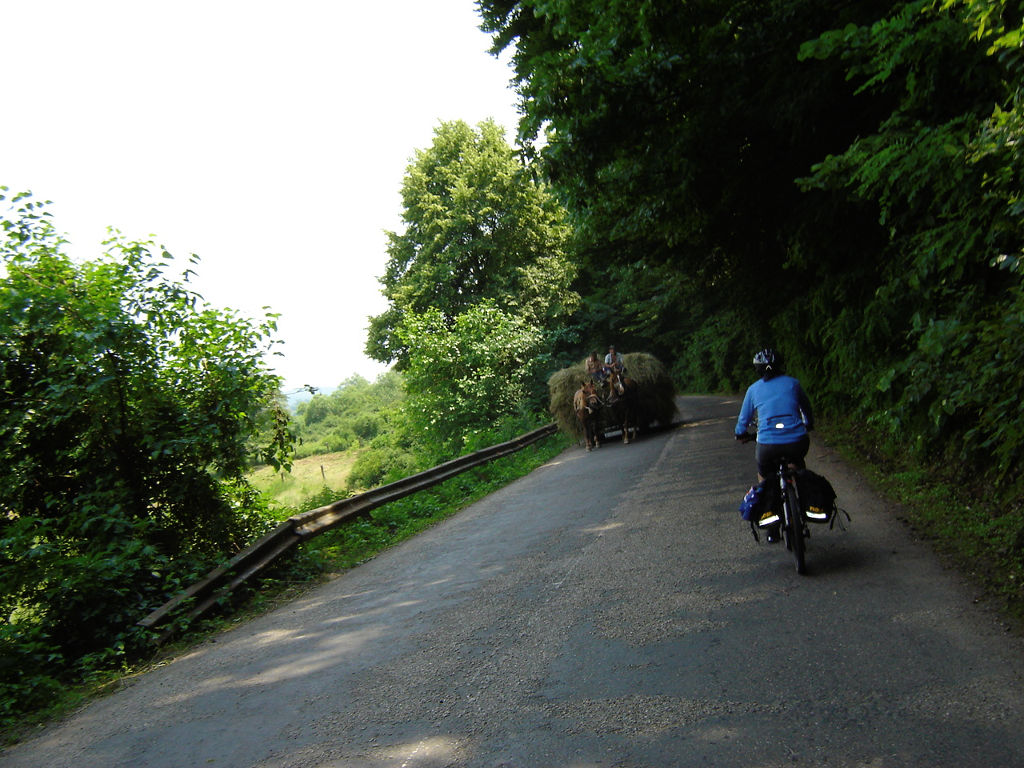
Road scene. There was a noticeable change as we moved from Hungary to Romania. Romania is in the “Latin sphere” and we can feel it.
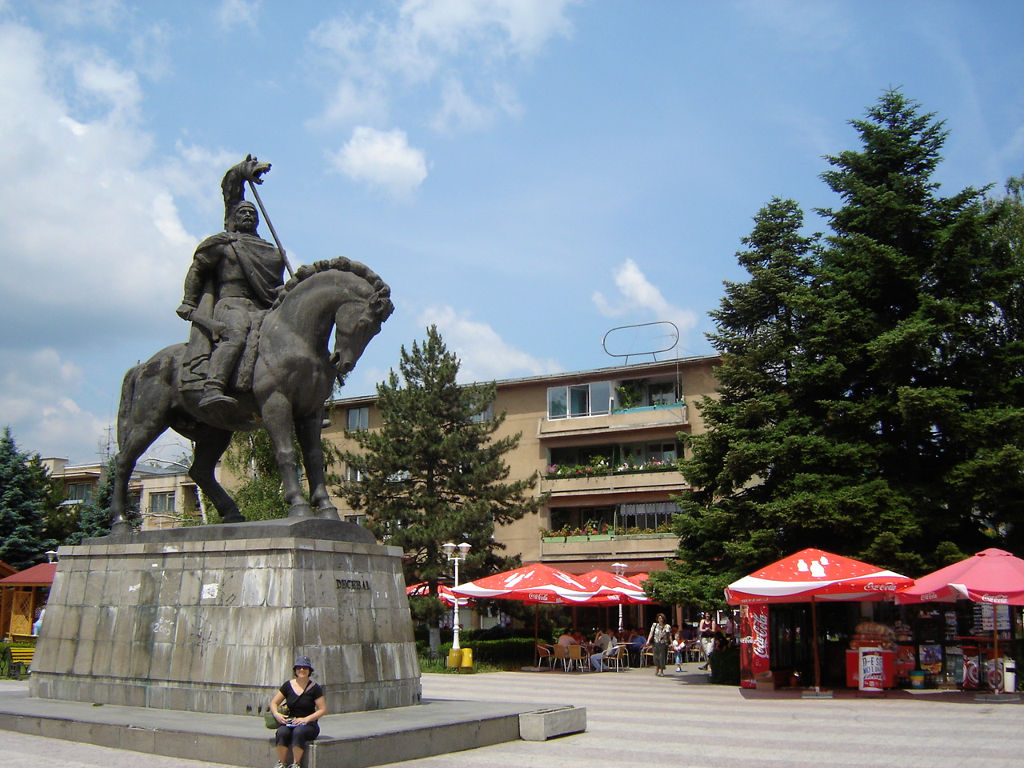
Deva. A town in Romania. The bronze work is amazing.
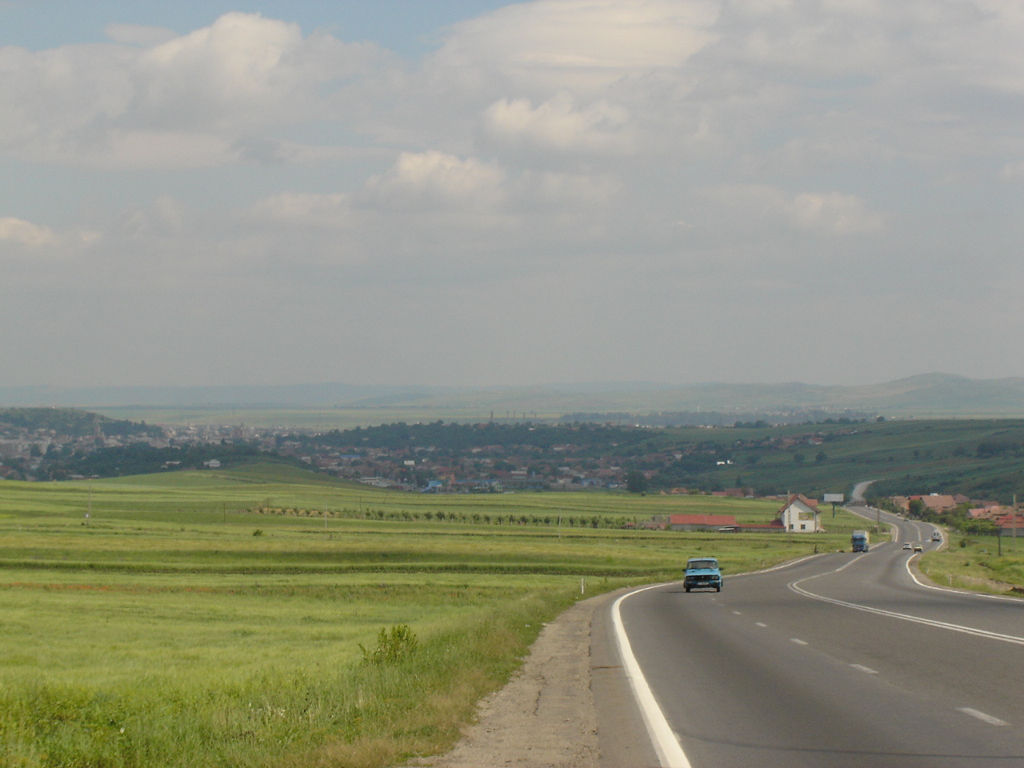
Coming out of Turda. A long climb into a stiff headwind with no shelter.
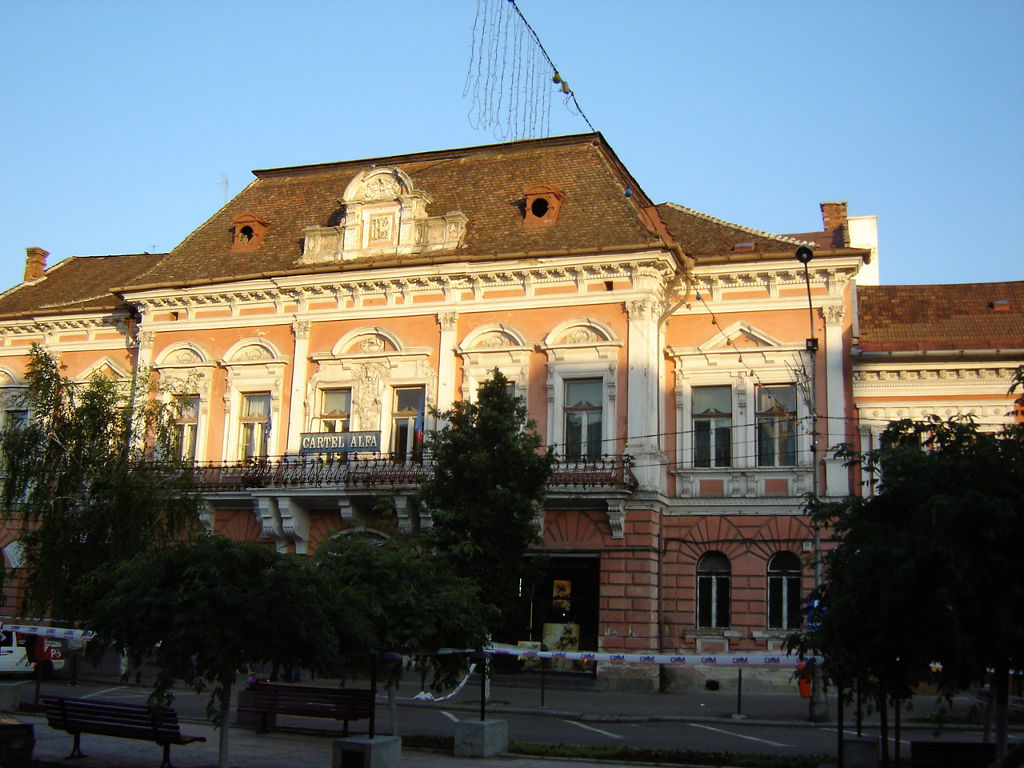
Cluj Napoca. Known as Cluj. This is a real gem of a city. In fact, all of Transylvania has been lovely and Cluj is the gem.
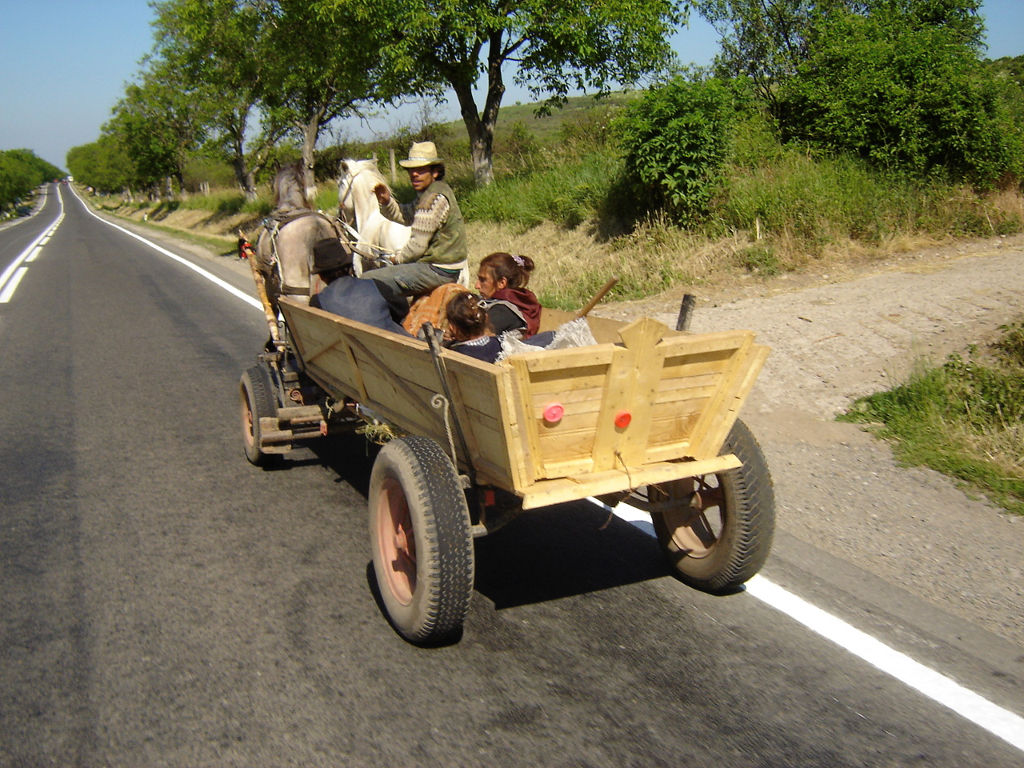
Gypsies on the road to Oradea.
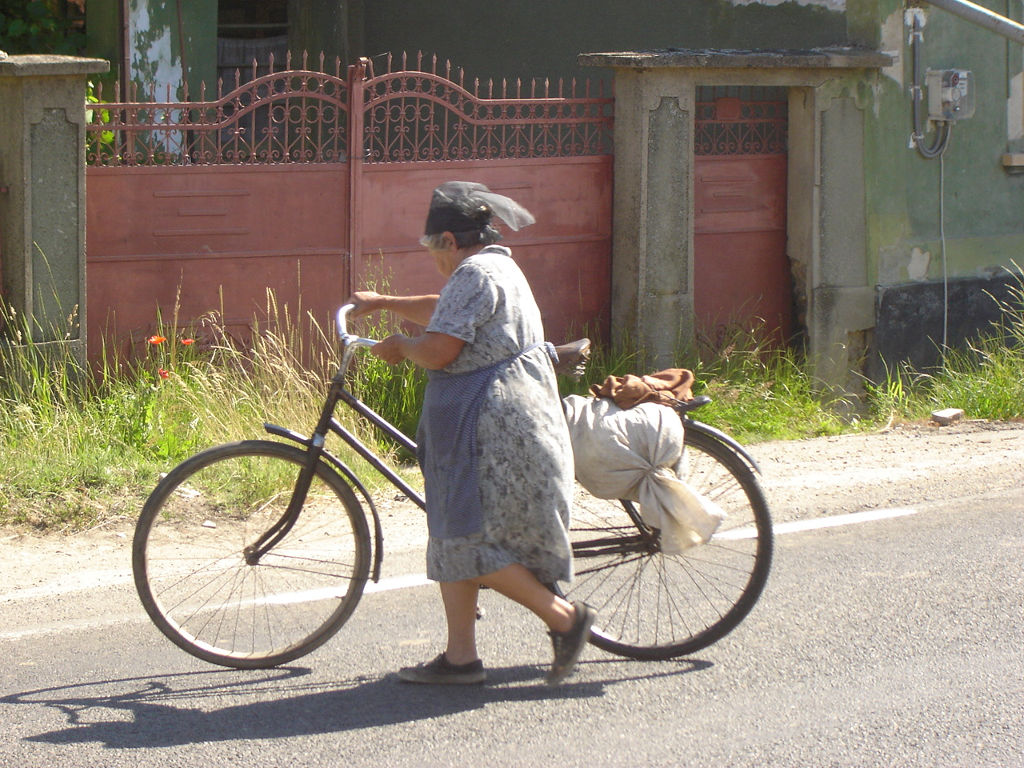
I love a country where old ladies ride bikes.
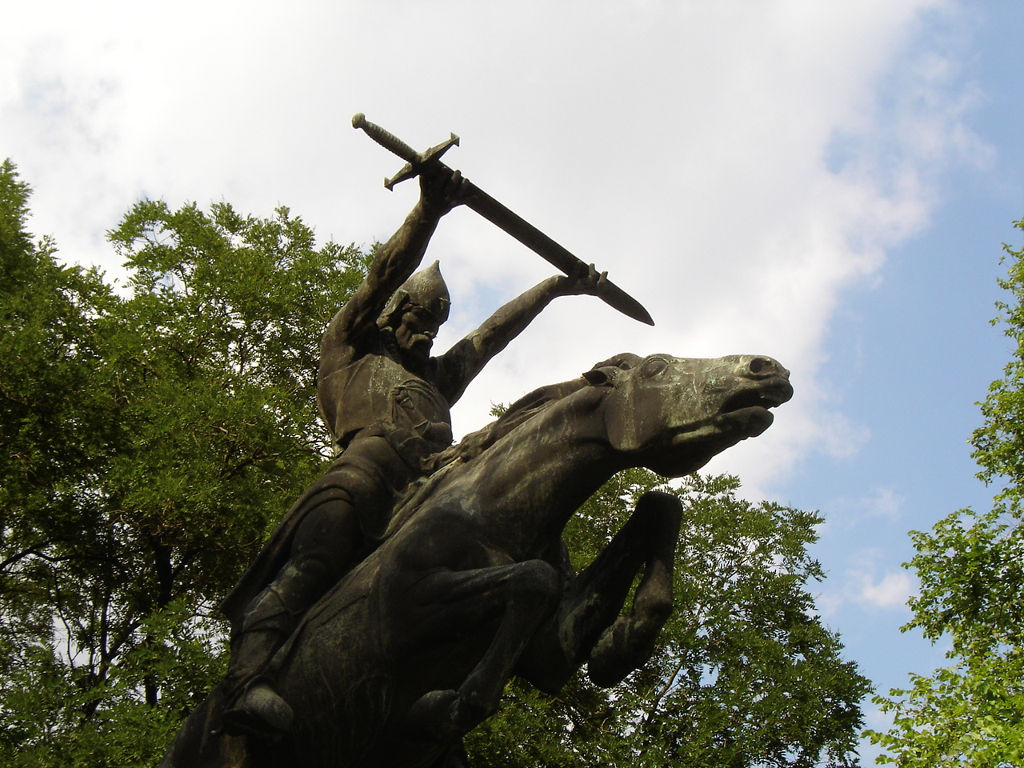
In a small town in western Romania more amazing bronze work.
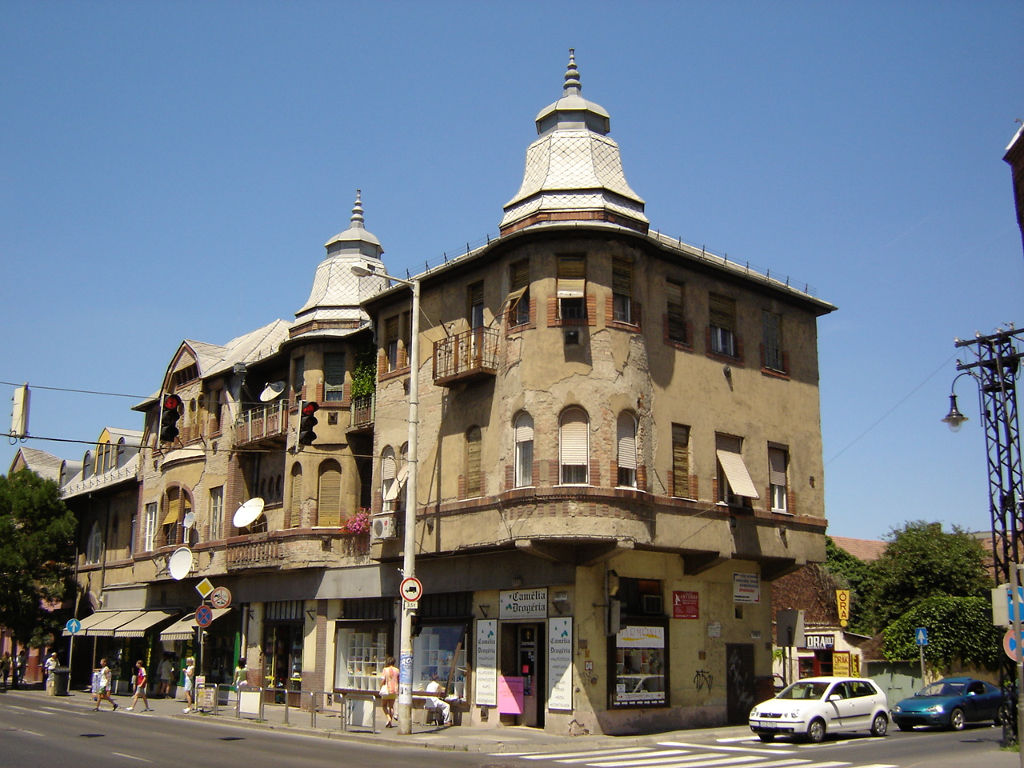
Szolnok in Hungary. This is a good example of an isolated bit that did not get obliterated in WW2. It is surrounded by post-war buildings.
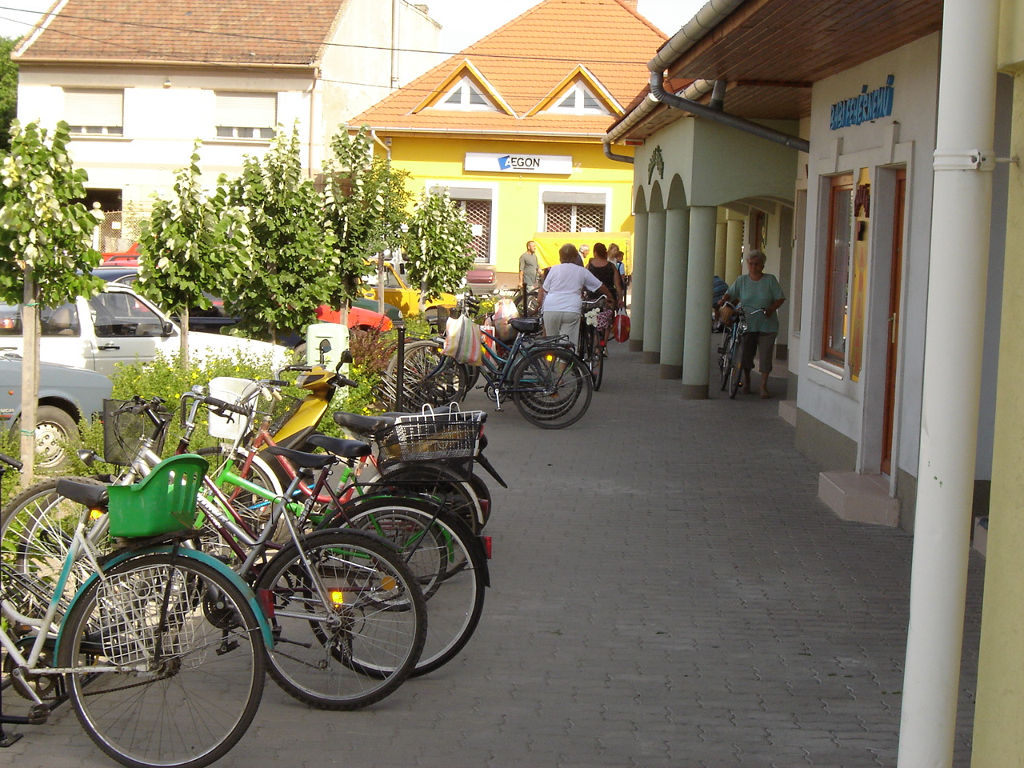
We are coming back into Budapest. It is always a good sign when there are lots of bikes parked outside the shops.
A ride from Bangalore to Madurai through Mysore, Coimbatore and Trichy. This is heartland South India. From Madurai we get the train back to Bangalore as there is no international airport at Madurai (in 2004).
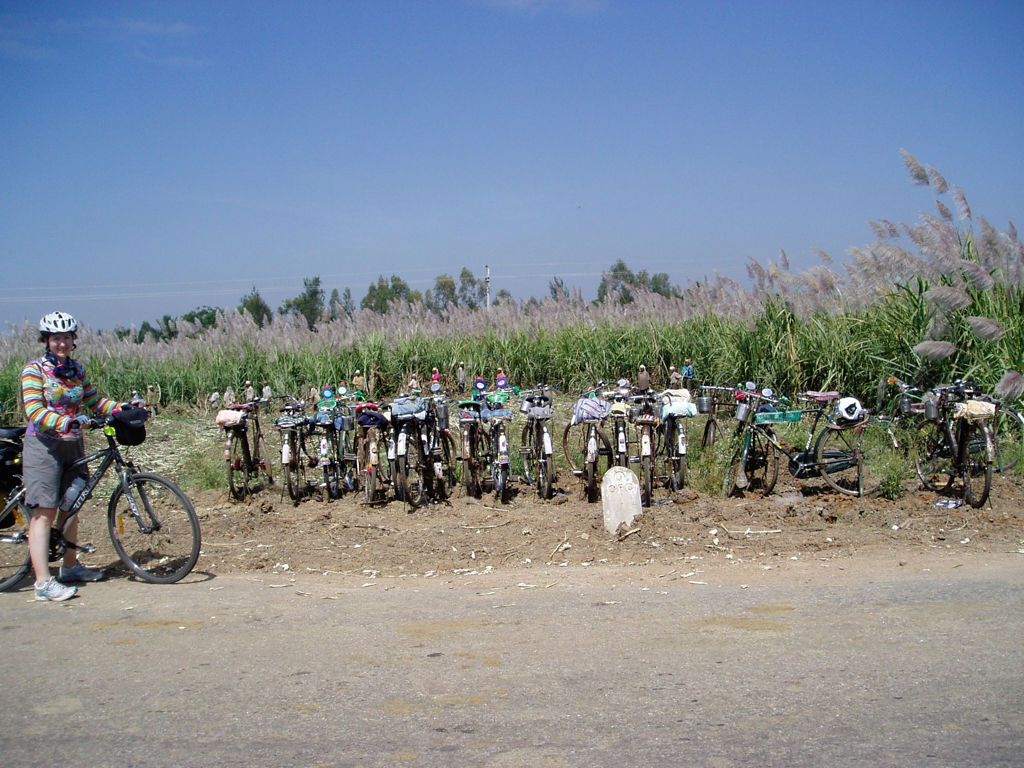
It is 2004 and bikes are THE way to get to work in rural India. Sadly, motor bikes are set to take over.
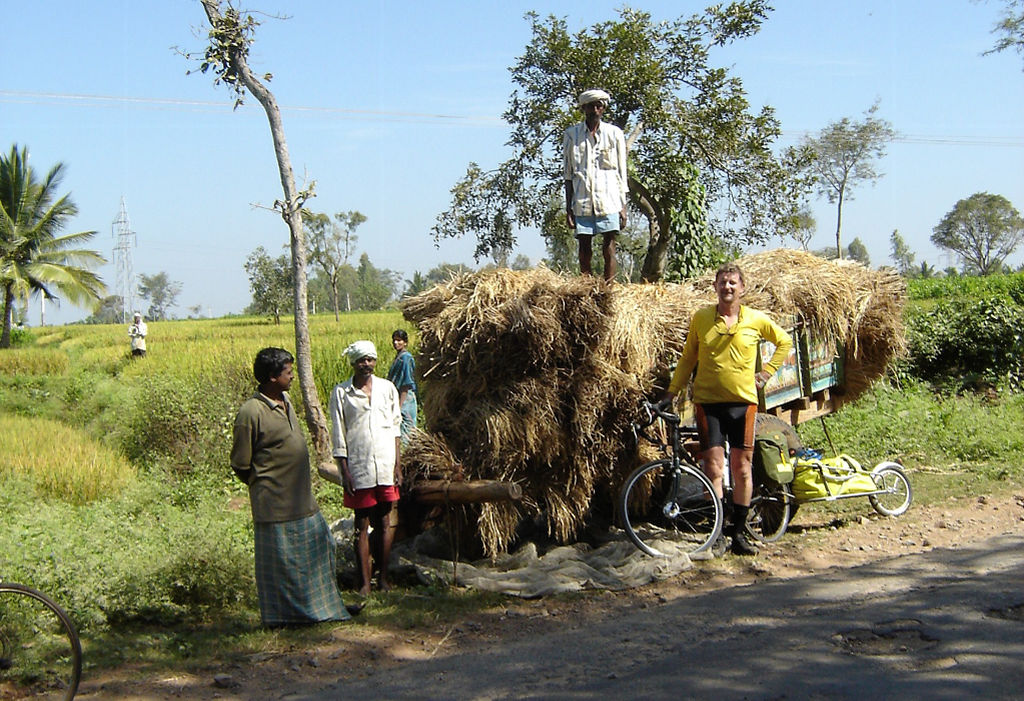
Road to Mysore. They are scything the rice and bundling it and carting it to a central location for threshing.
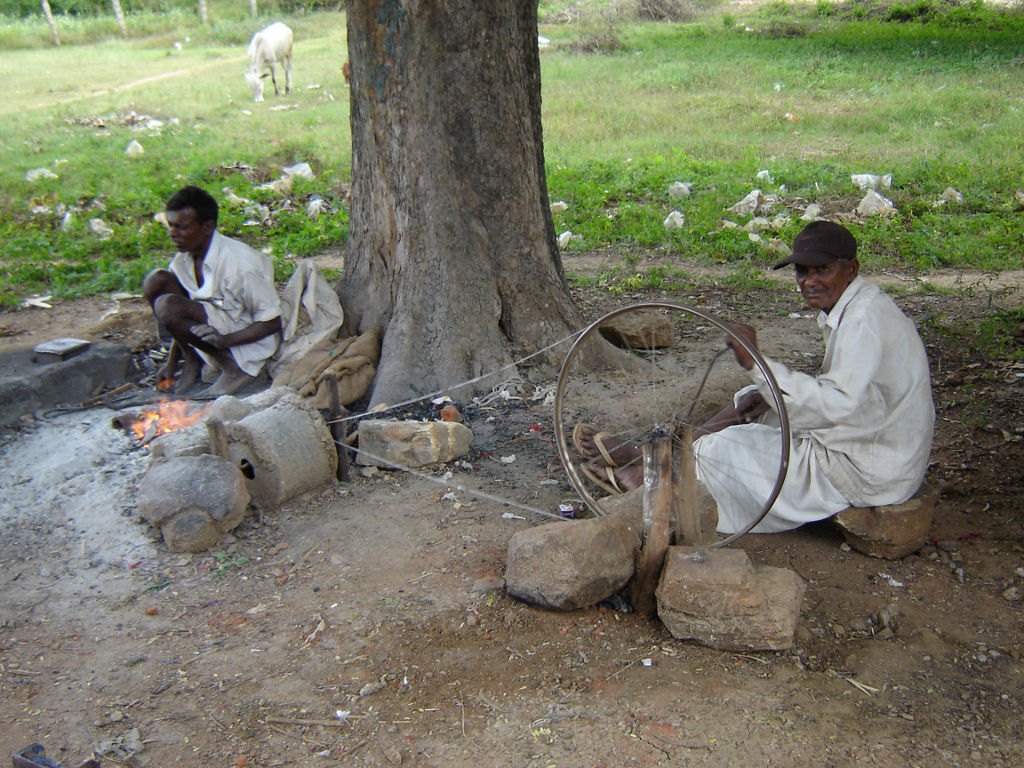
A bike wheel provides gearing for a small furnace. The wind provides oxygen to make the fire hot enough to make the iron red hot. It is then beaten into a scythe shape.
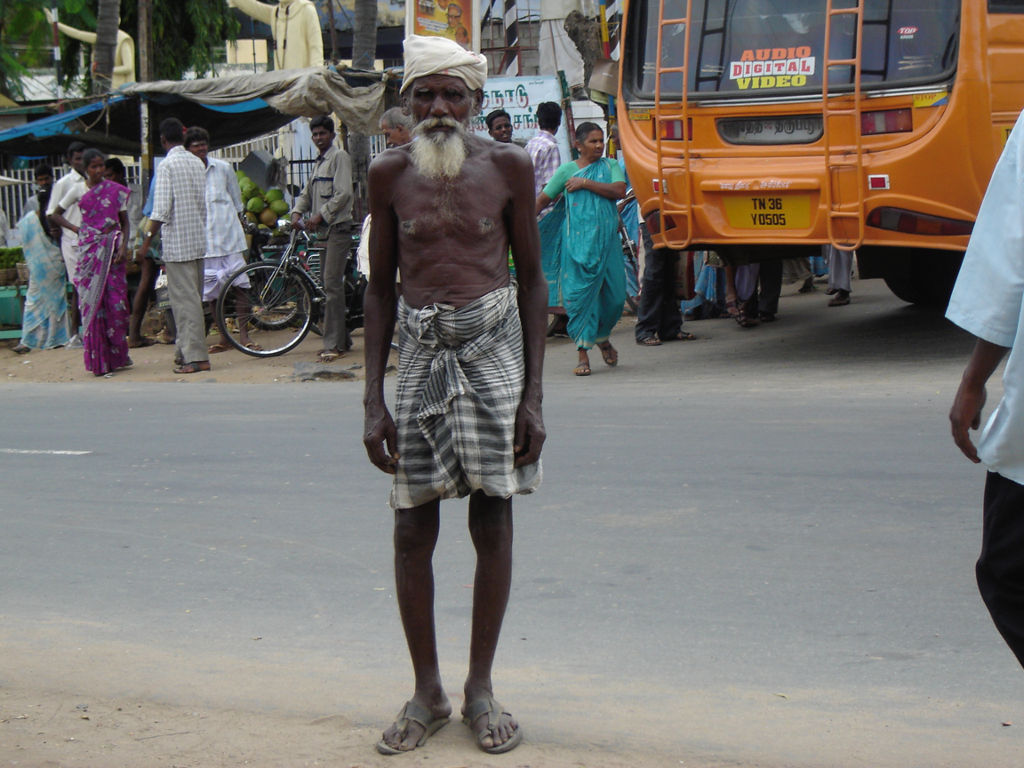
He is as fascinated by me as I am by him.
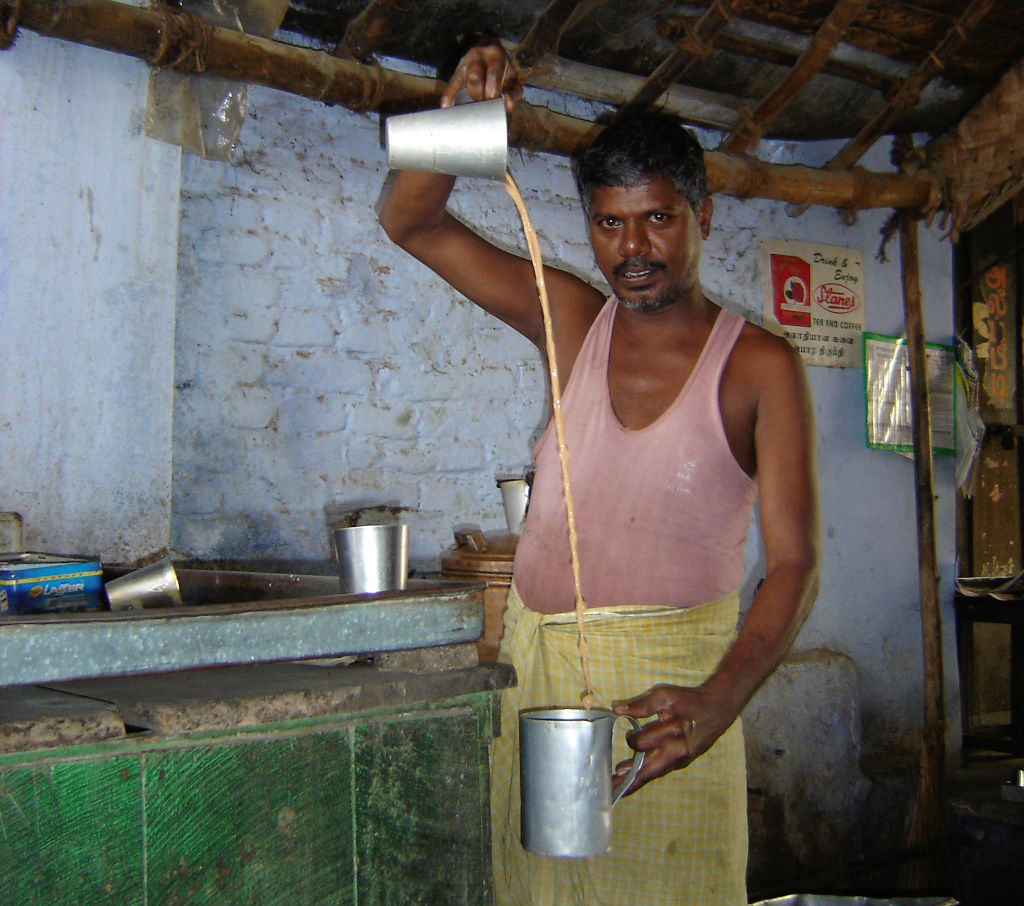
The tea is brewed in milk over a stove and then passed back and forth with great speed and dexterity to aerate it.
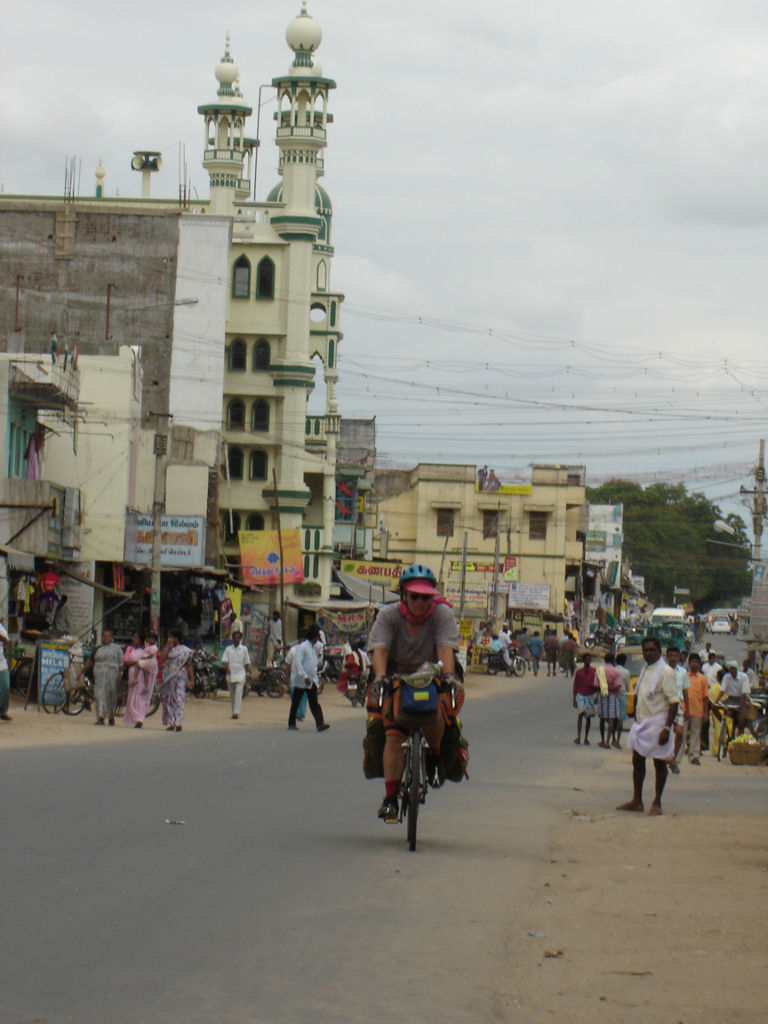
Vikki arrives in the first town for the day.
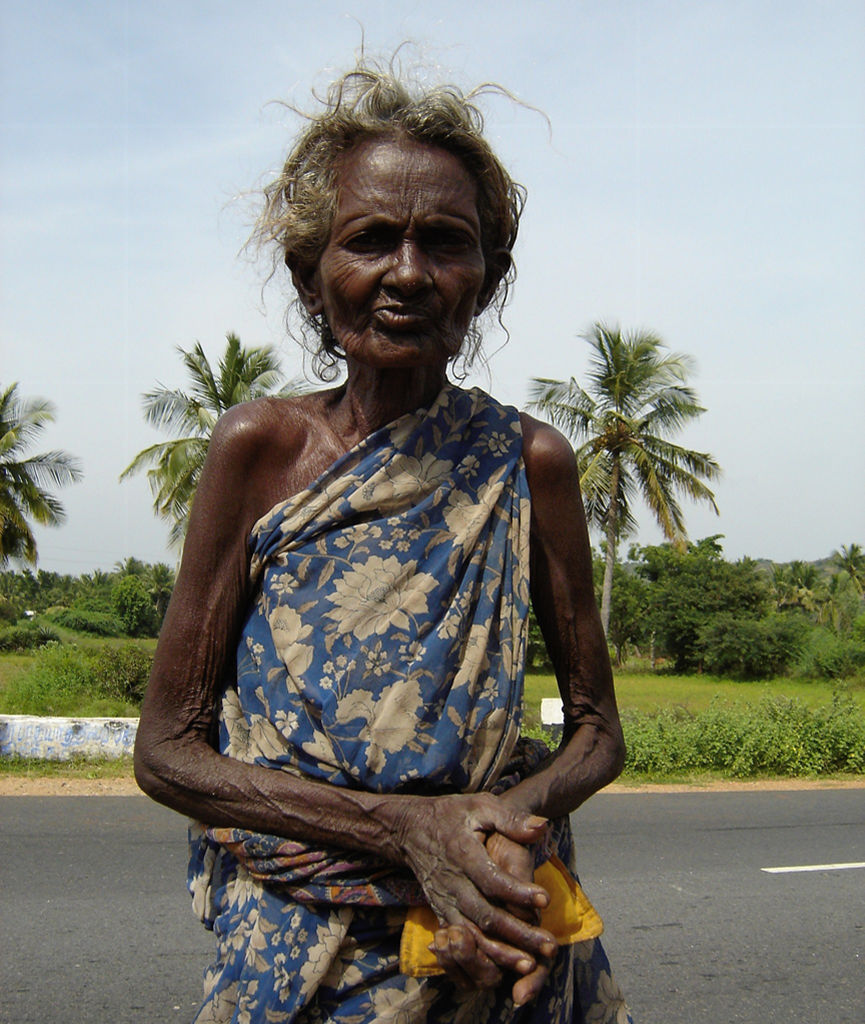
Woman along the road to Dindigul.
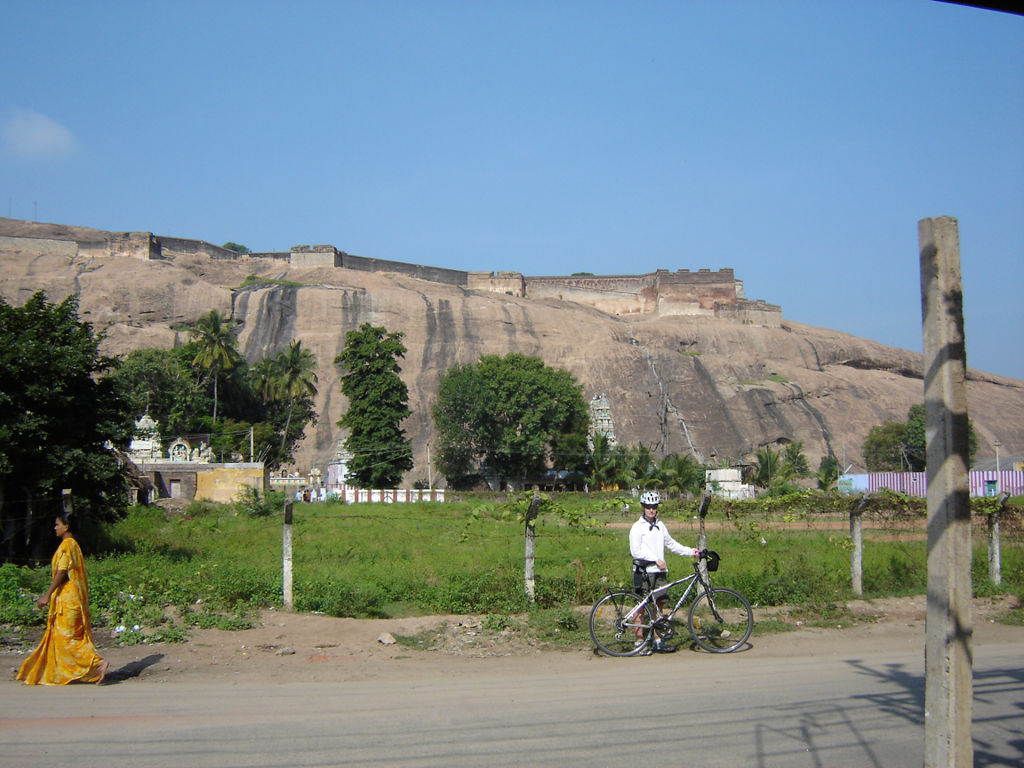
Carol in front of the Dindigul monolith with fort atop.
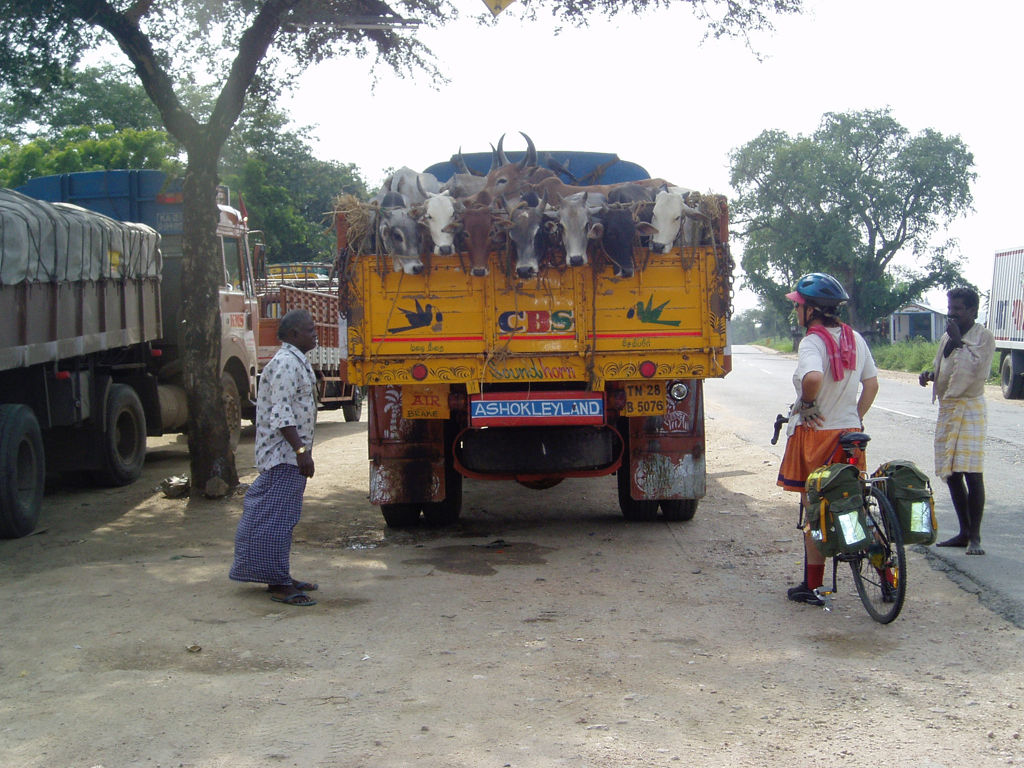
Cows in a truck.
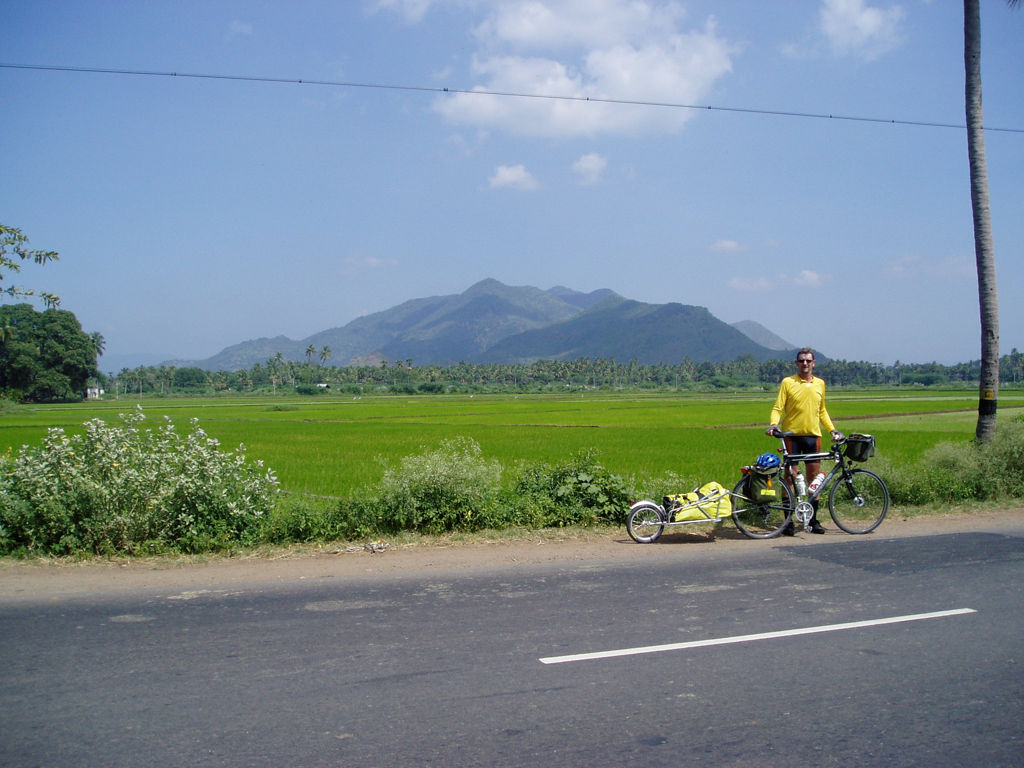
Noel with the BOB trailer. Great to have on a tour but a bit hard to fly with.
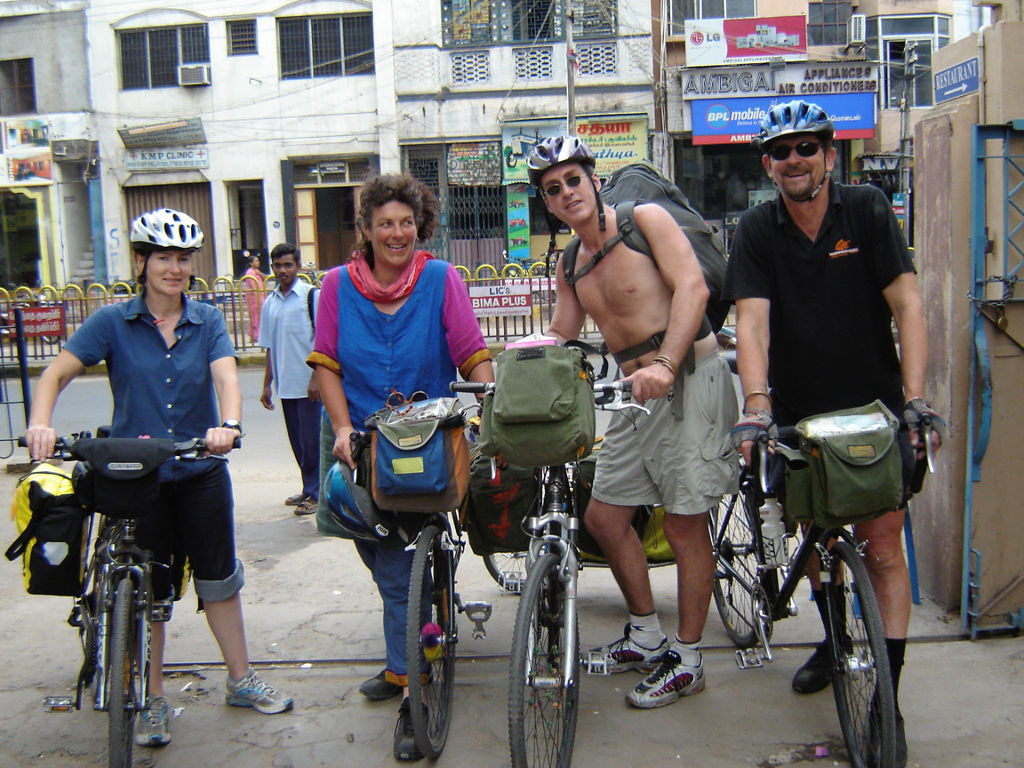
We are on the ride to Madurai Train Station, all pretty pleased with our experience in Incredible India.
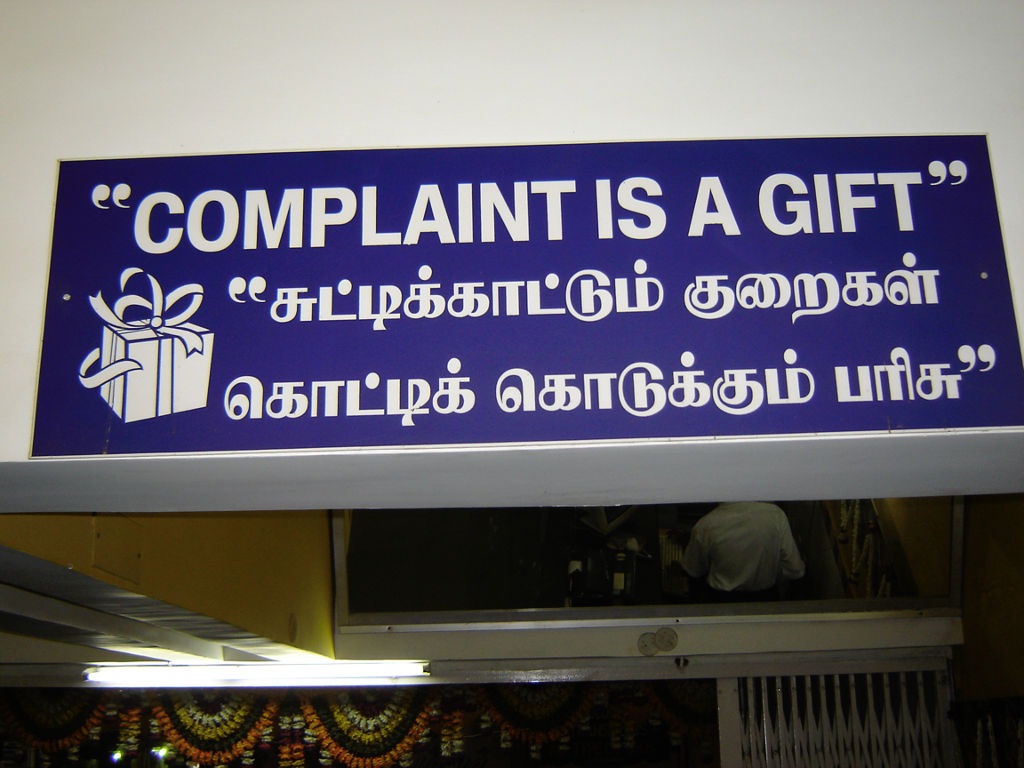
Complaint is a Gift. This is in a pure veg hotel. (Hotel being a name for a place where you eat)